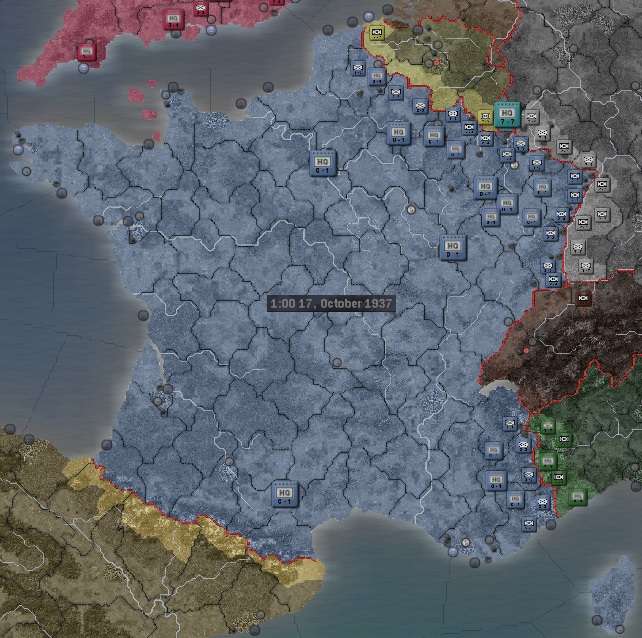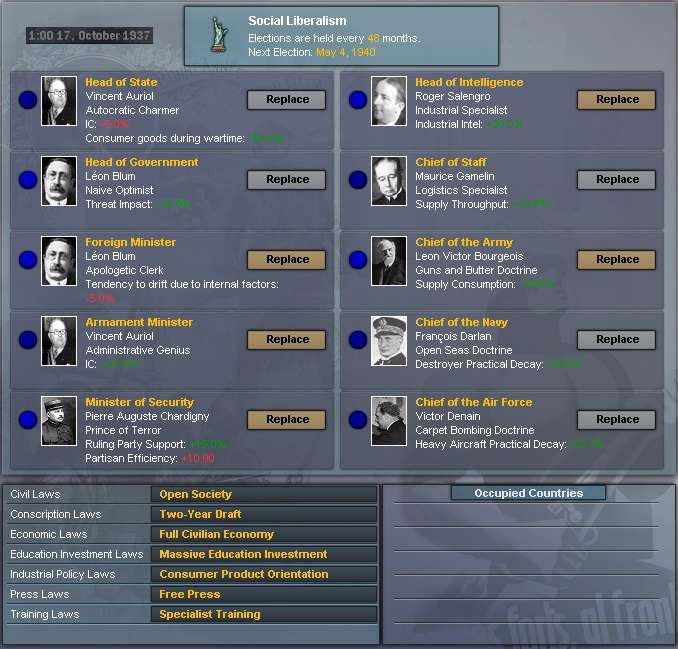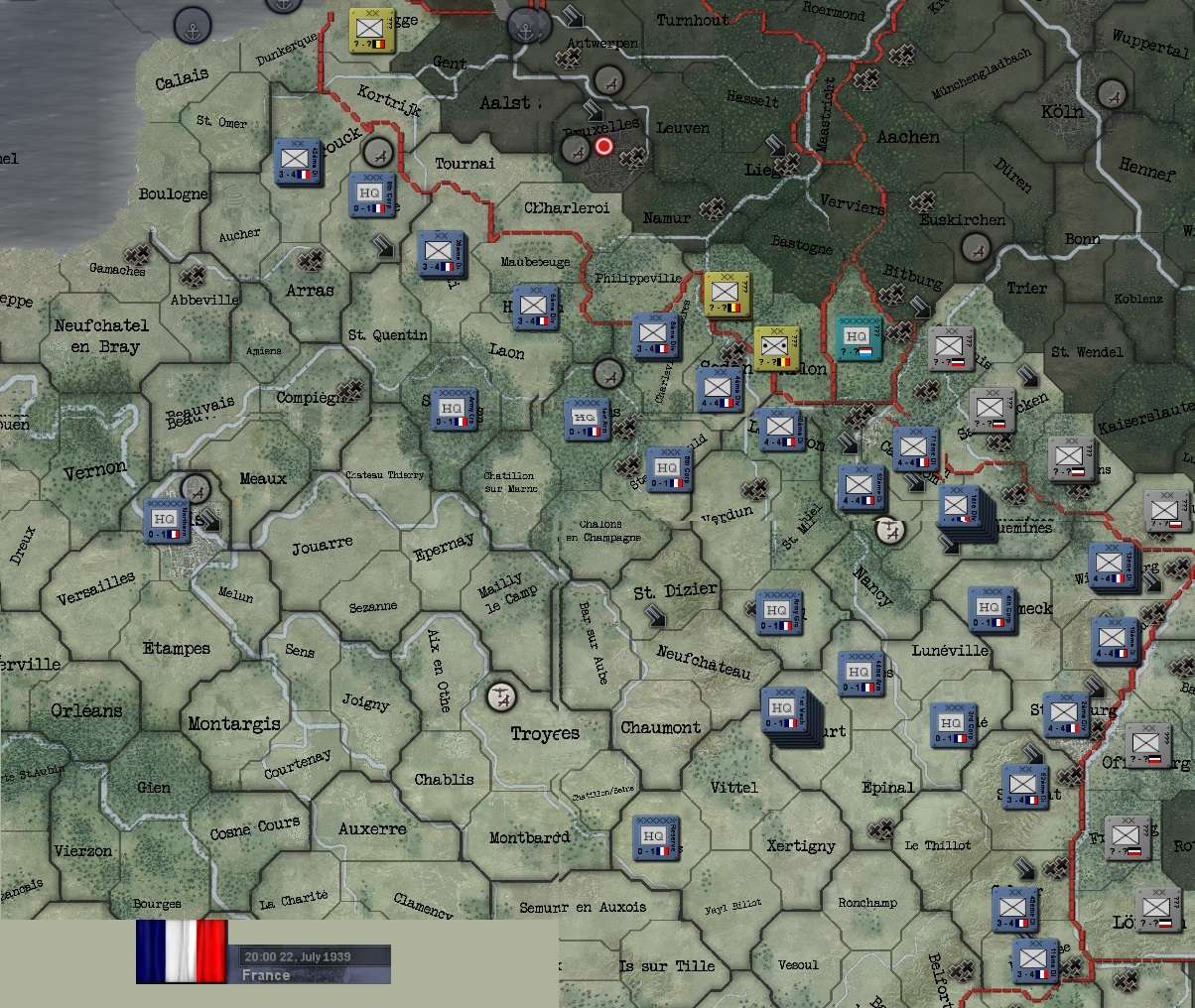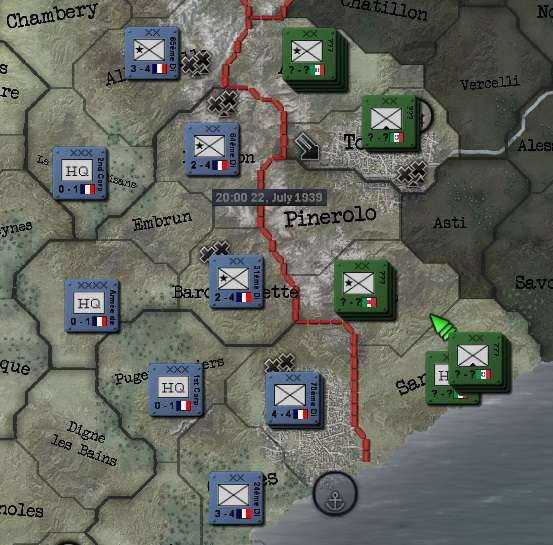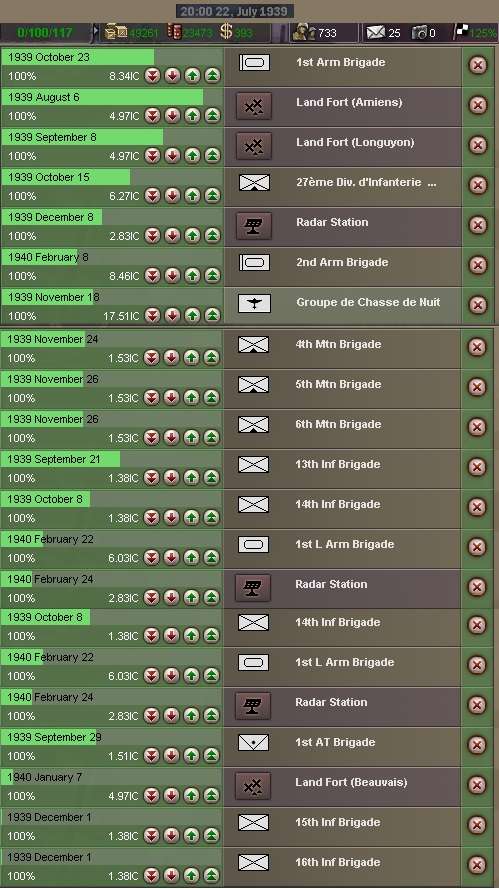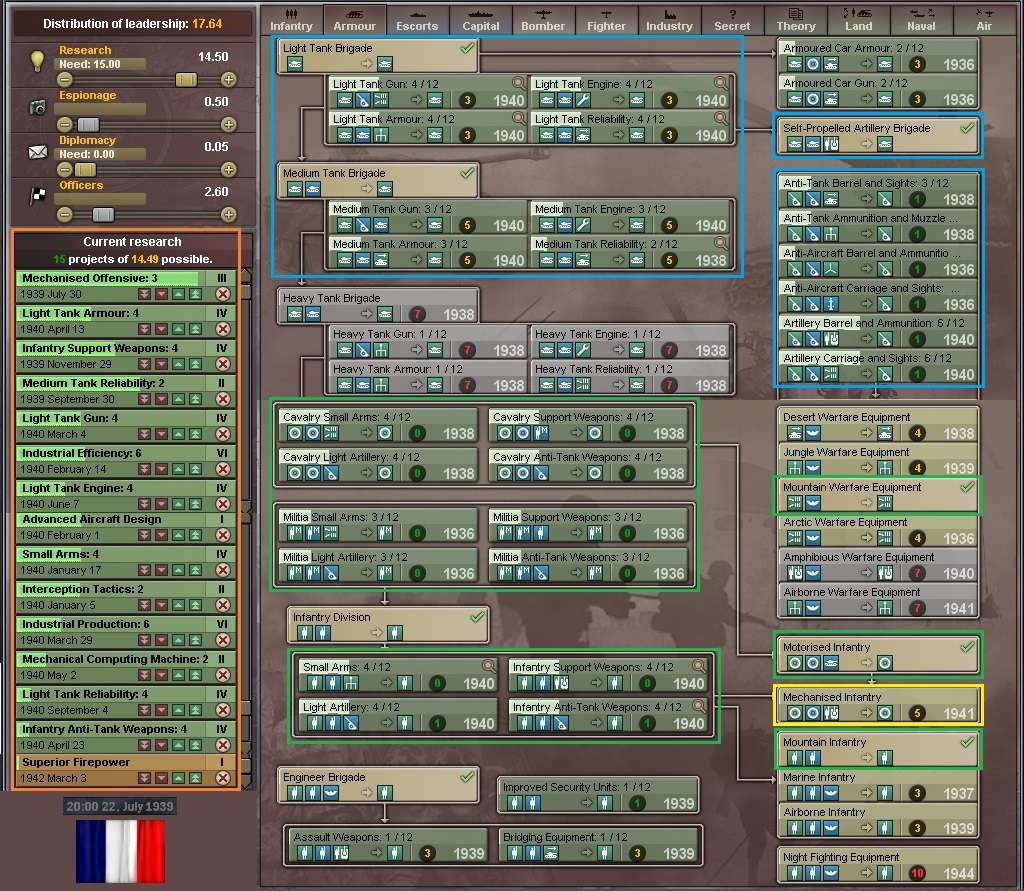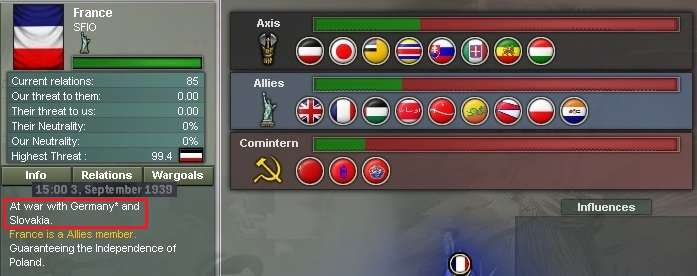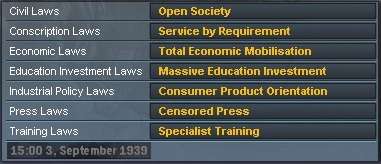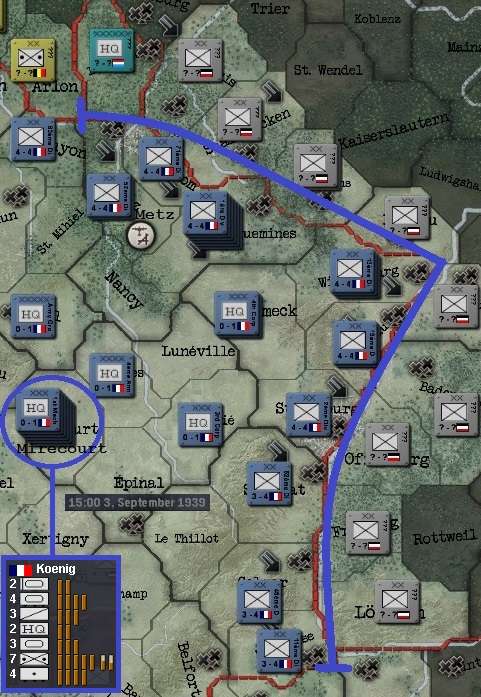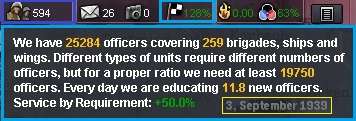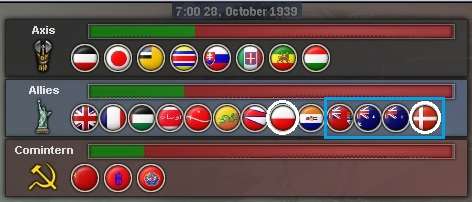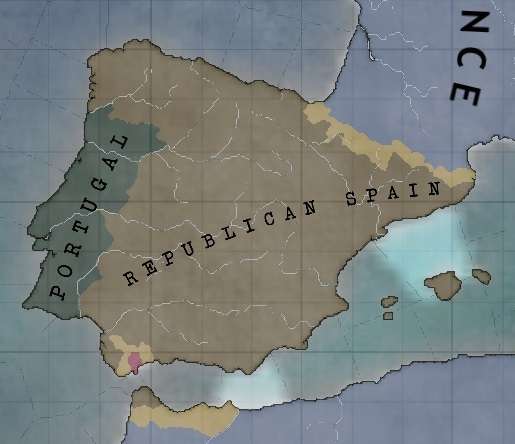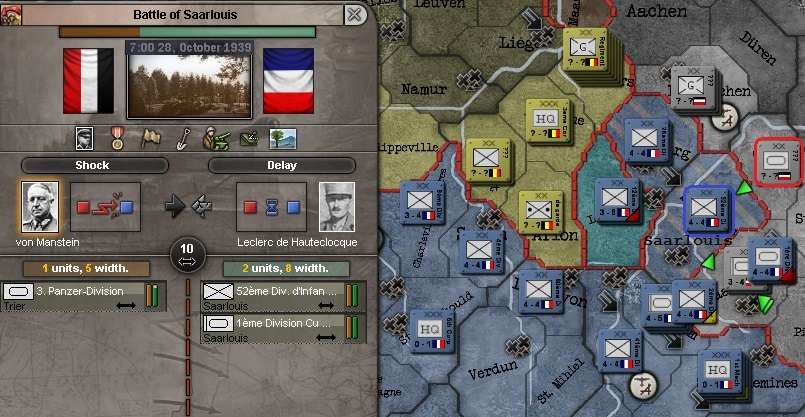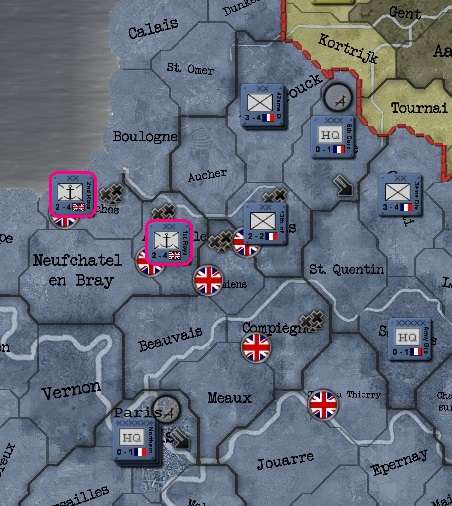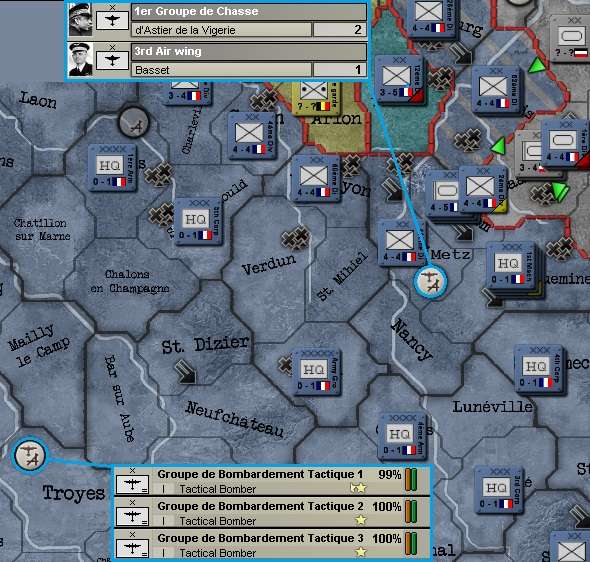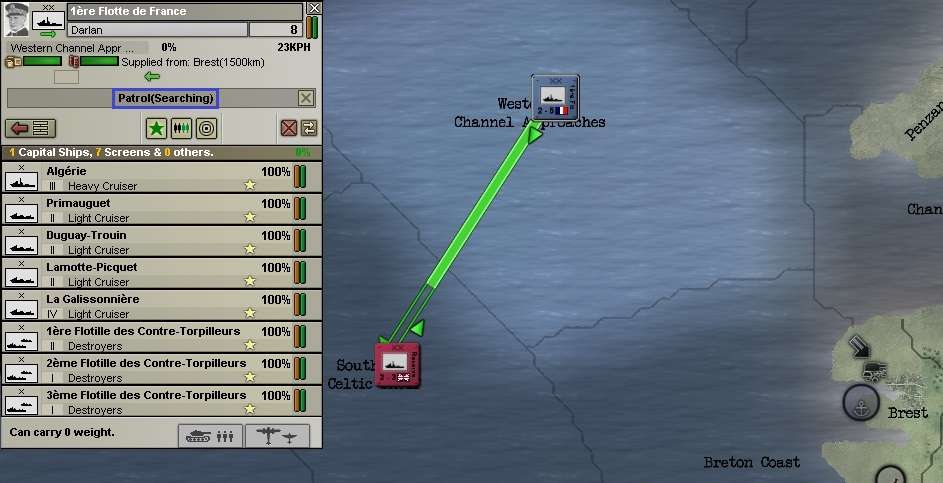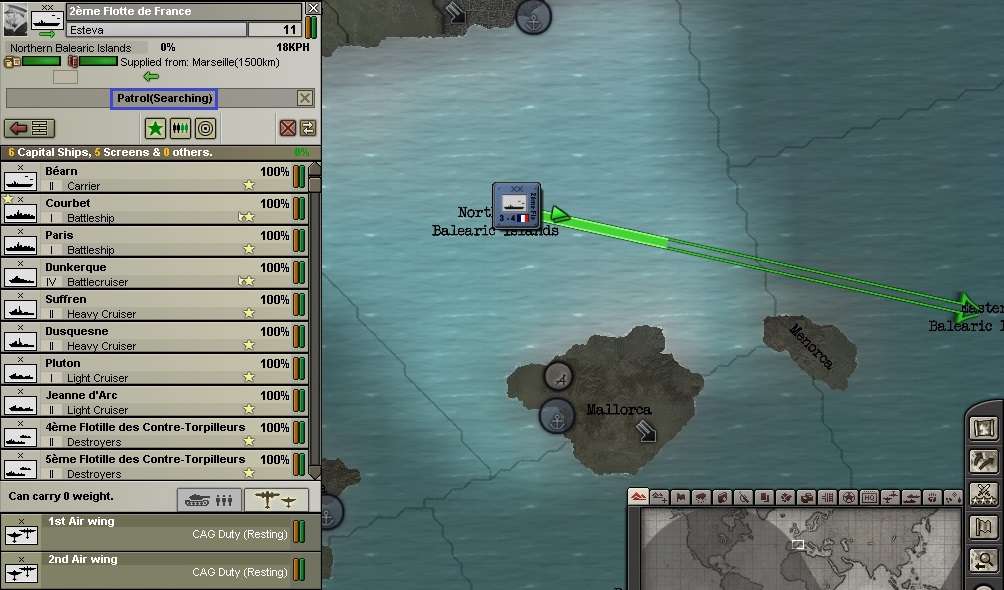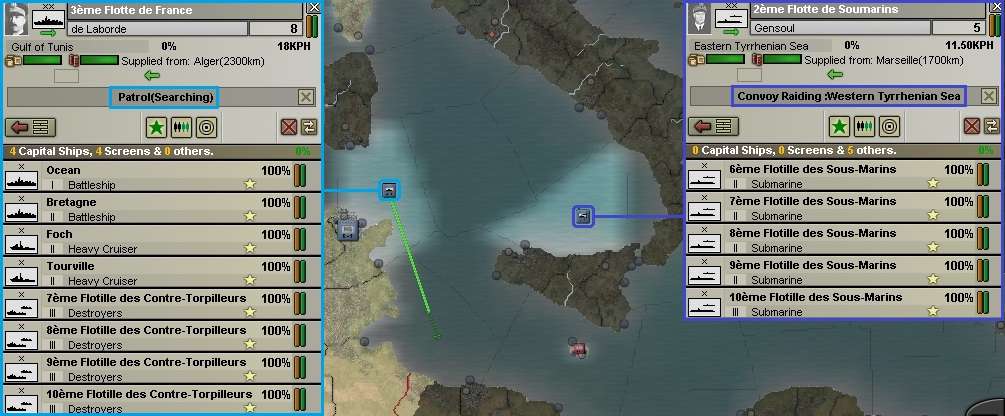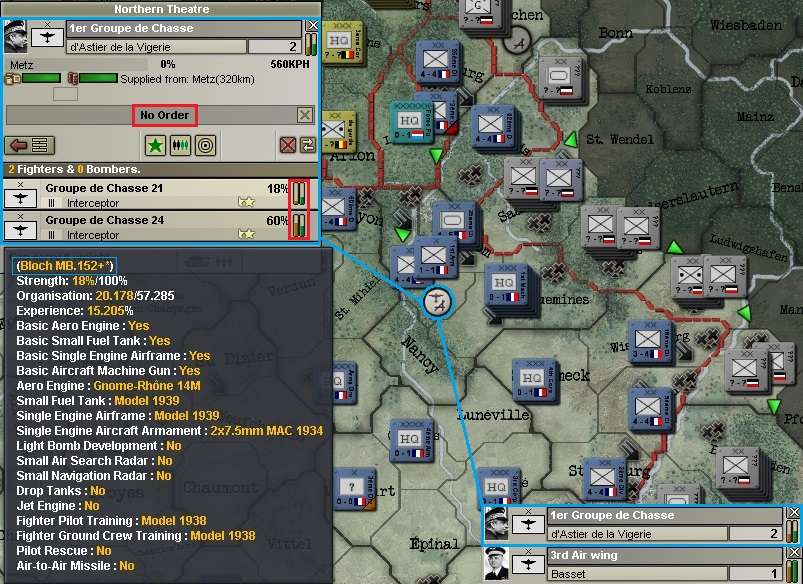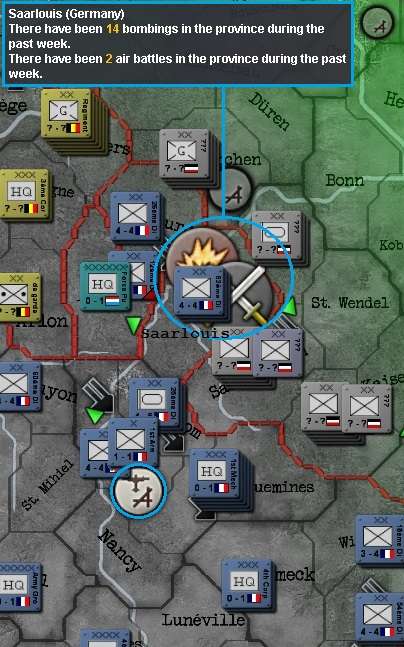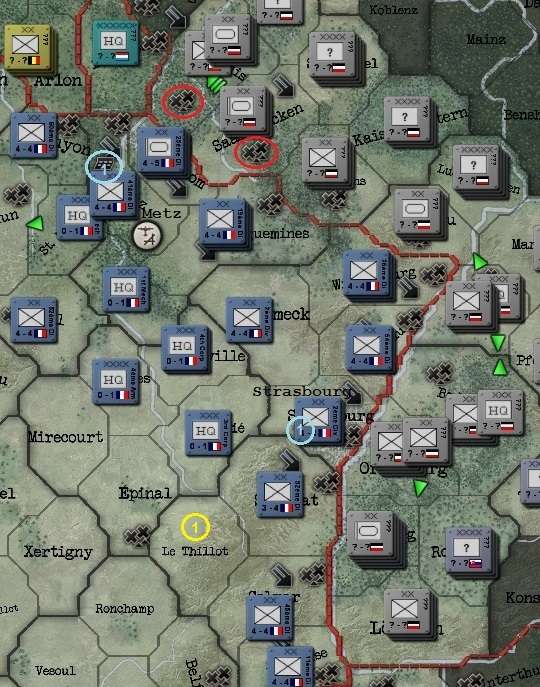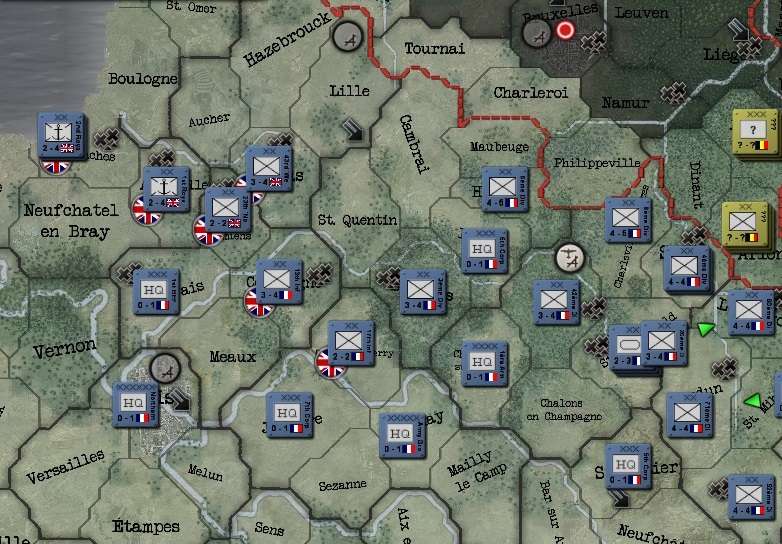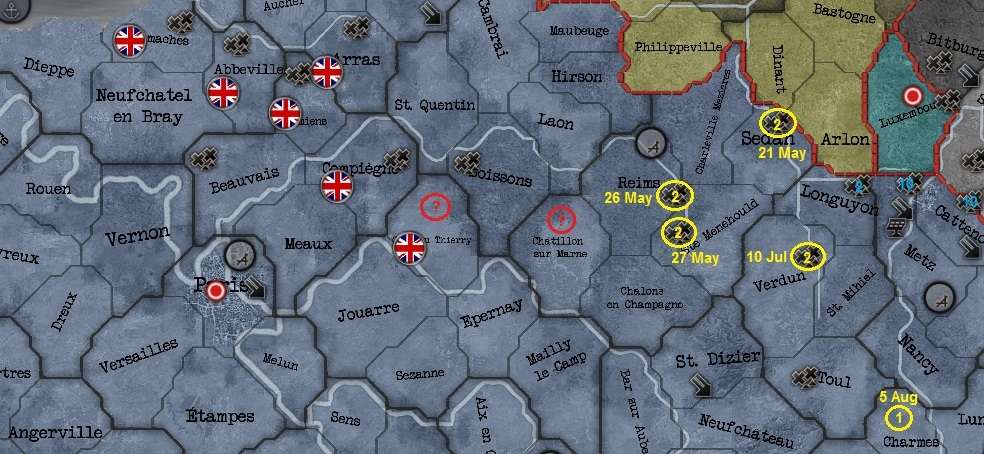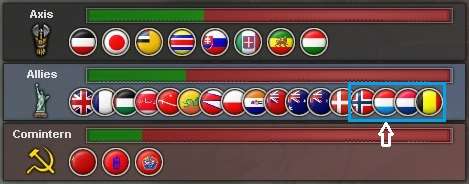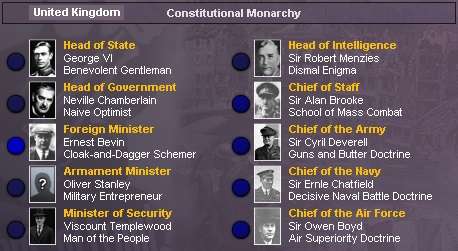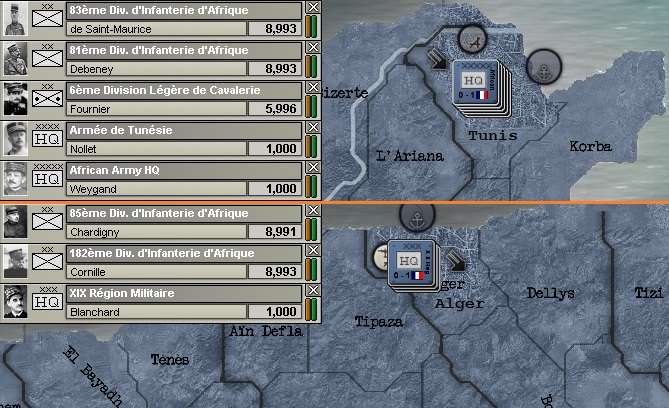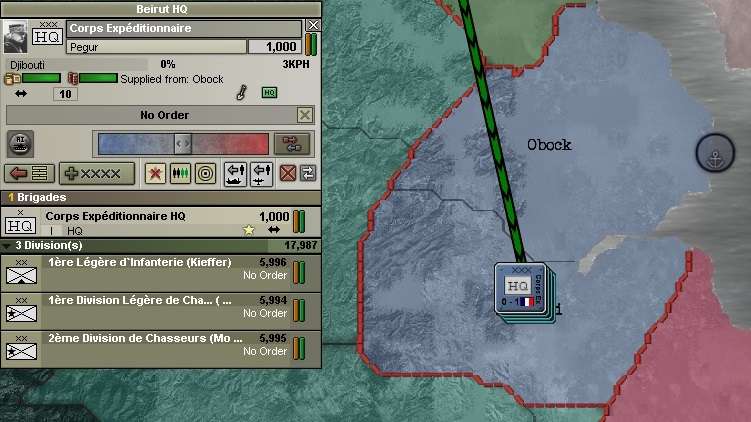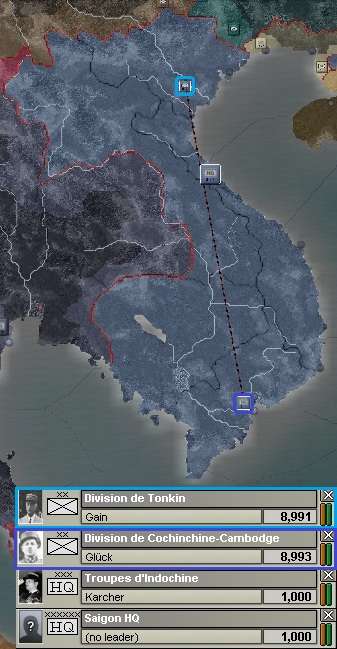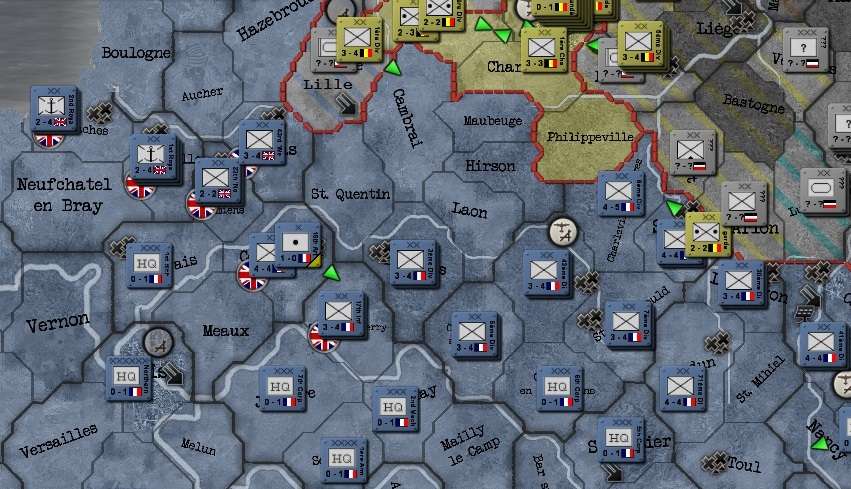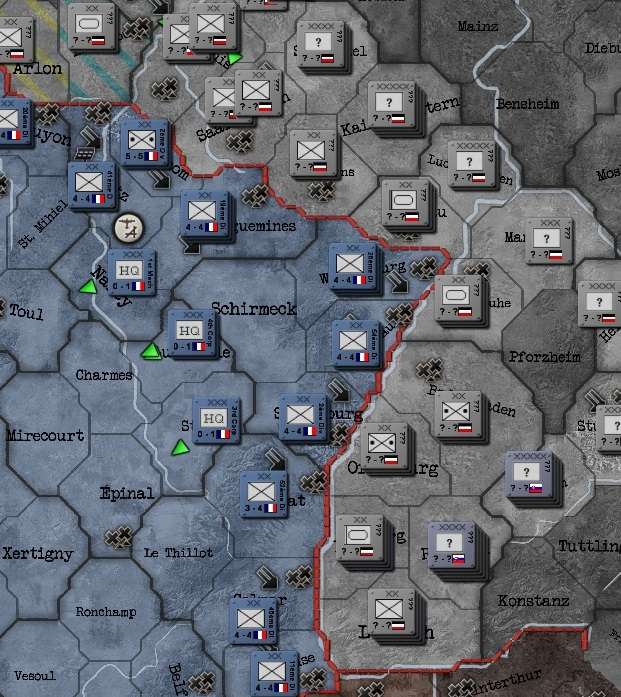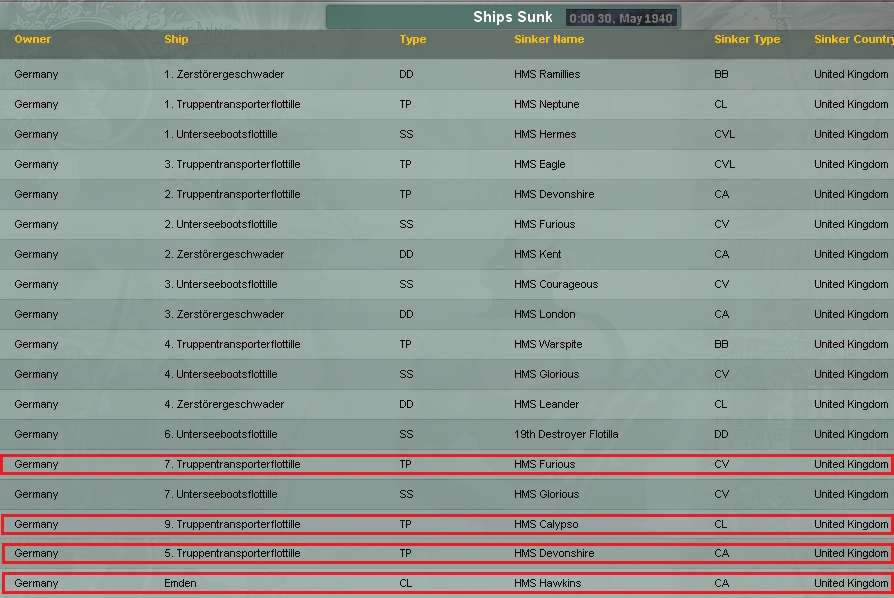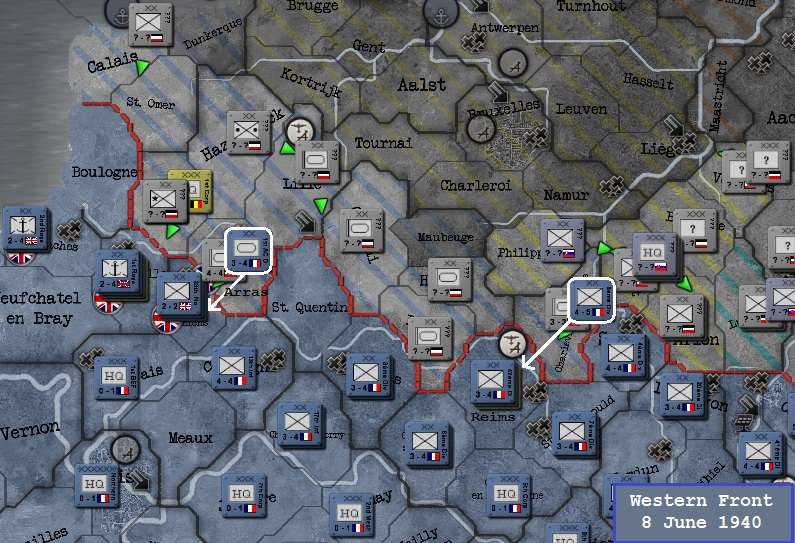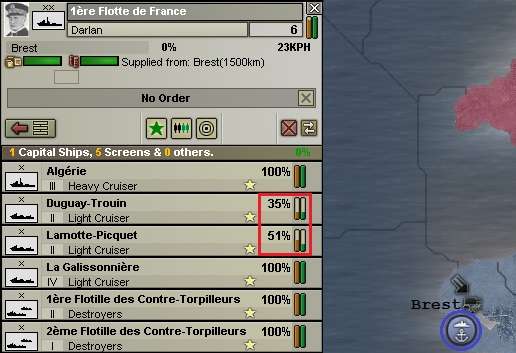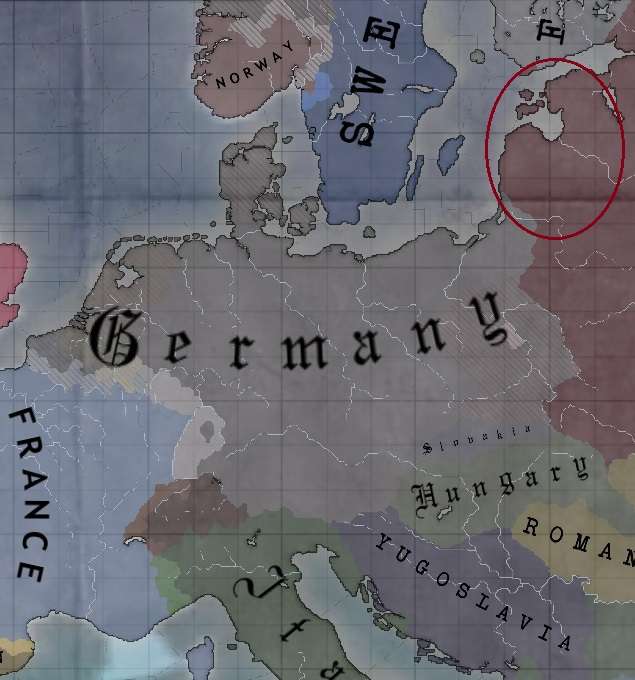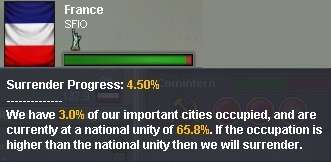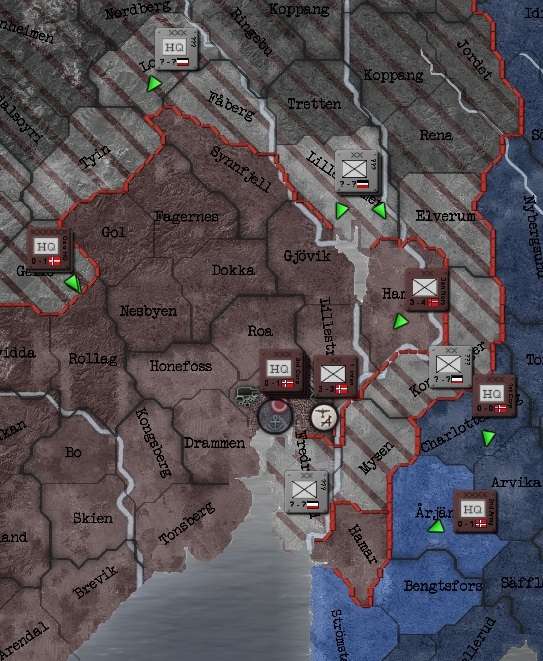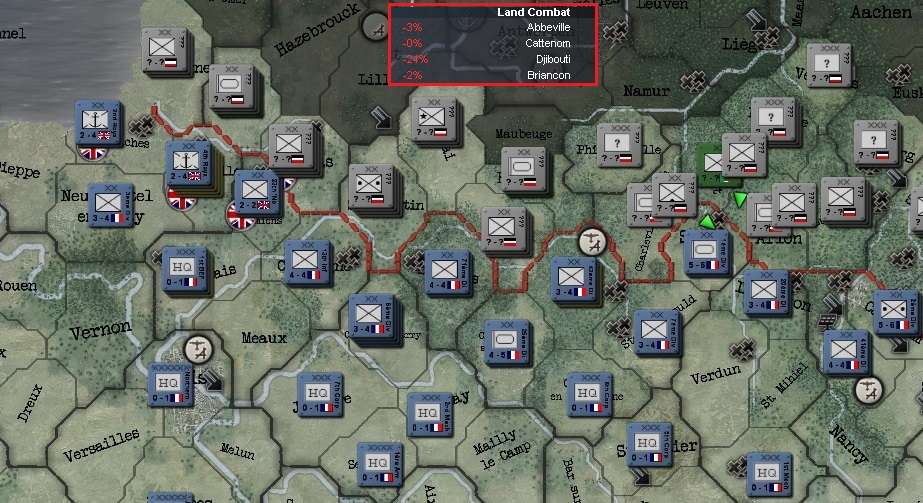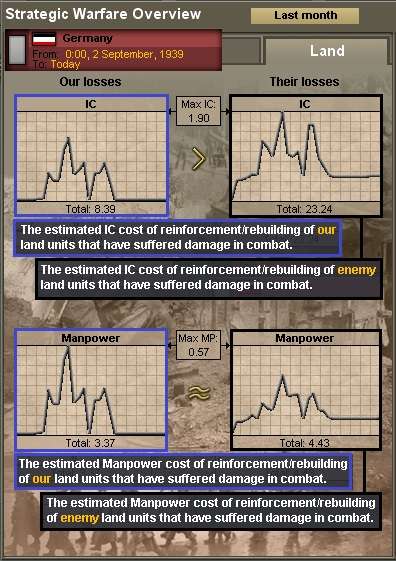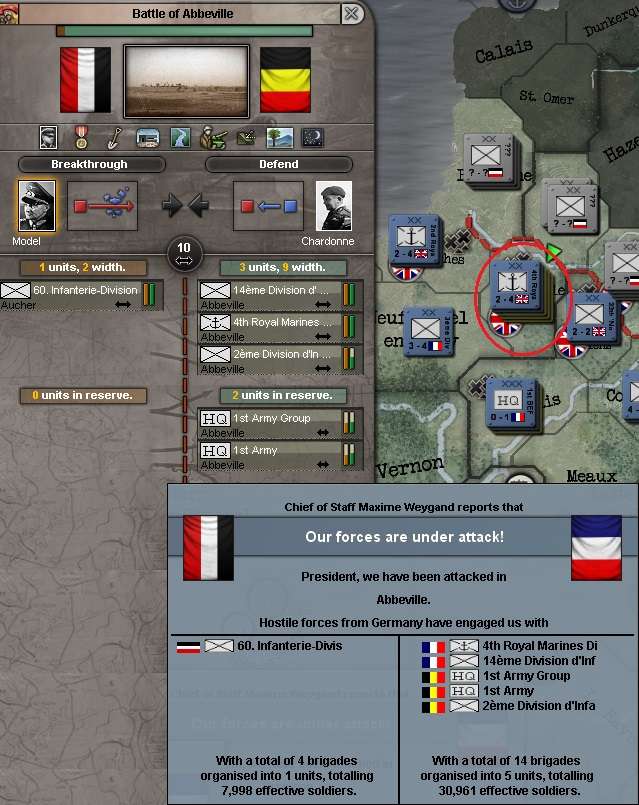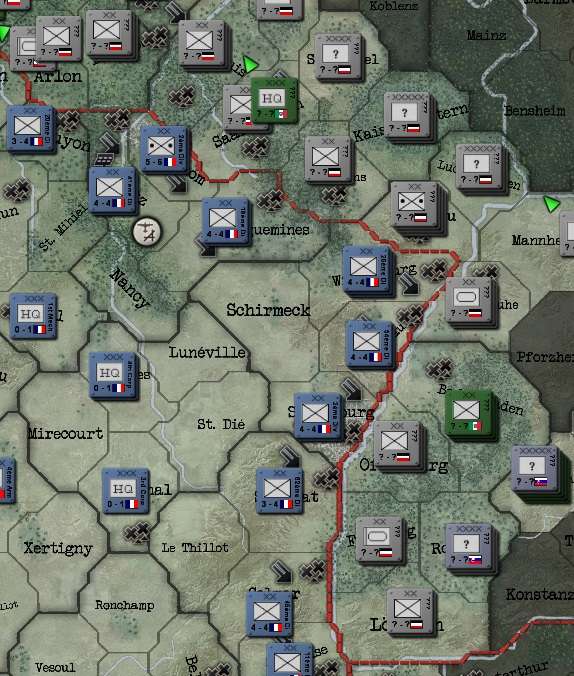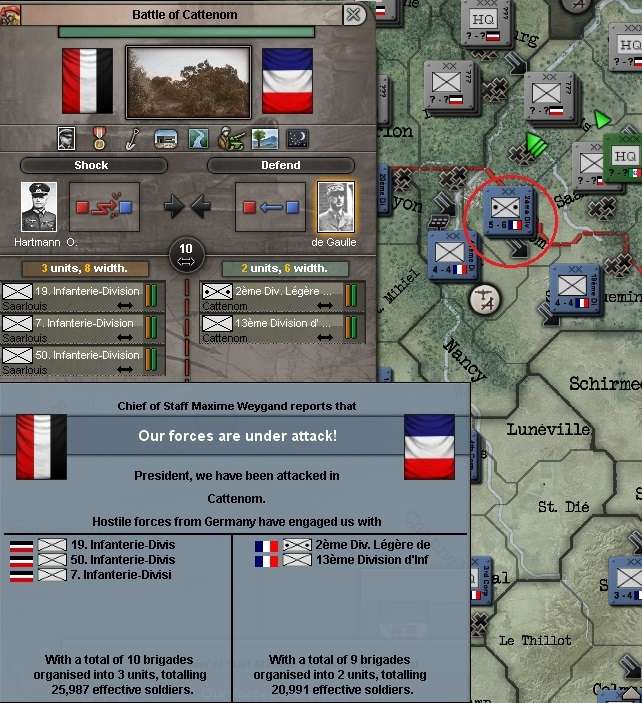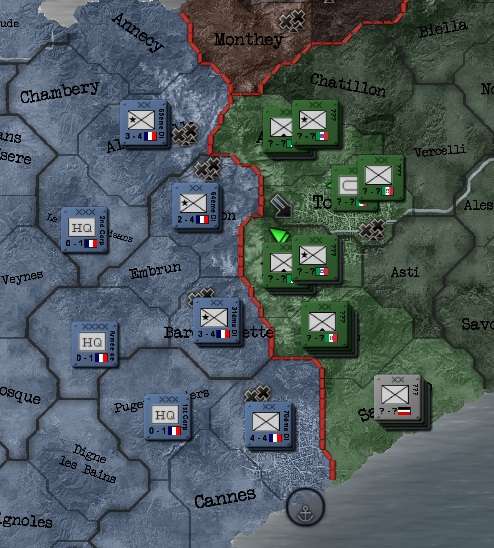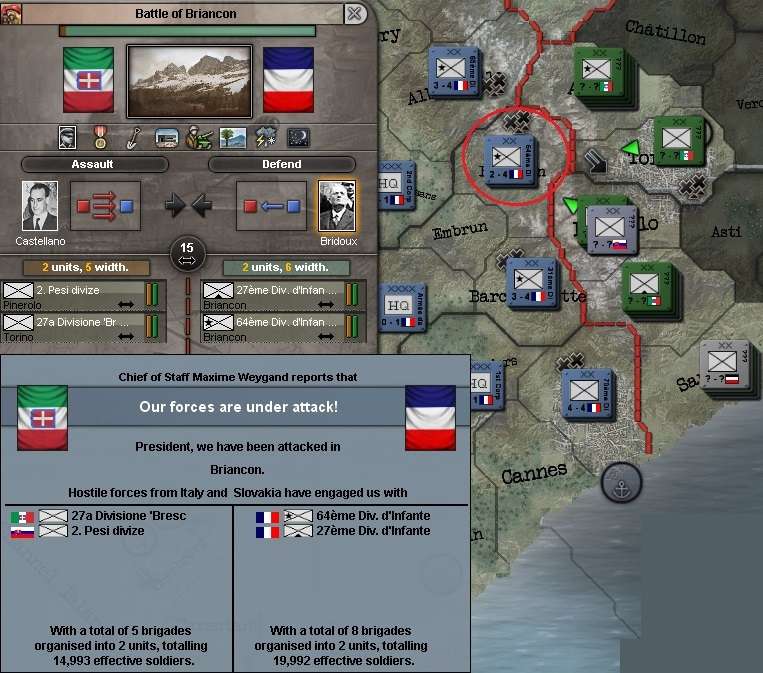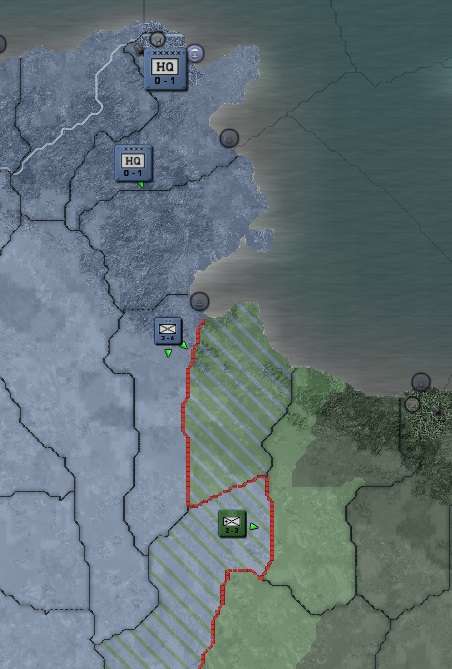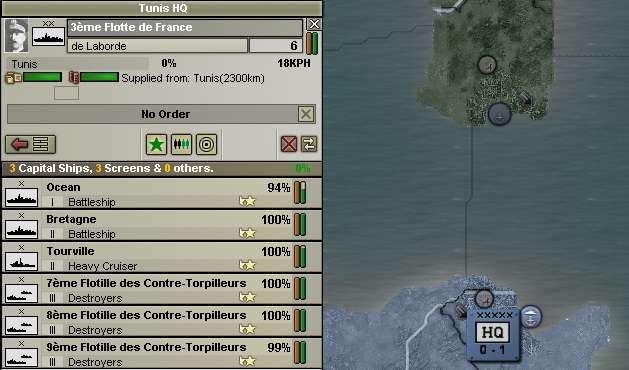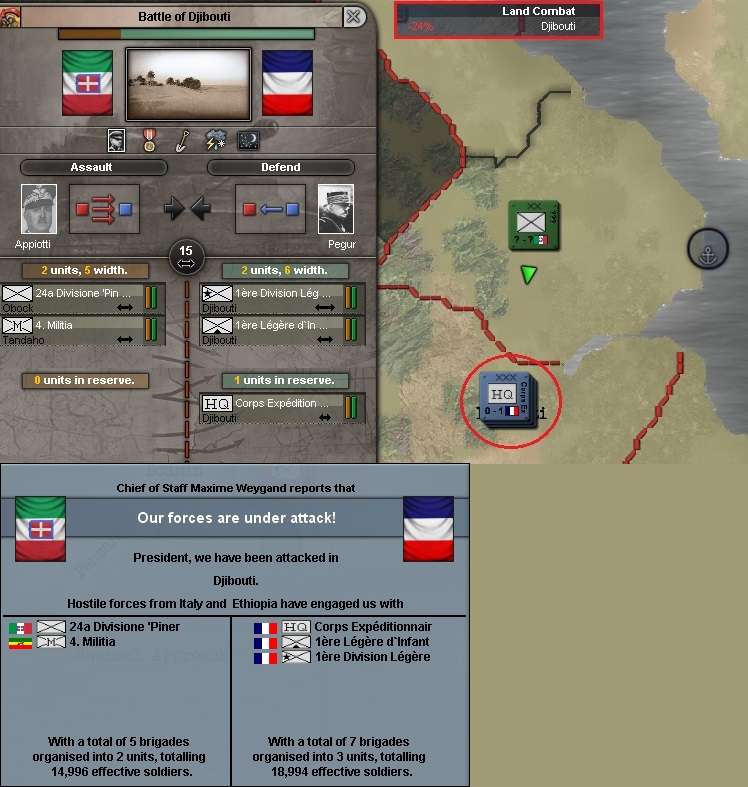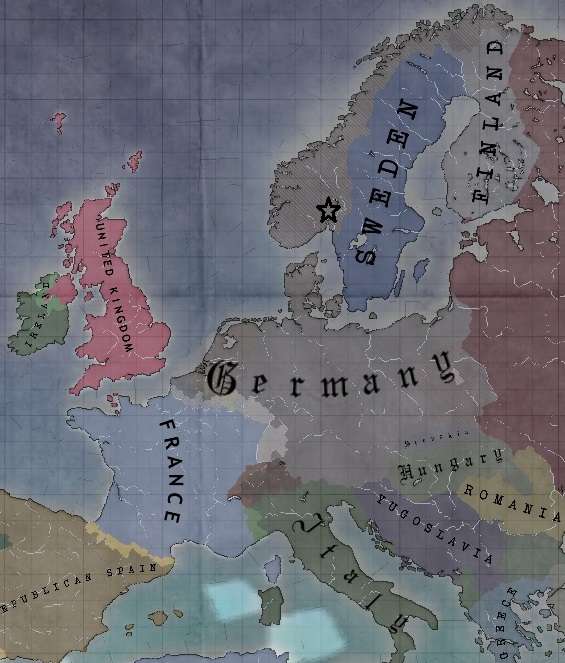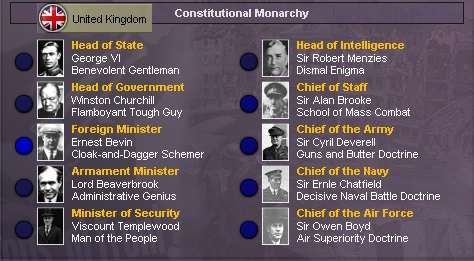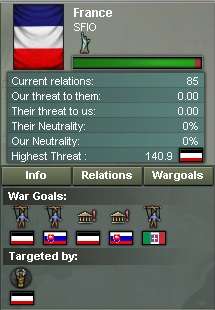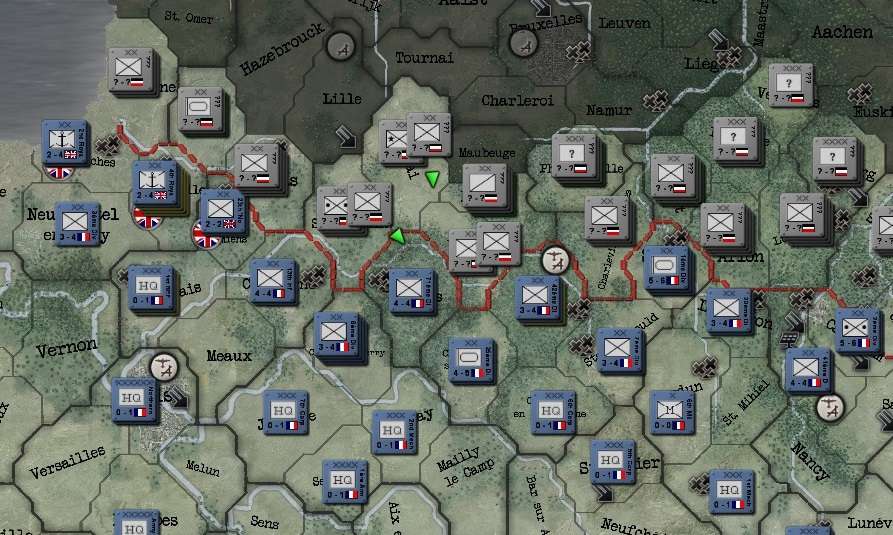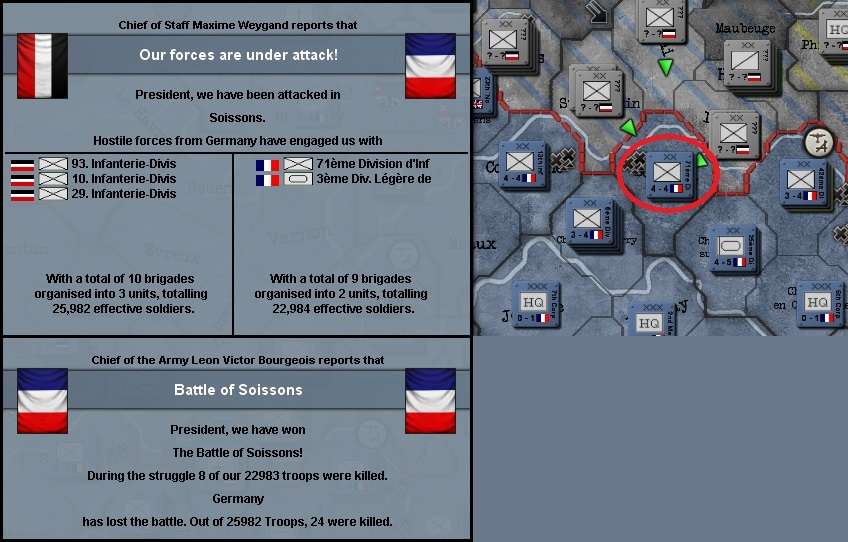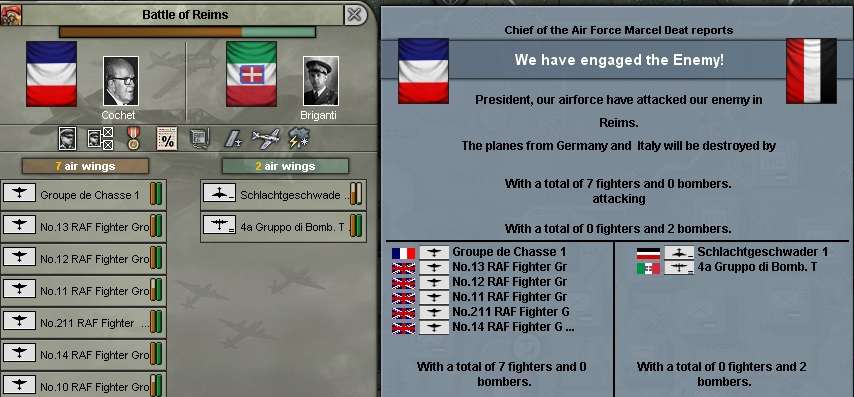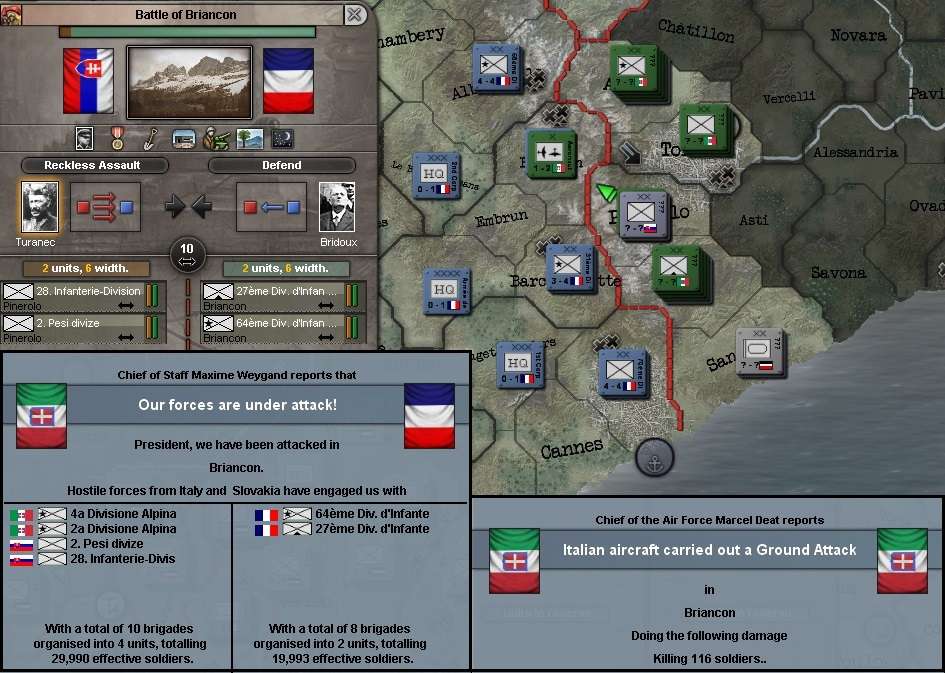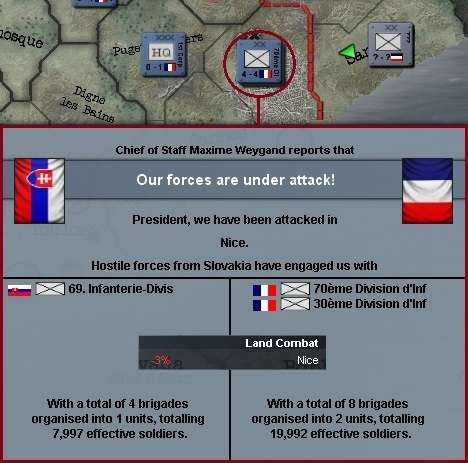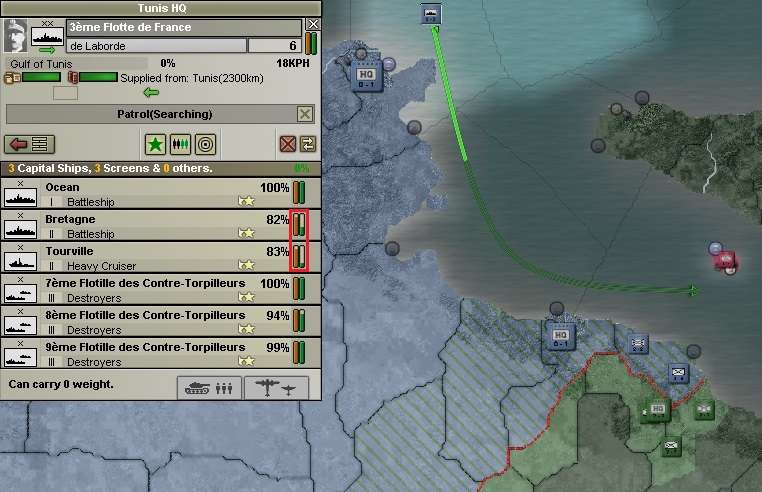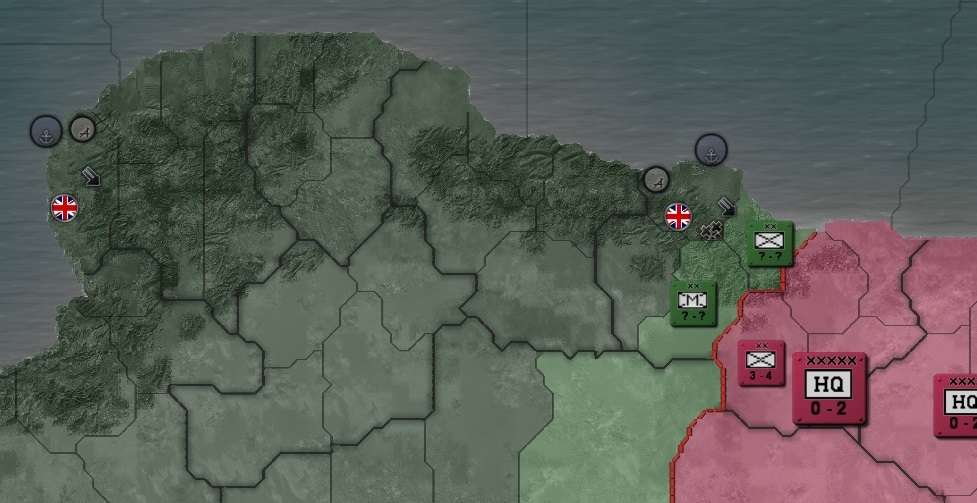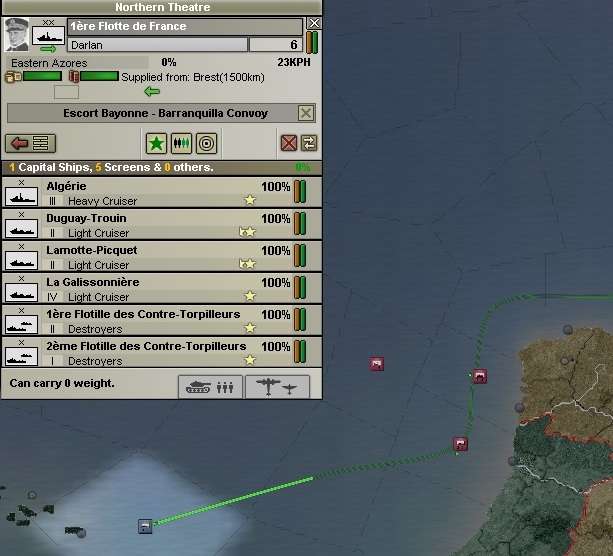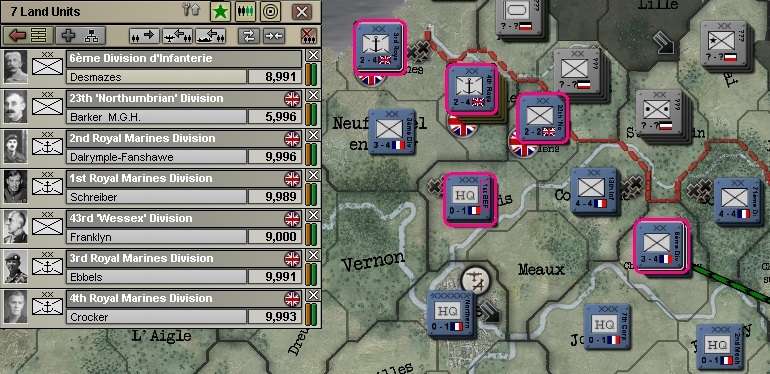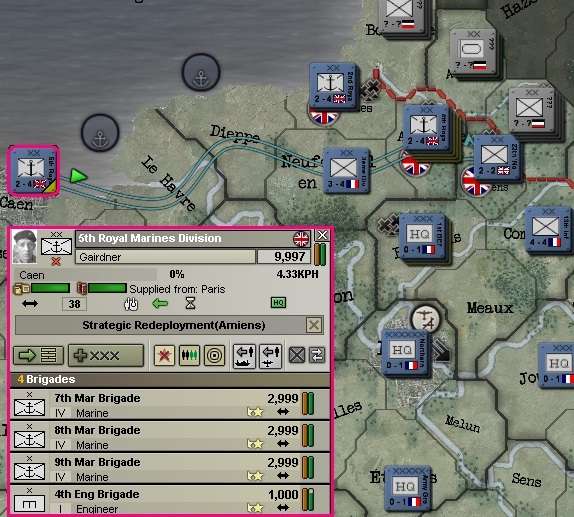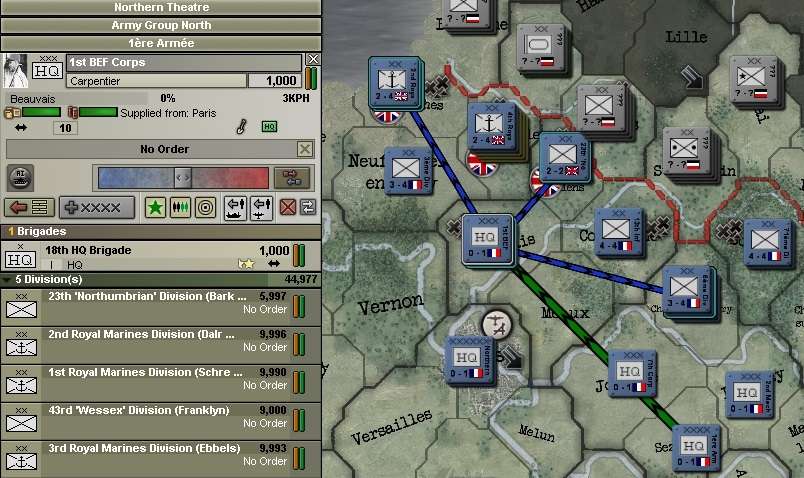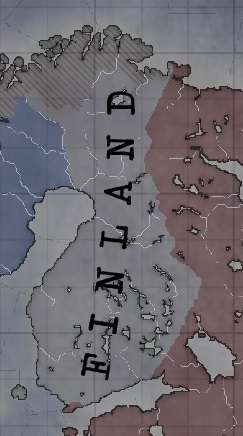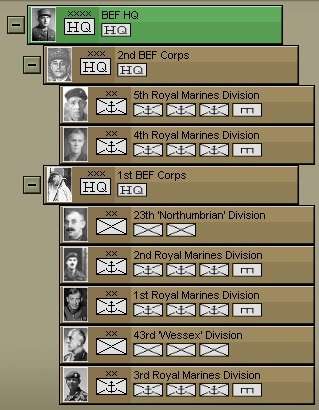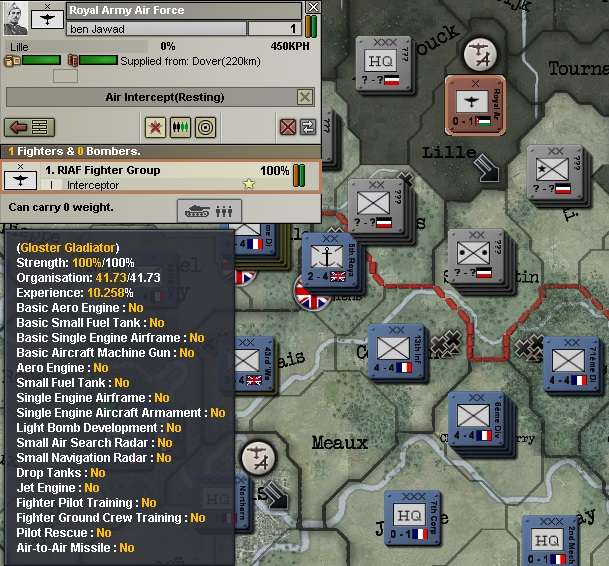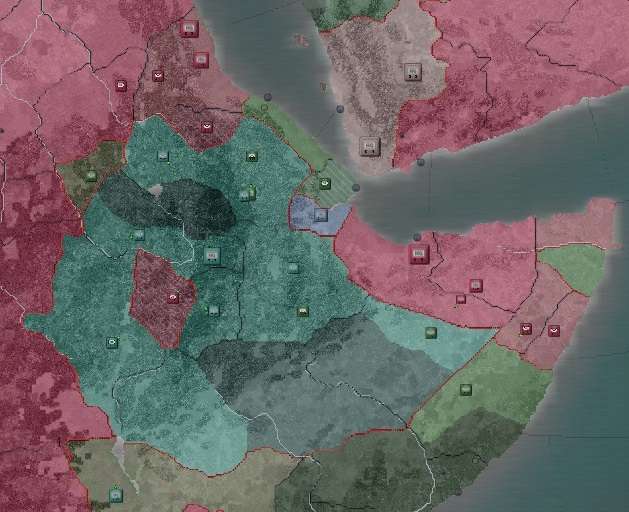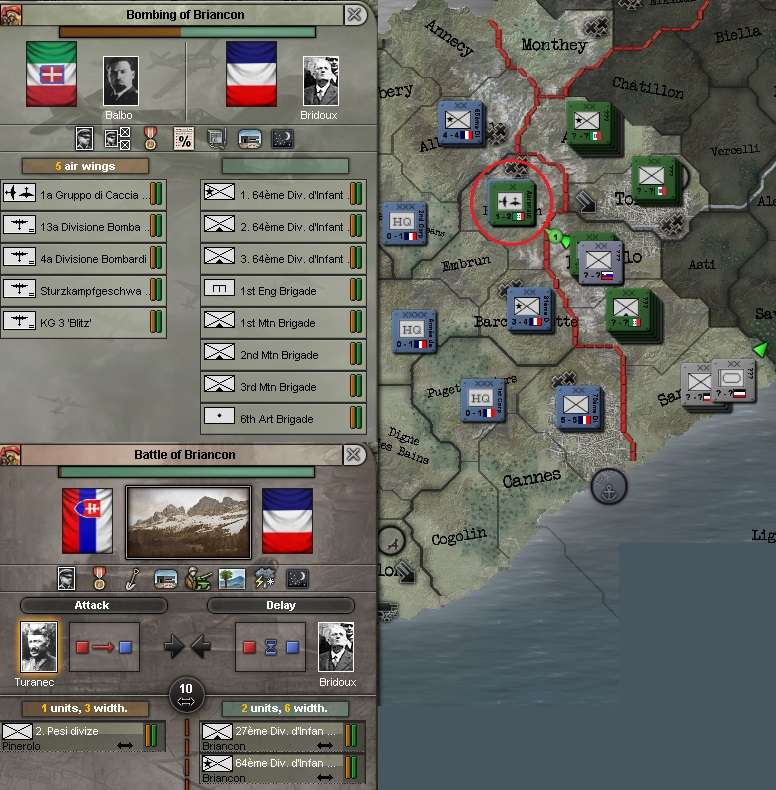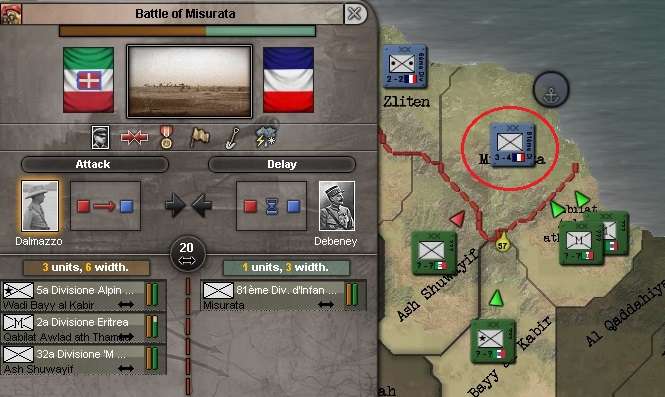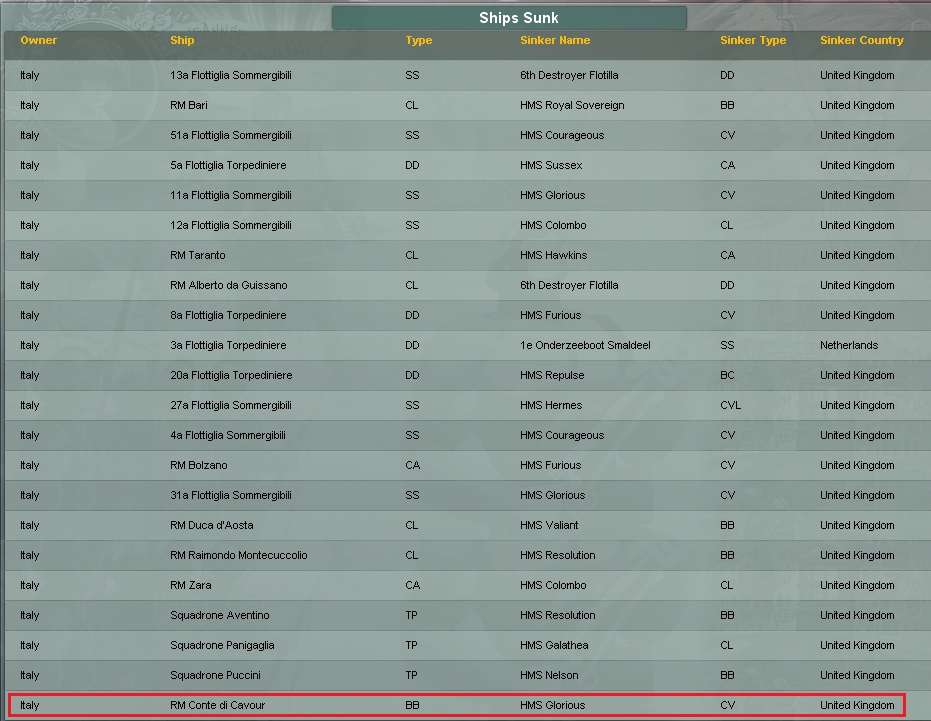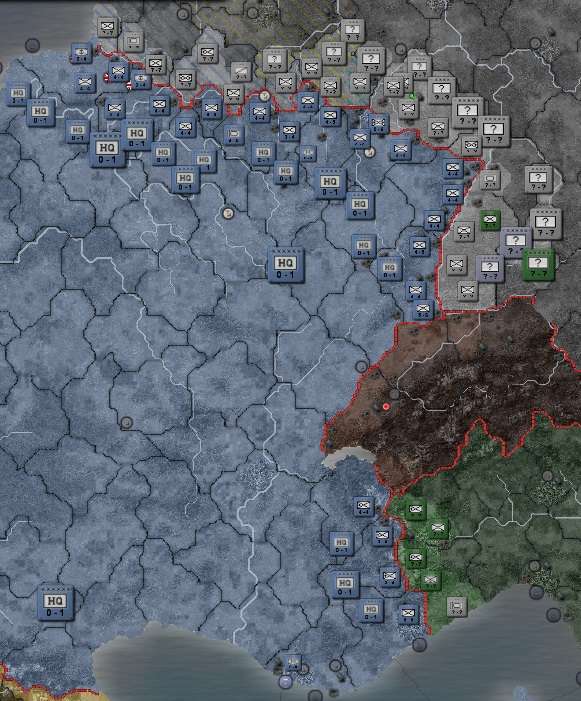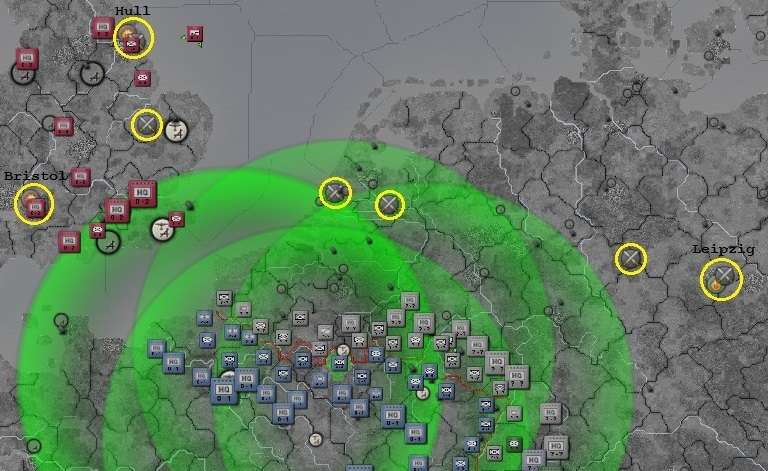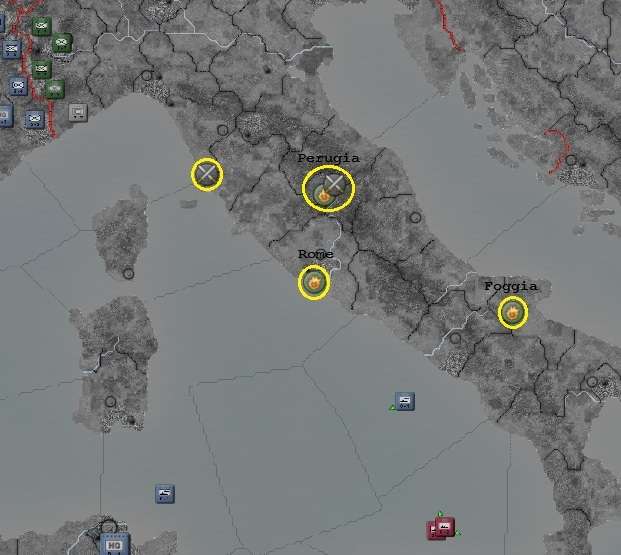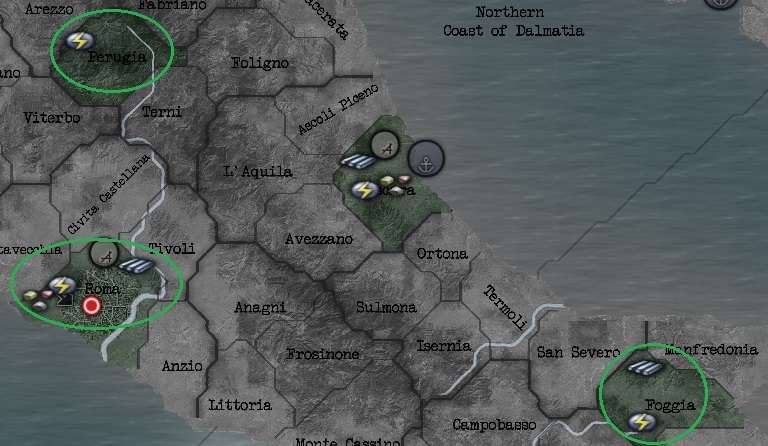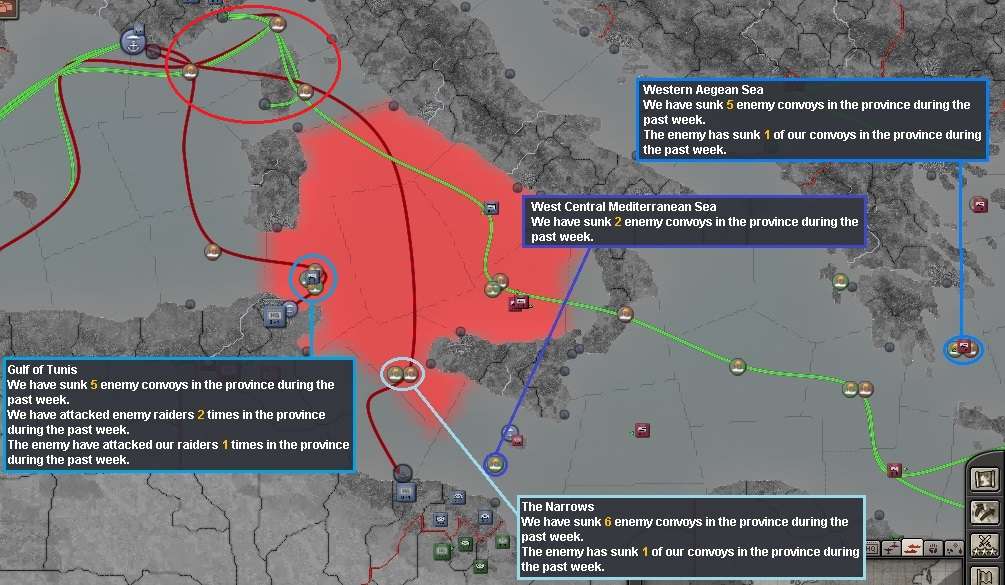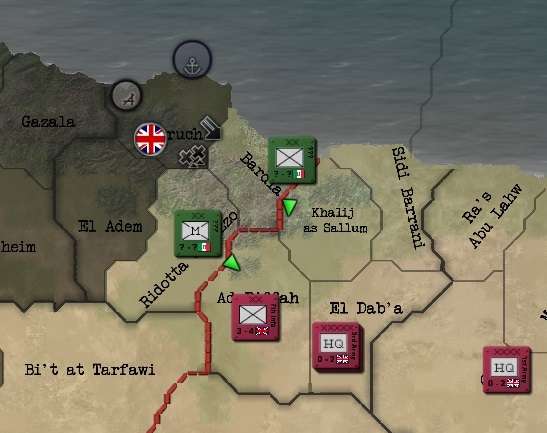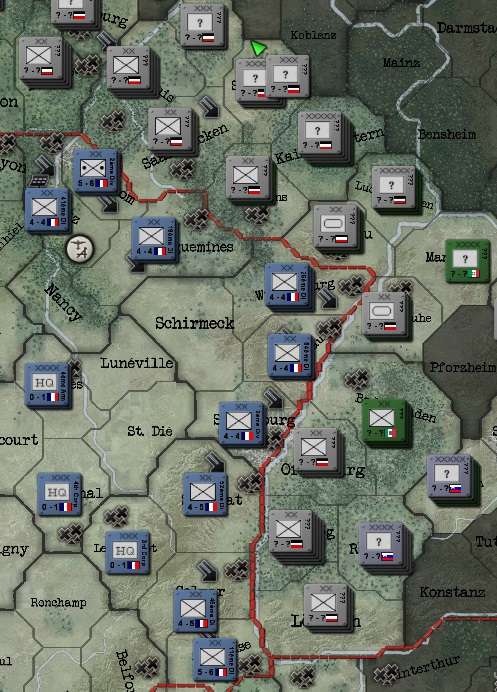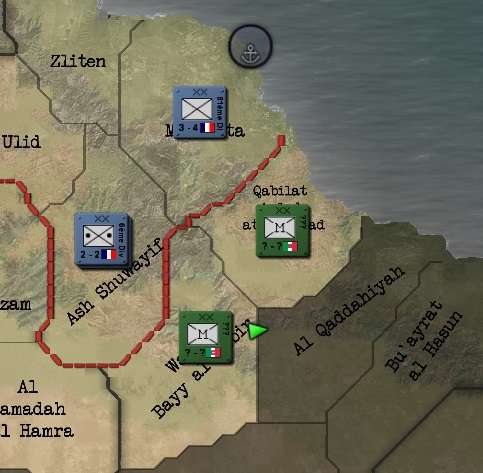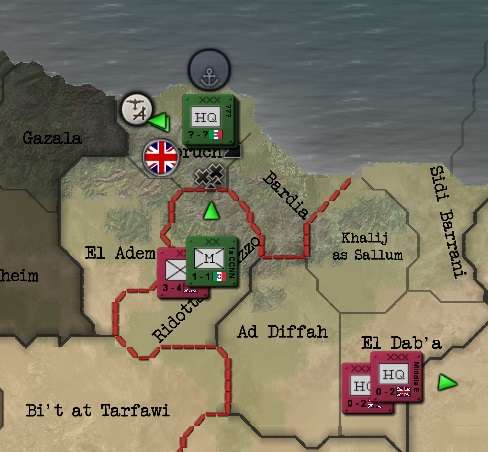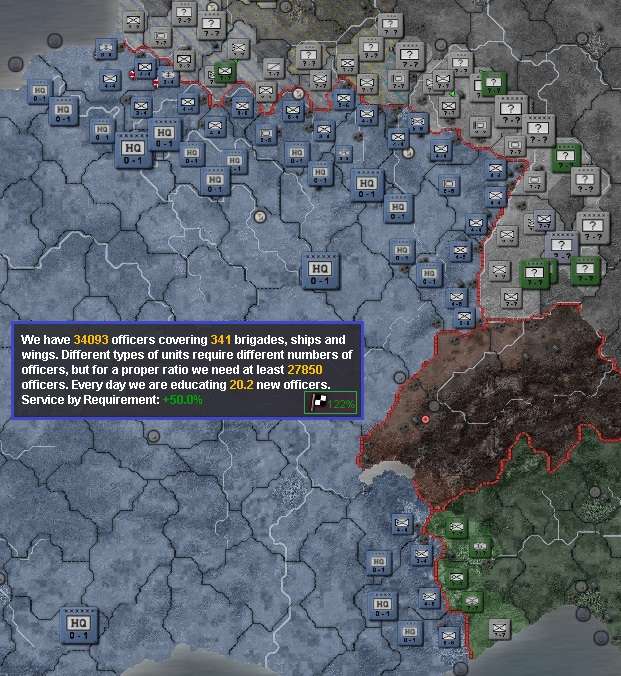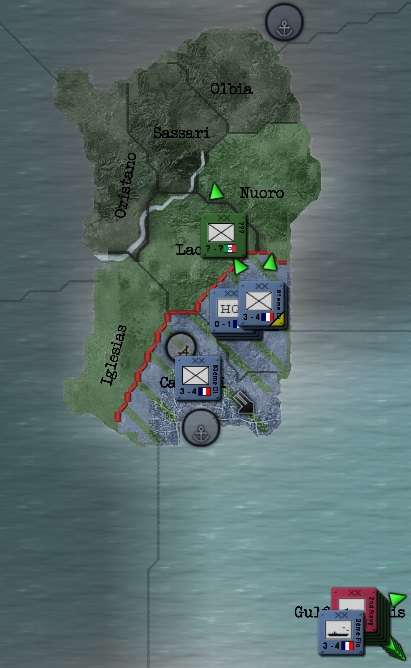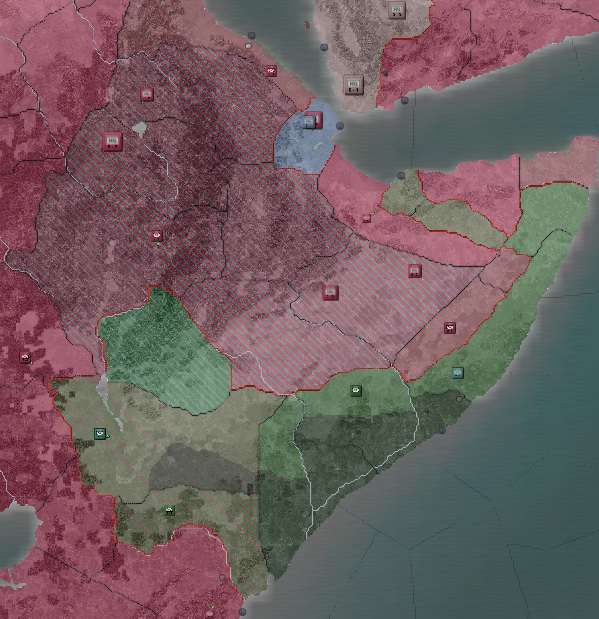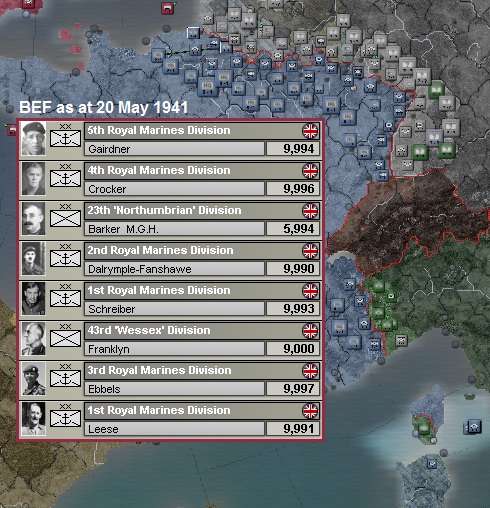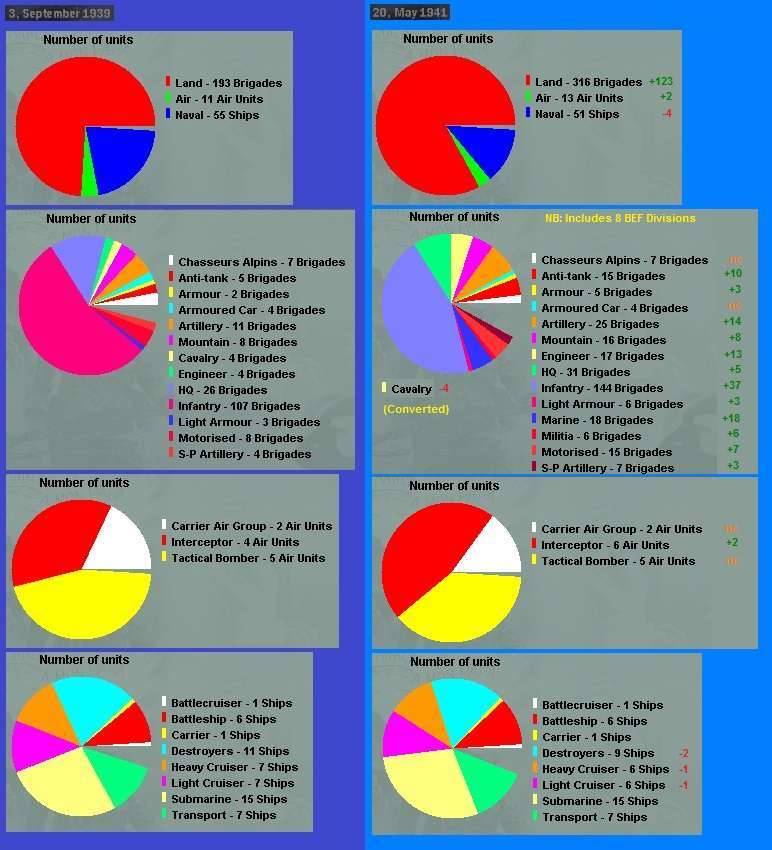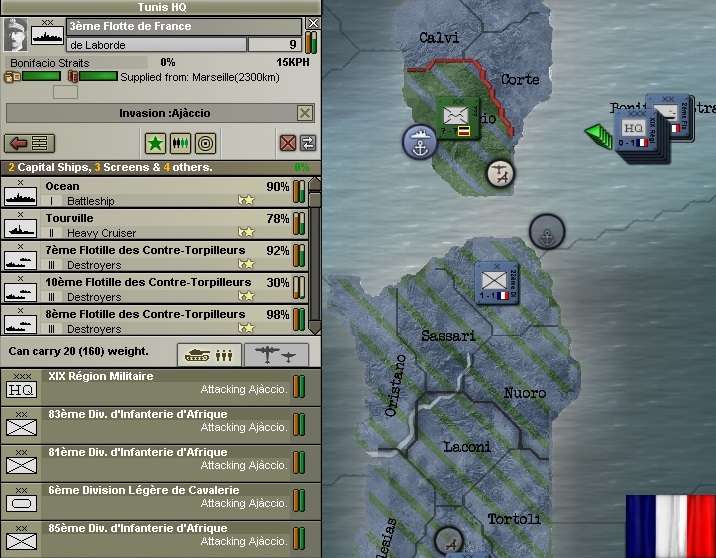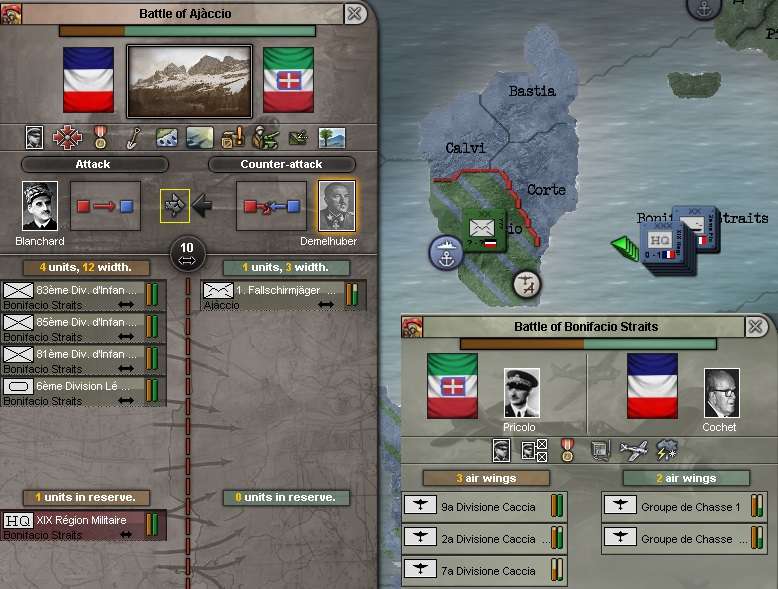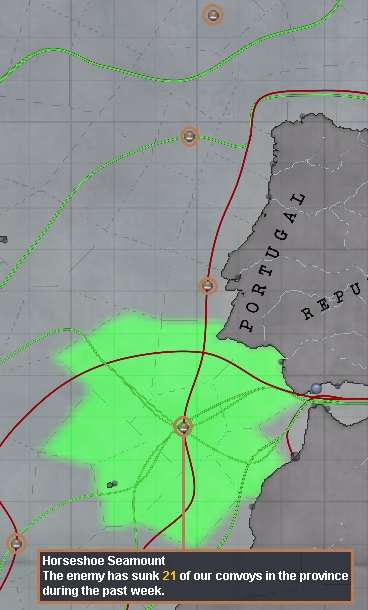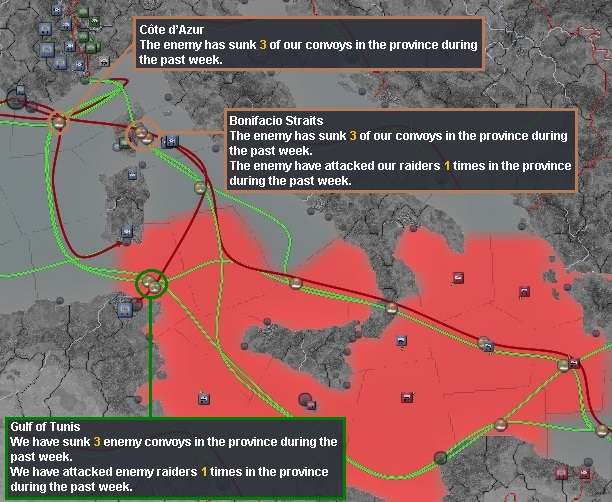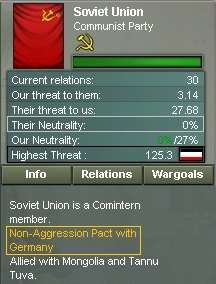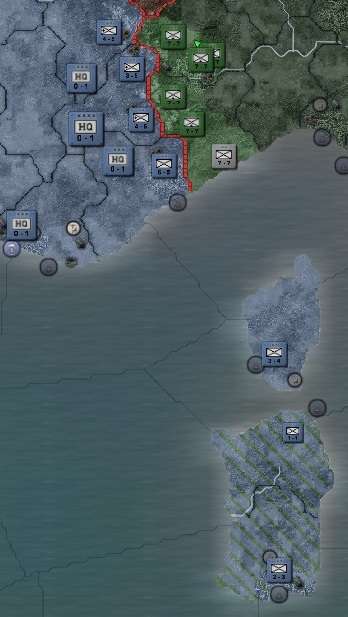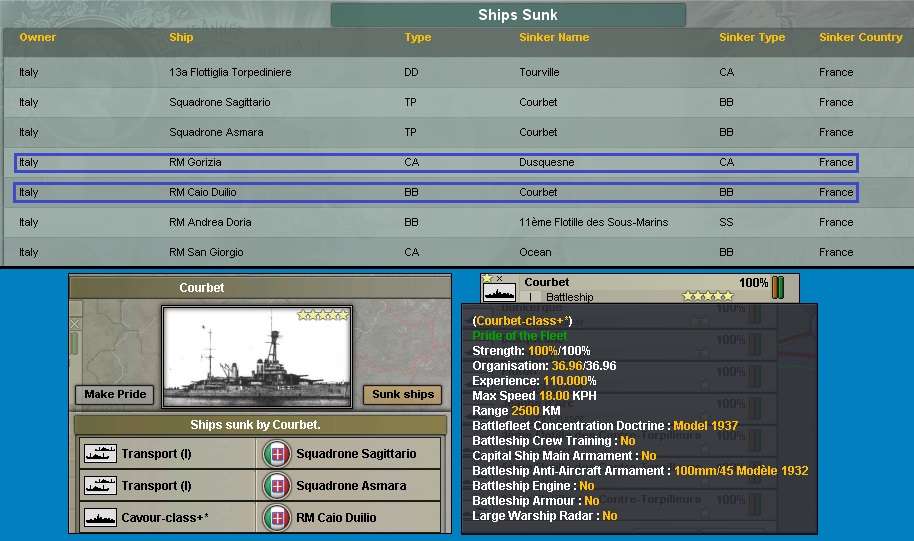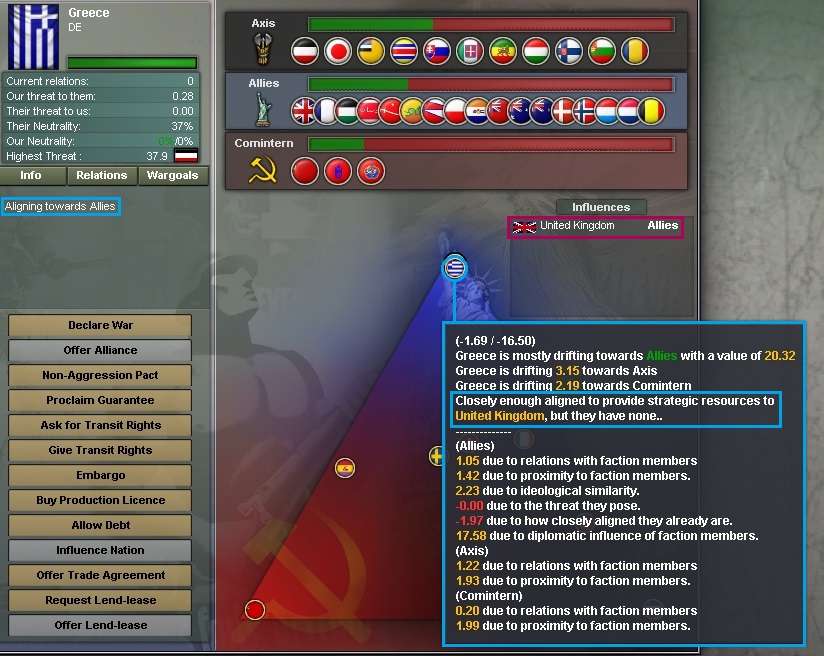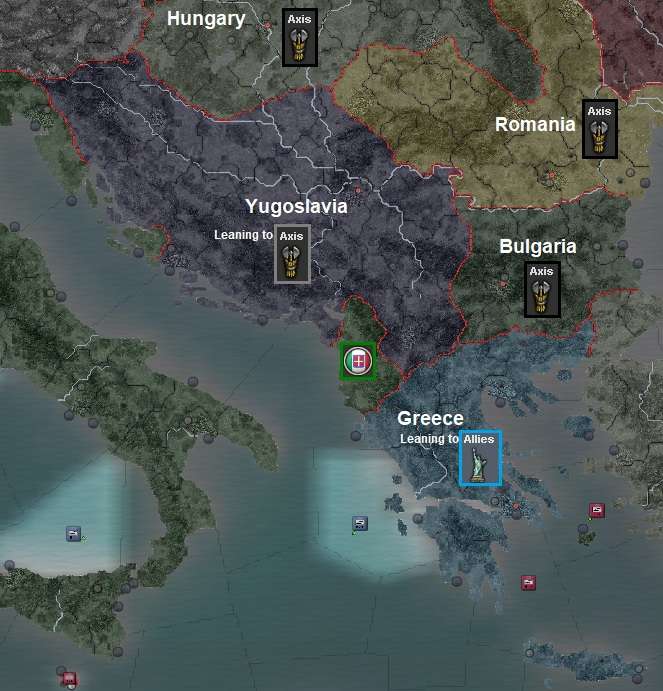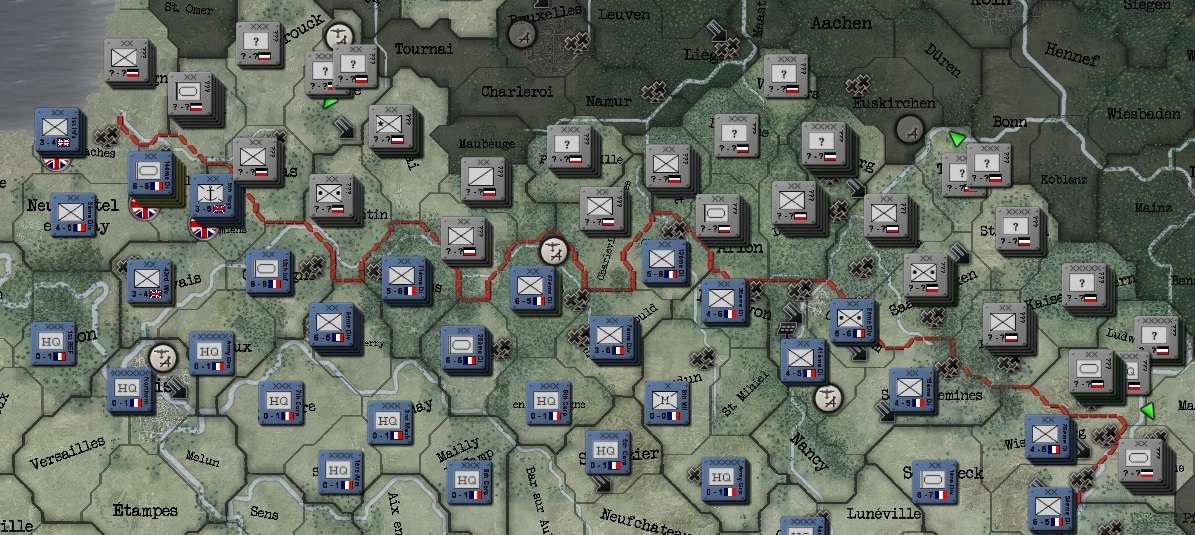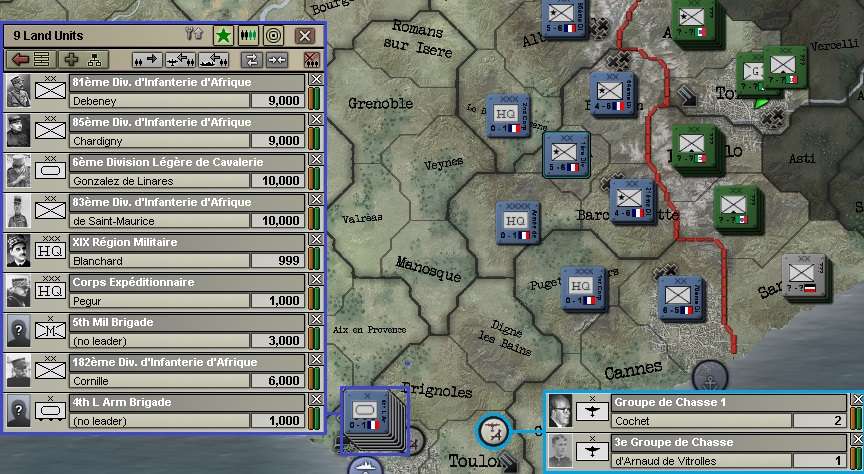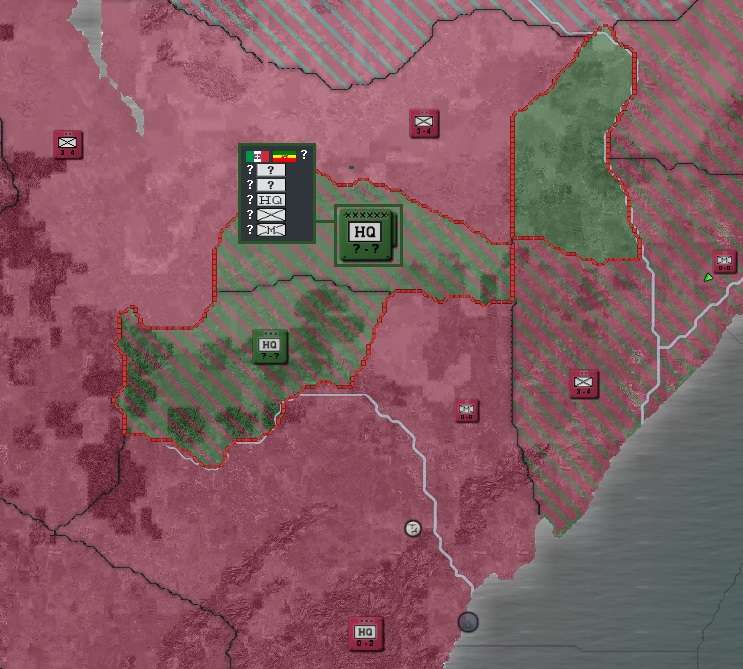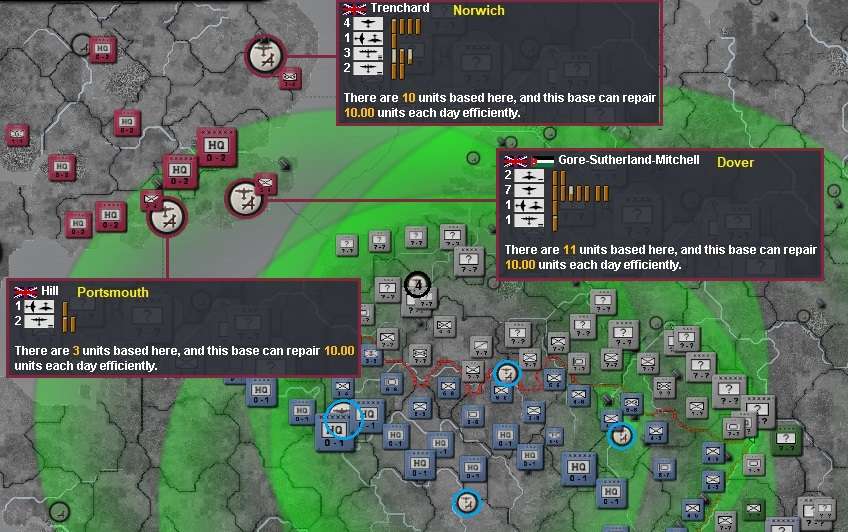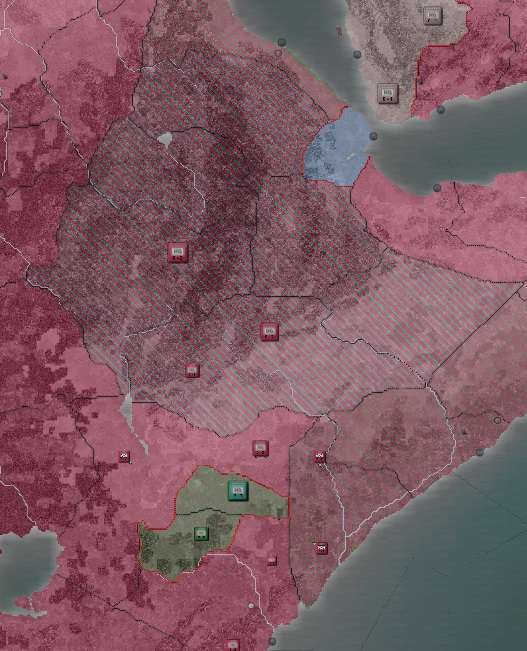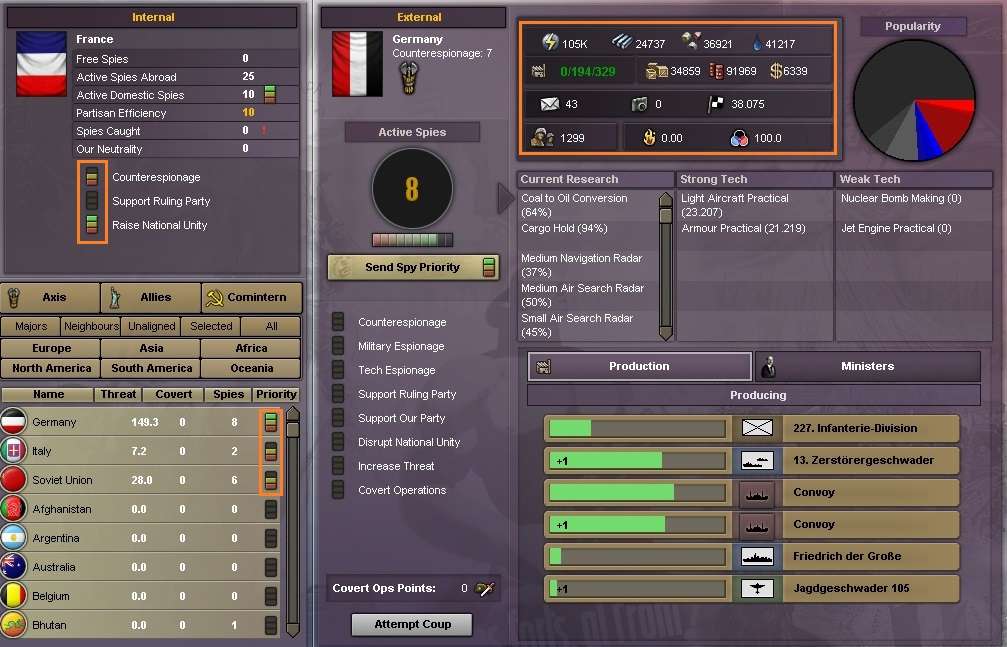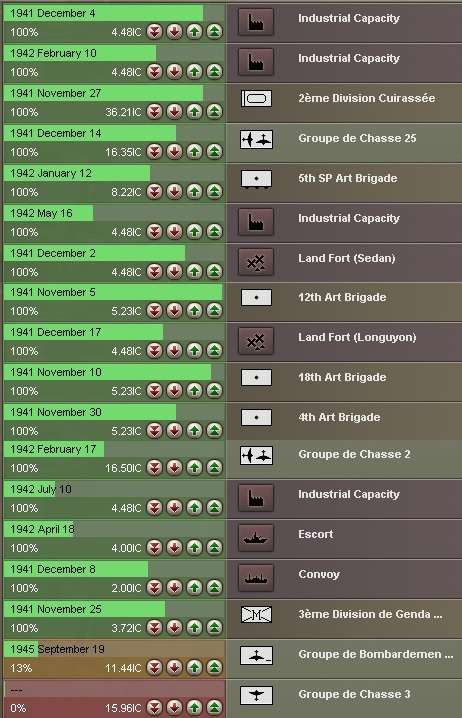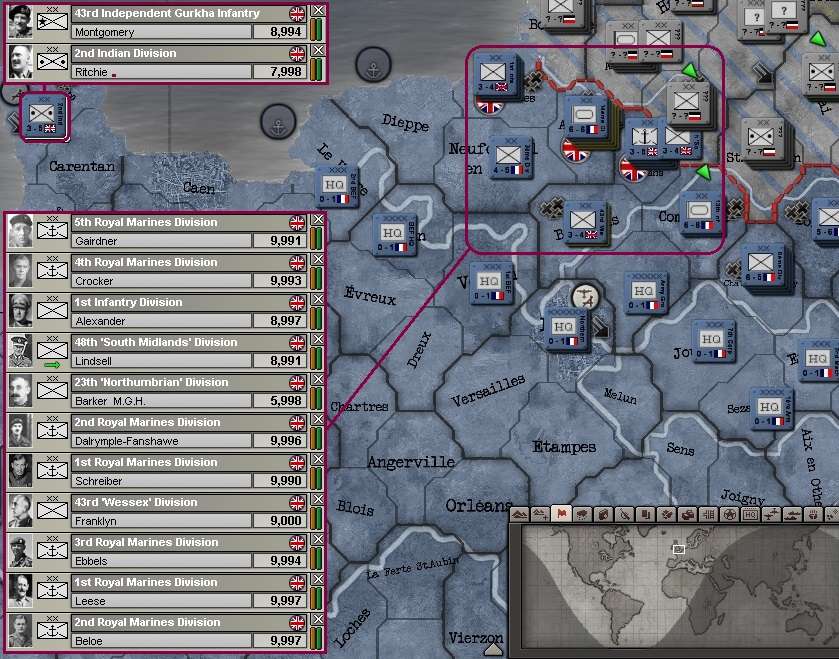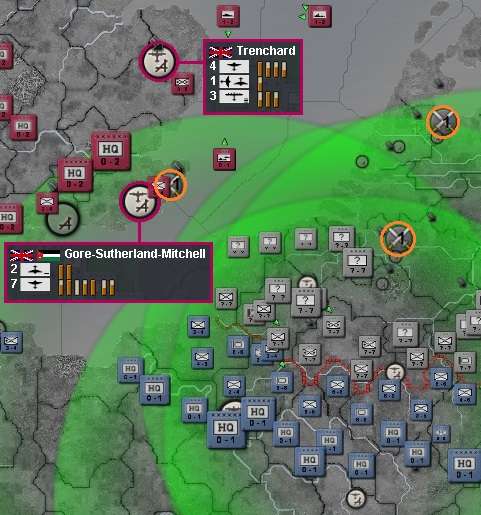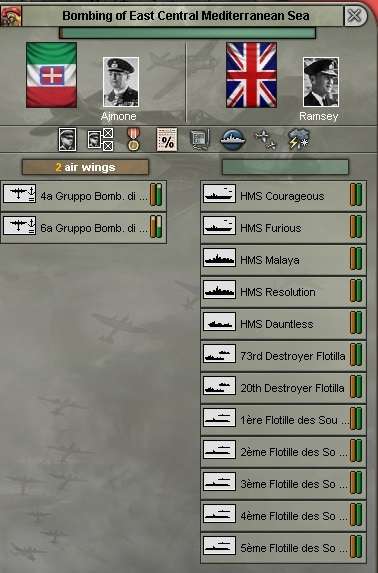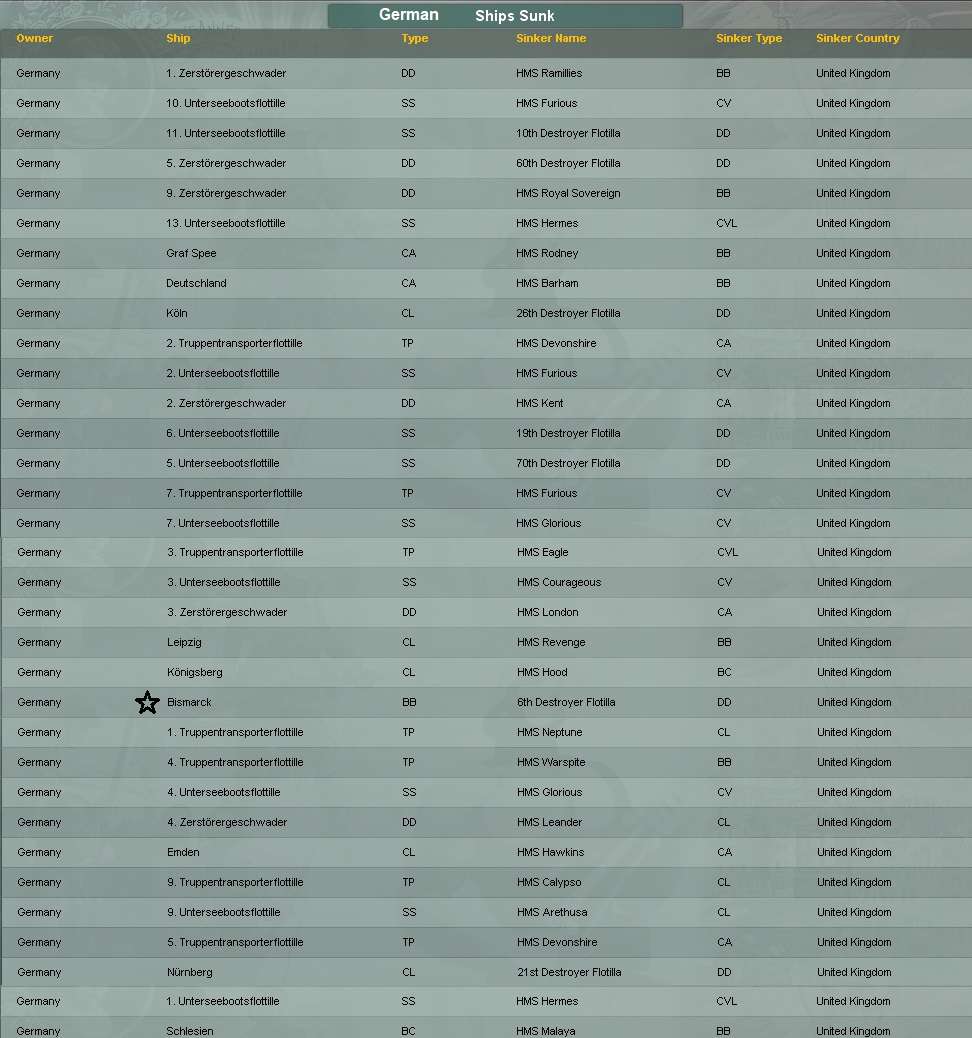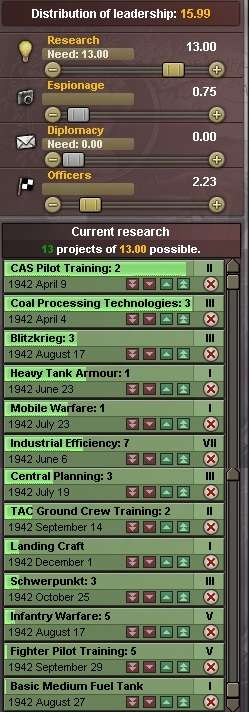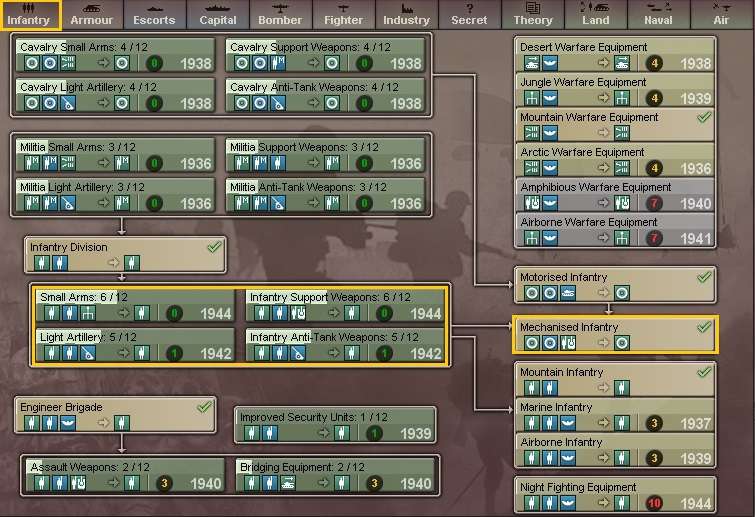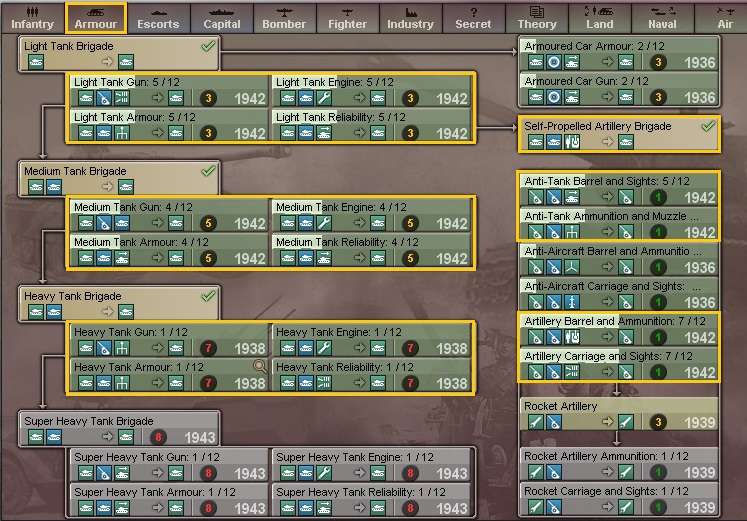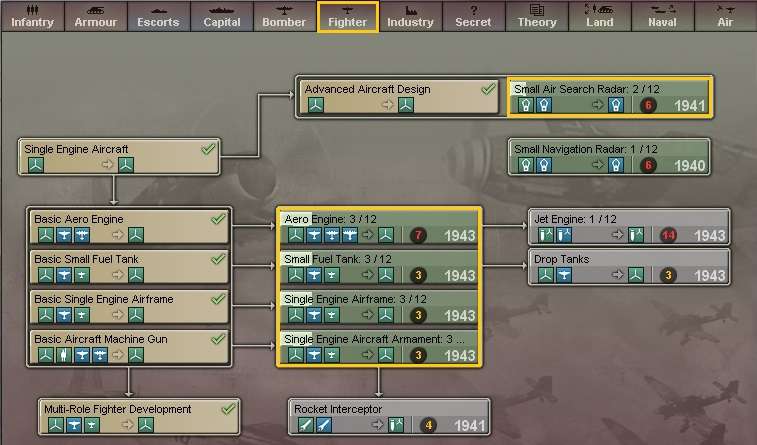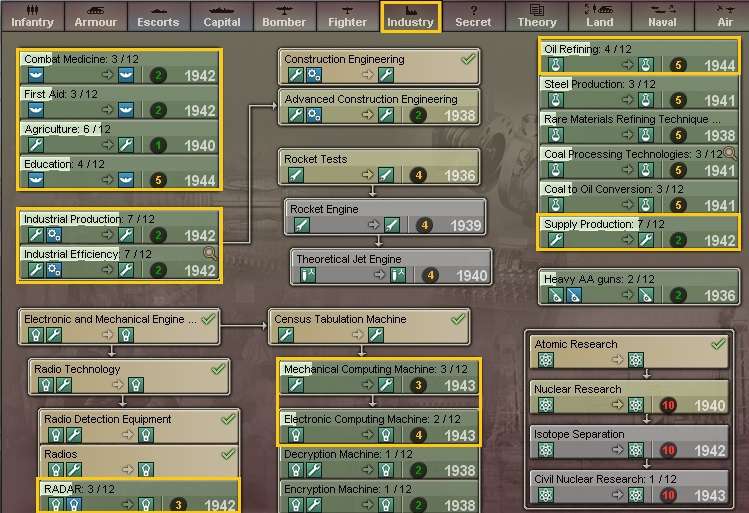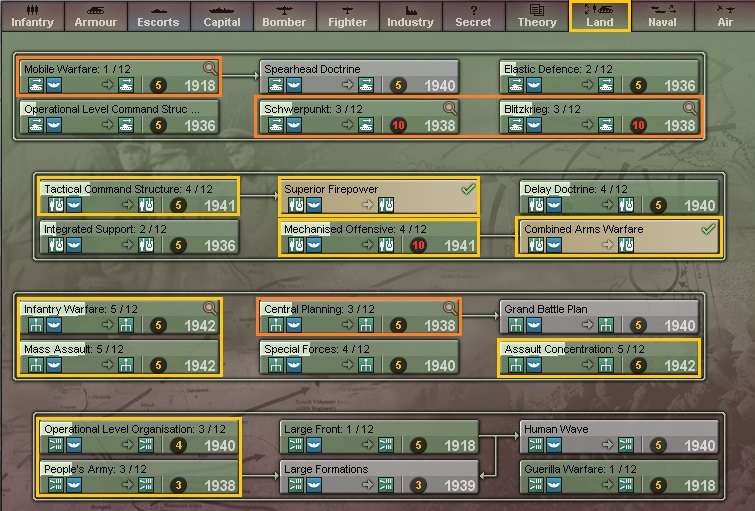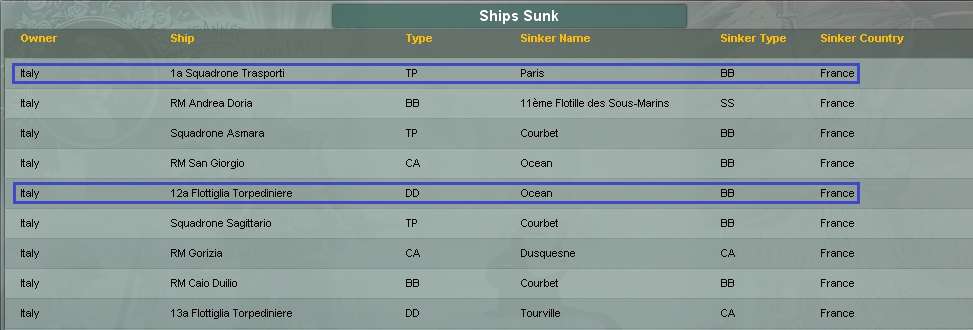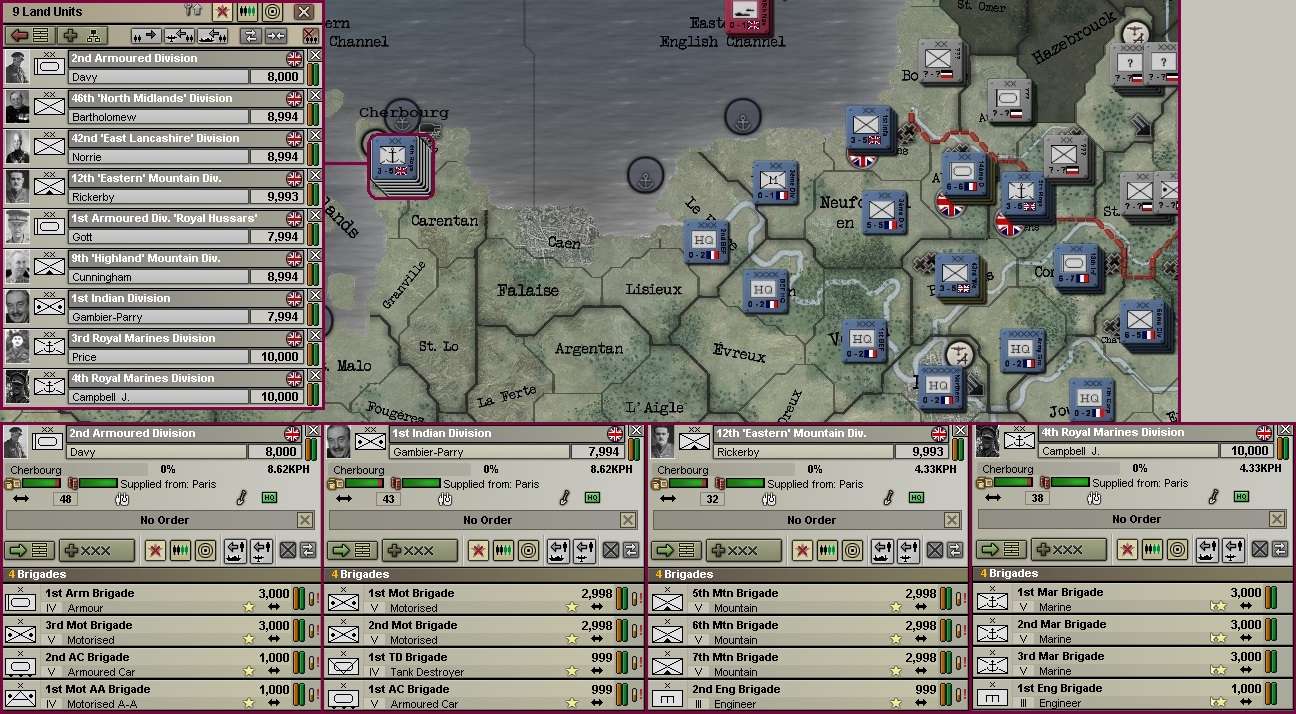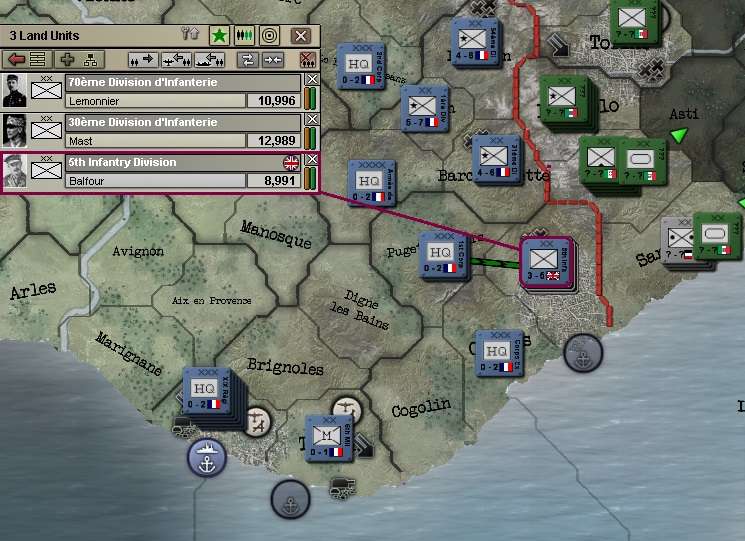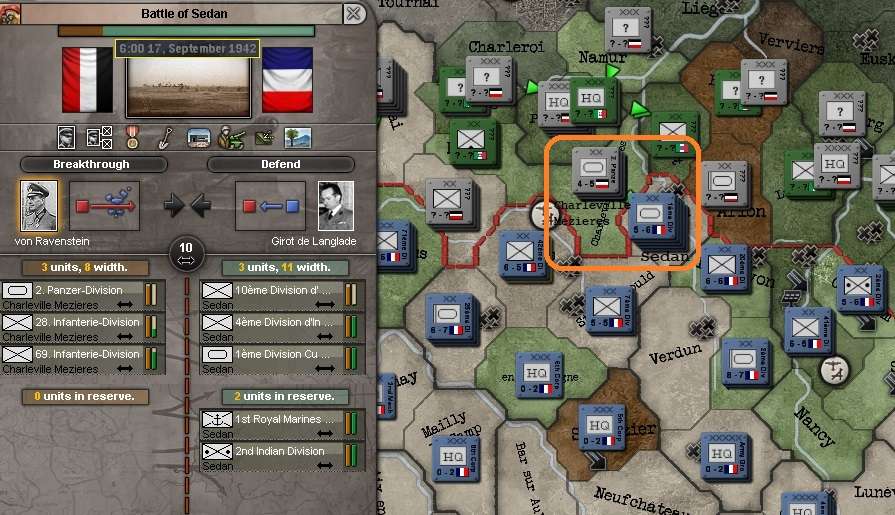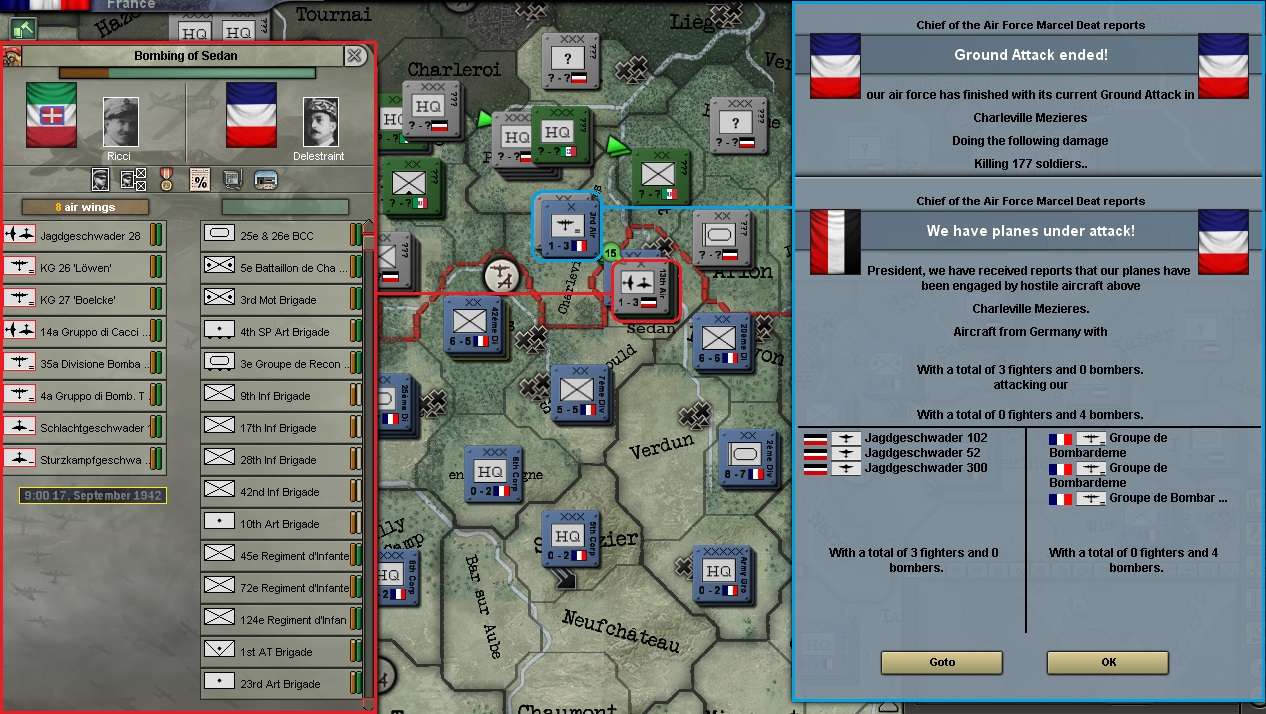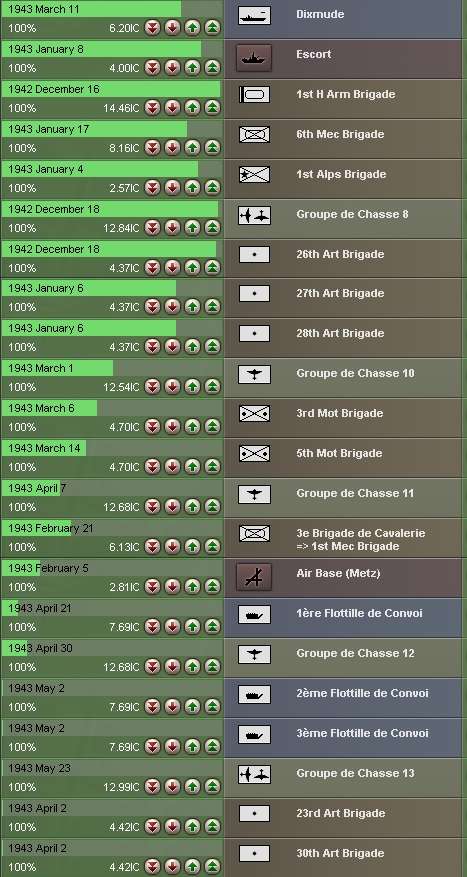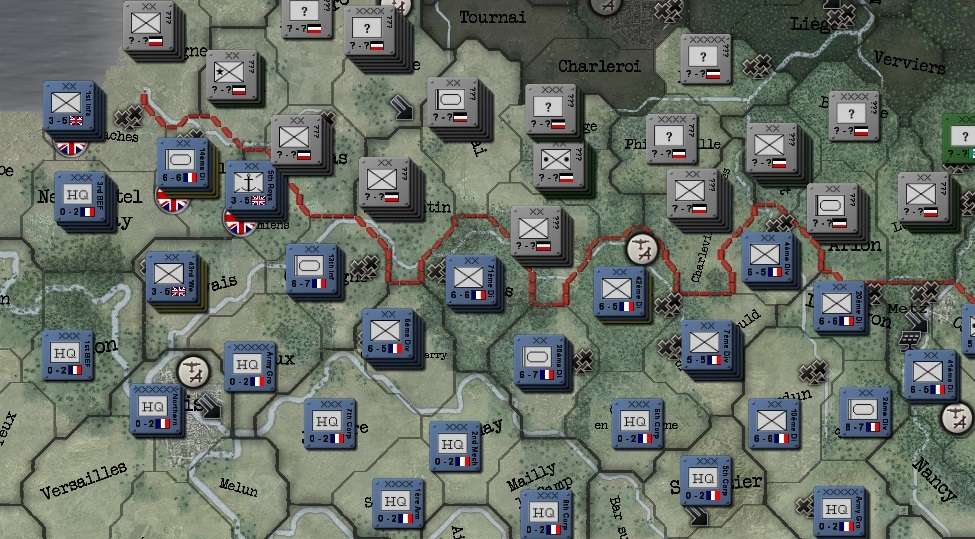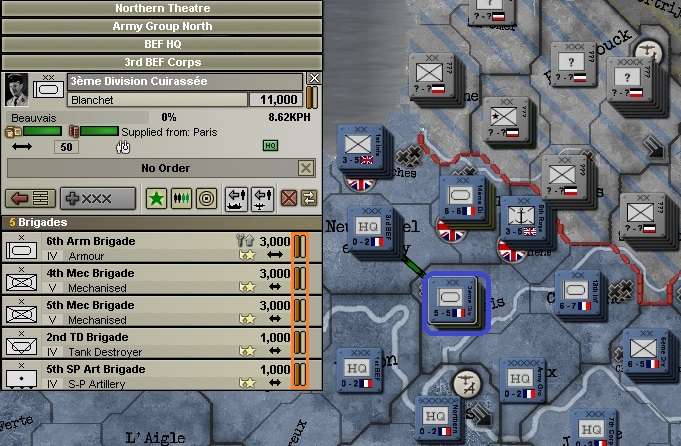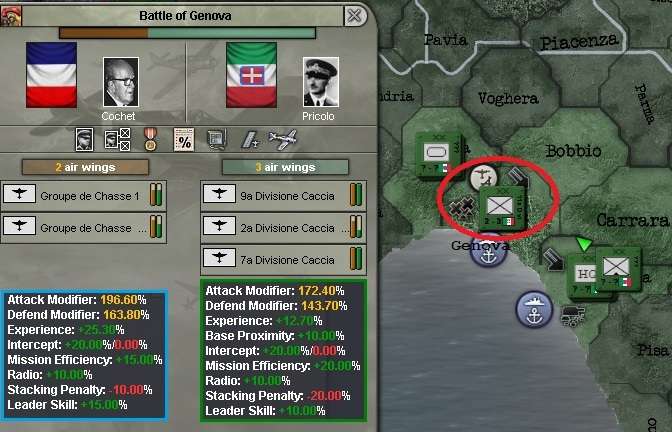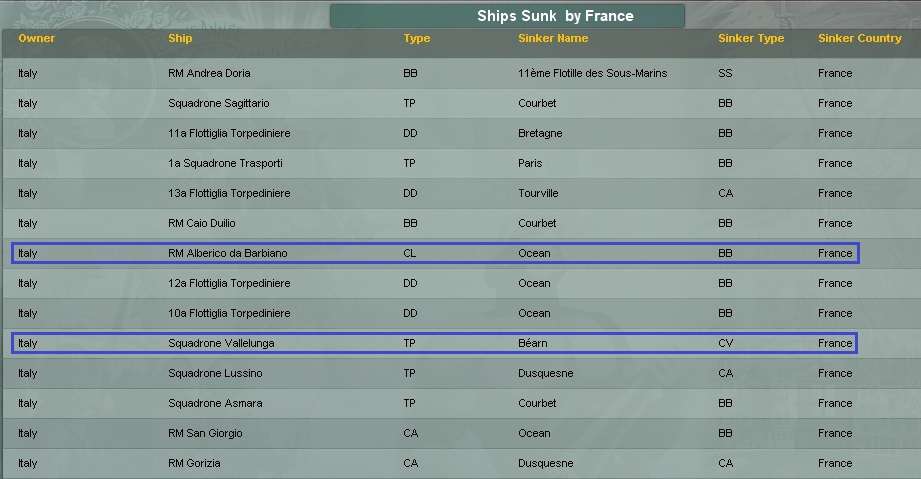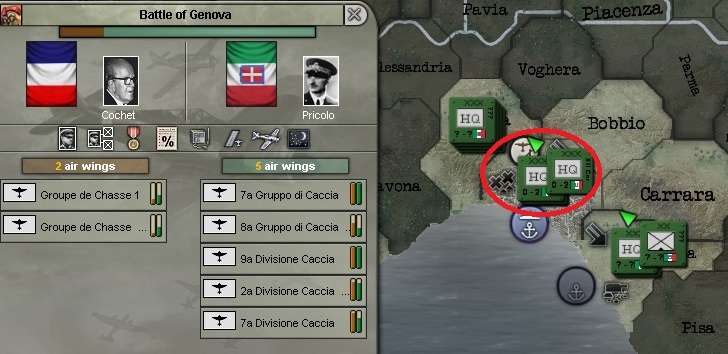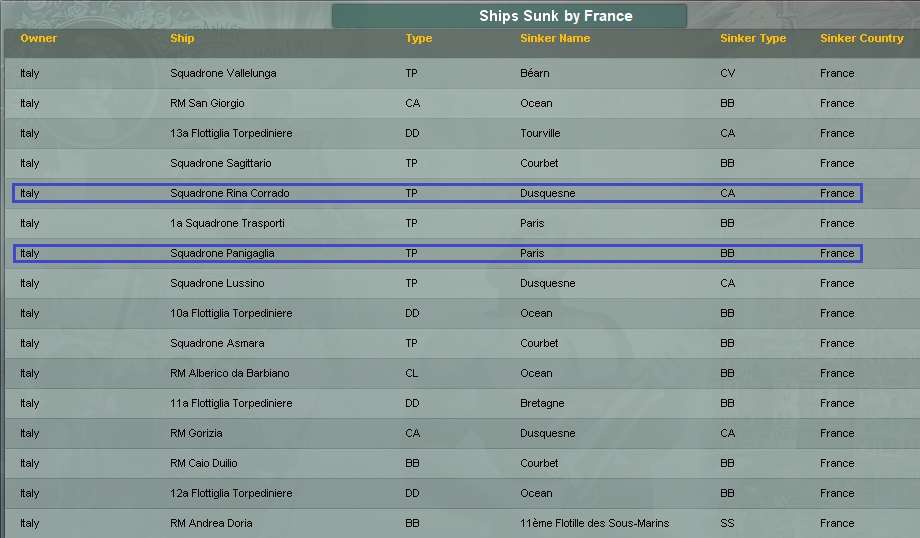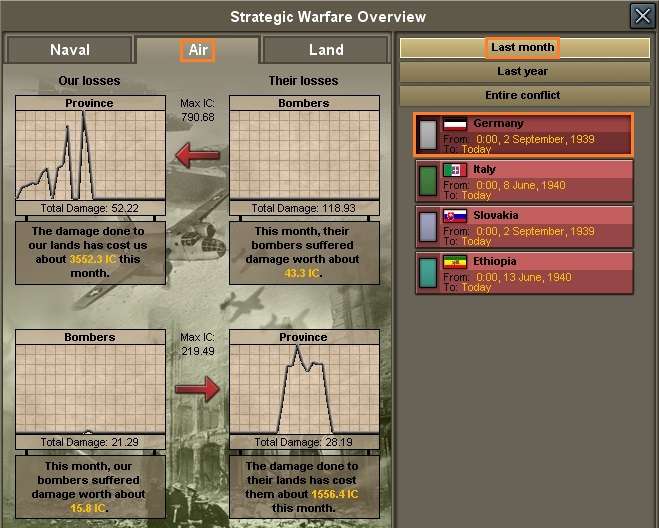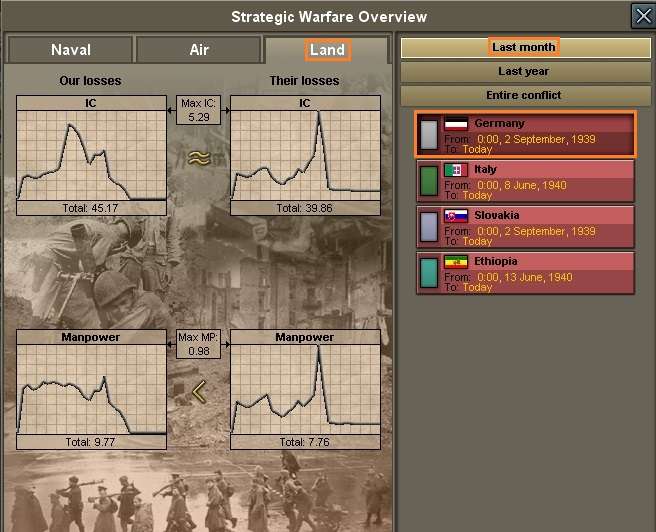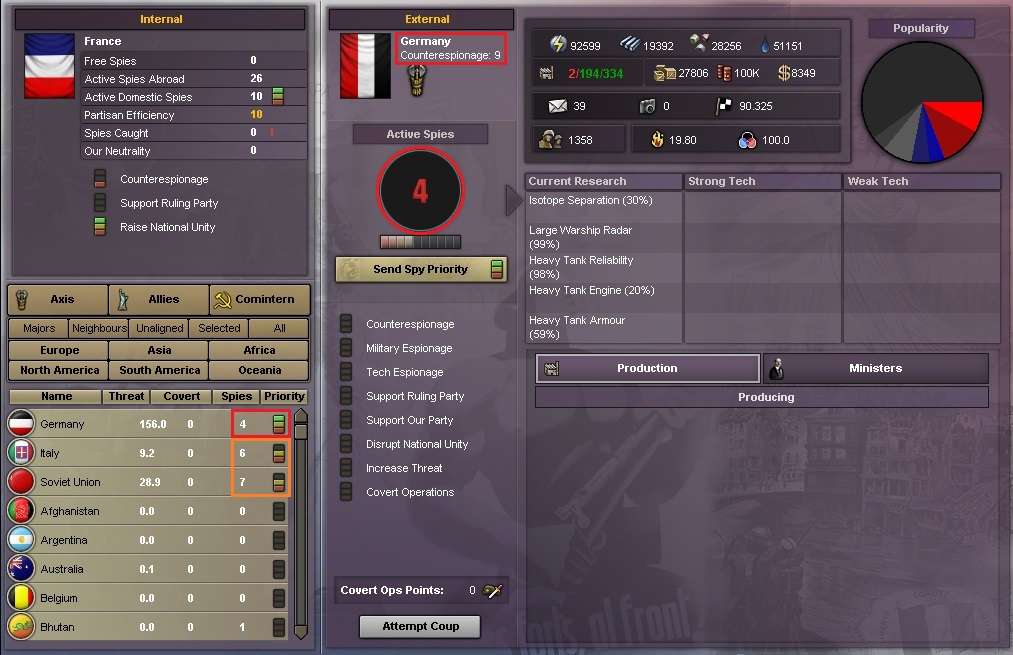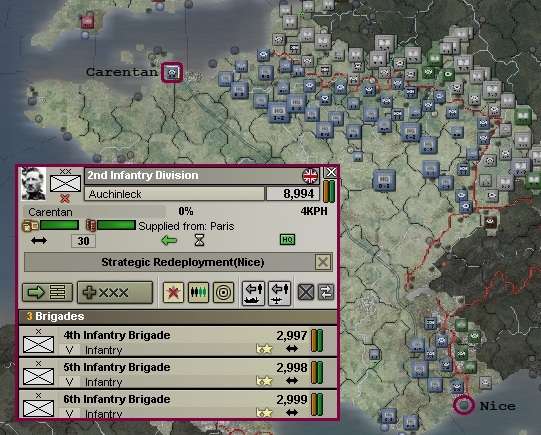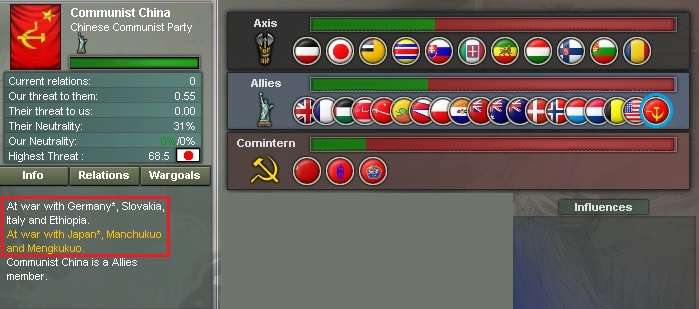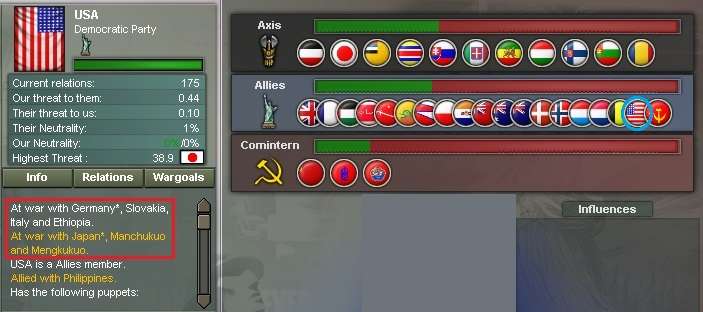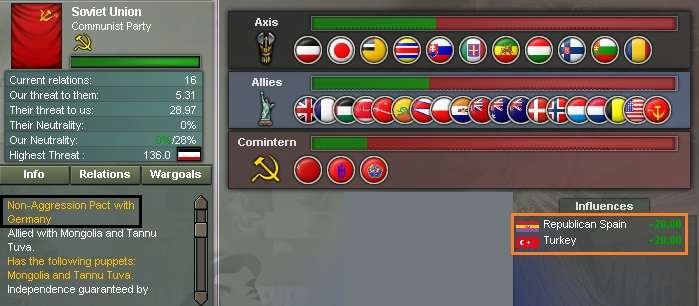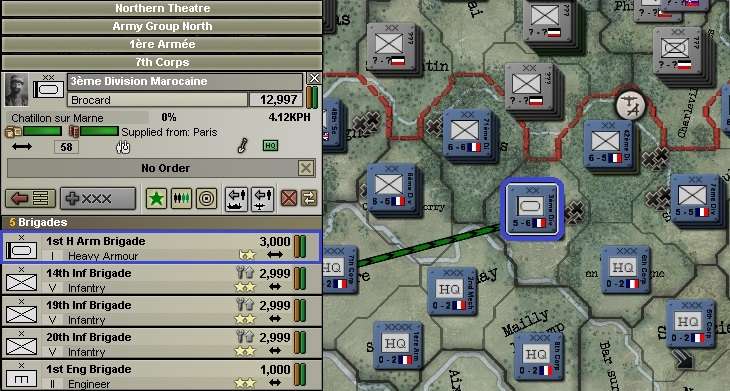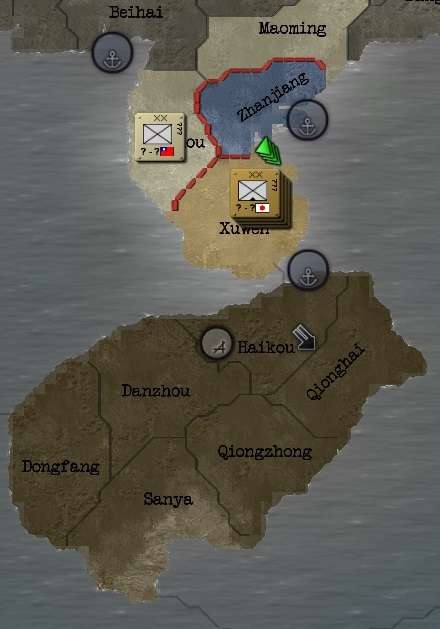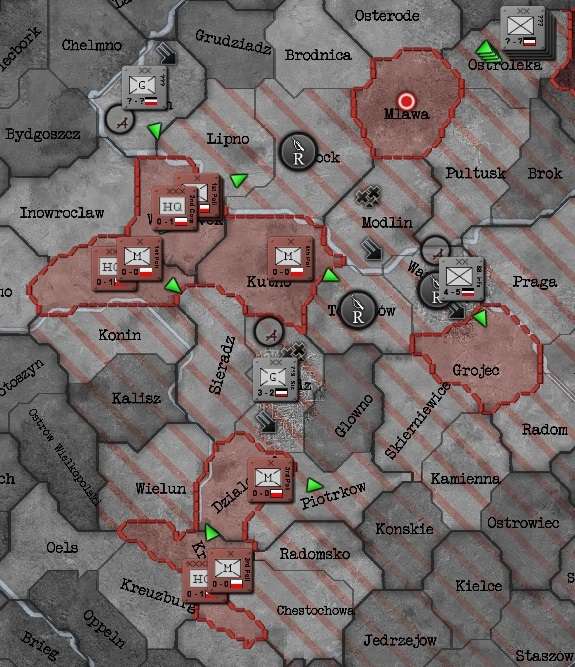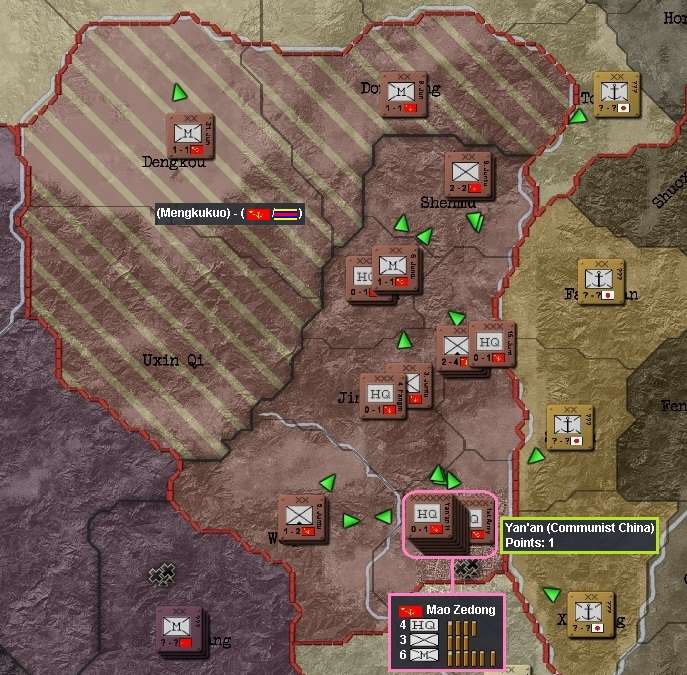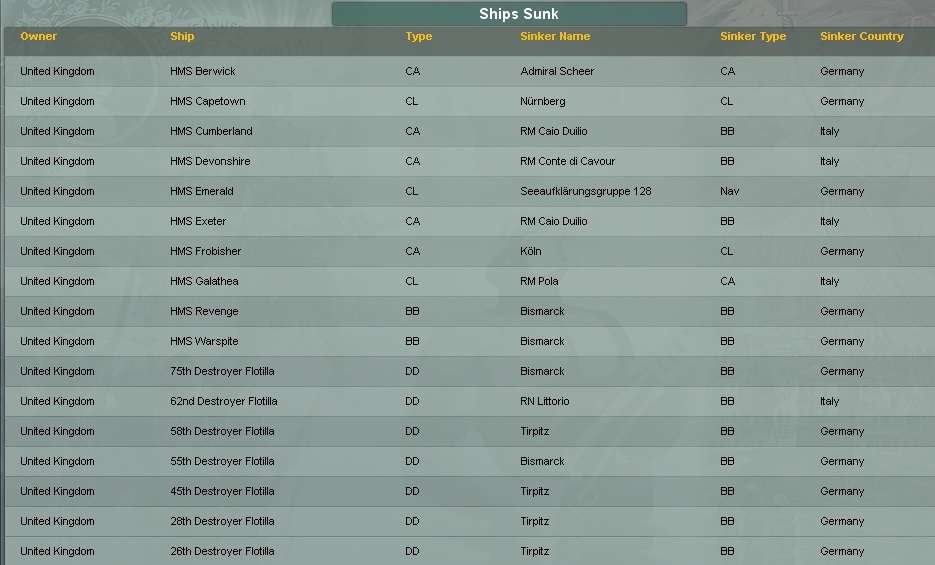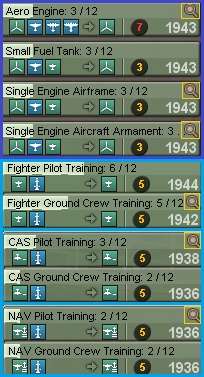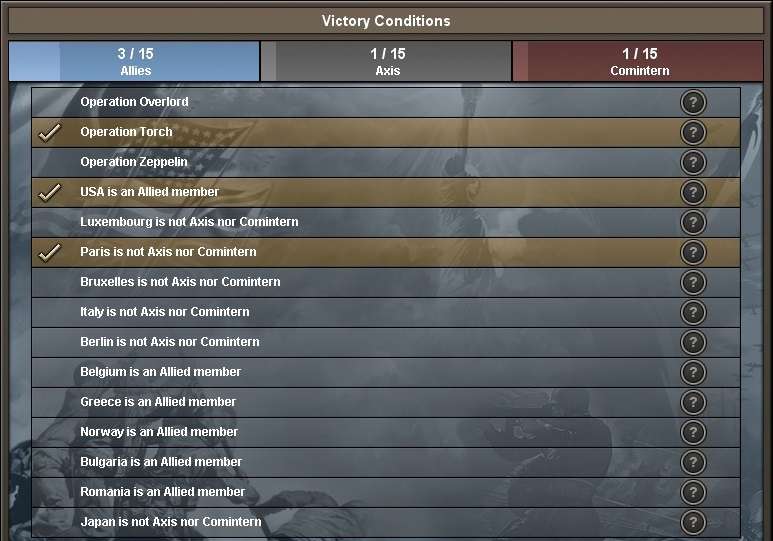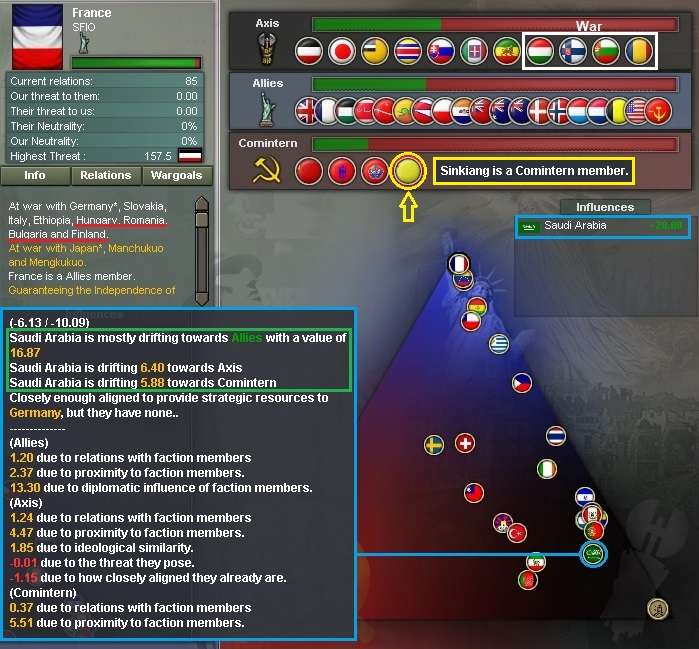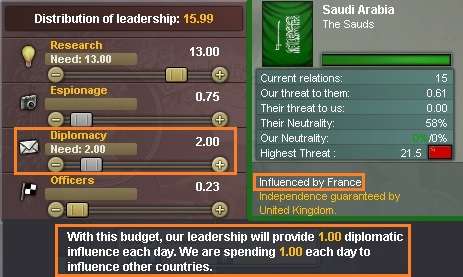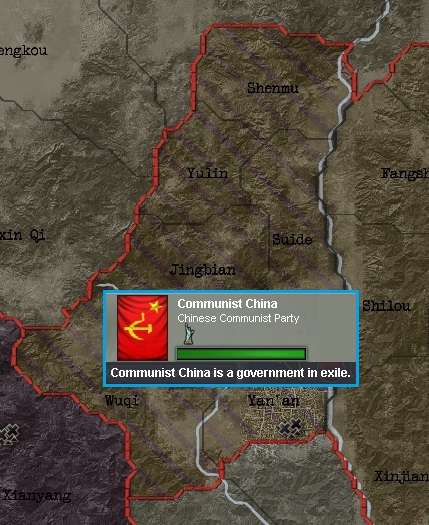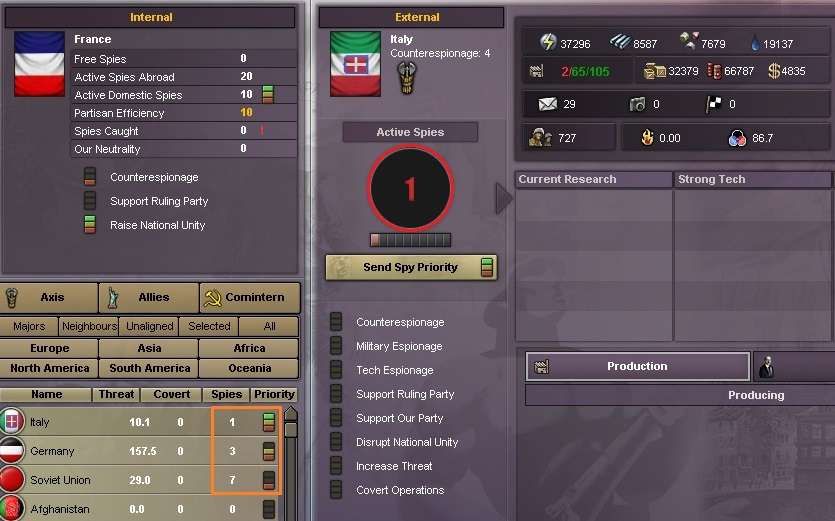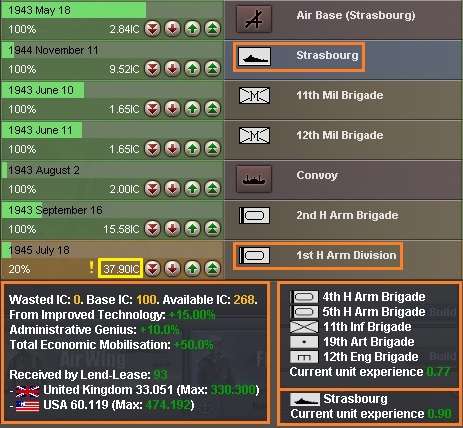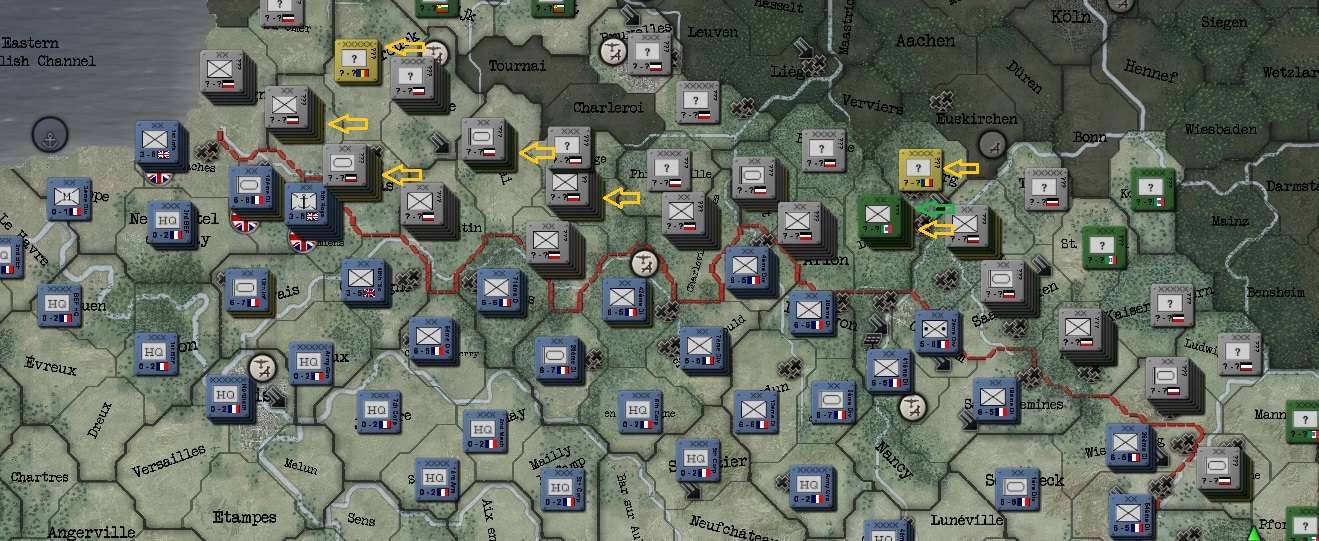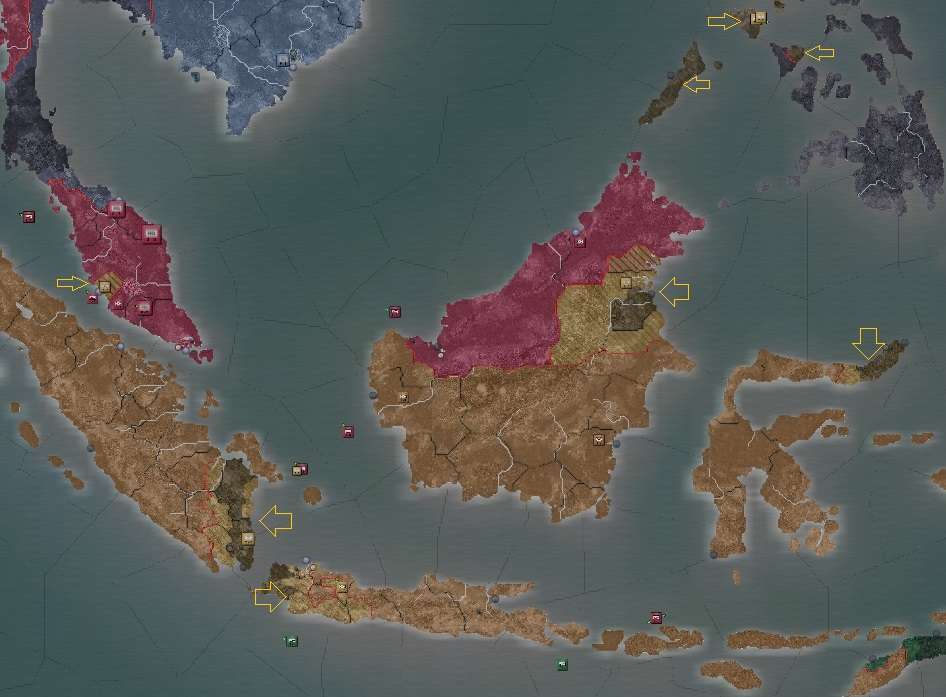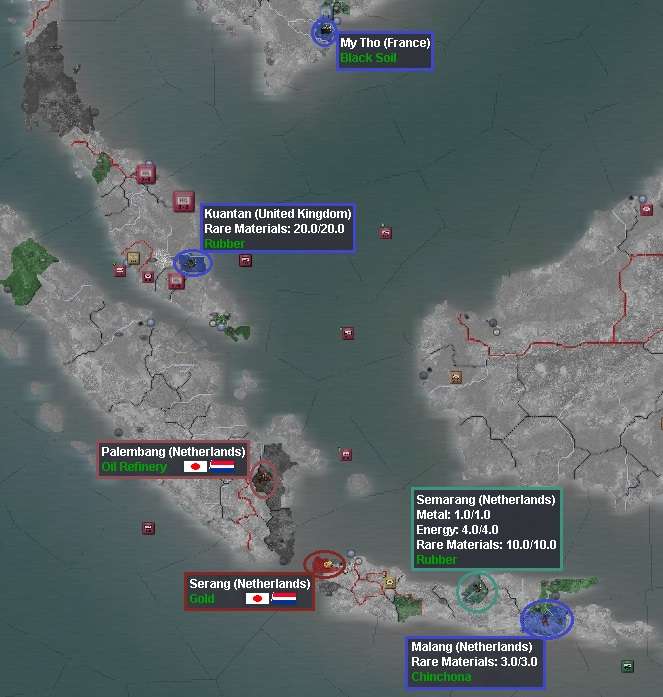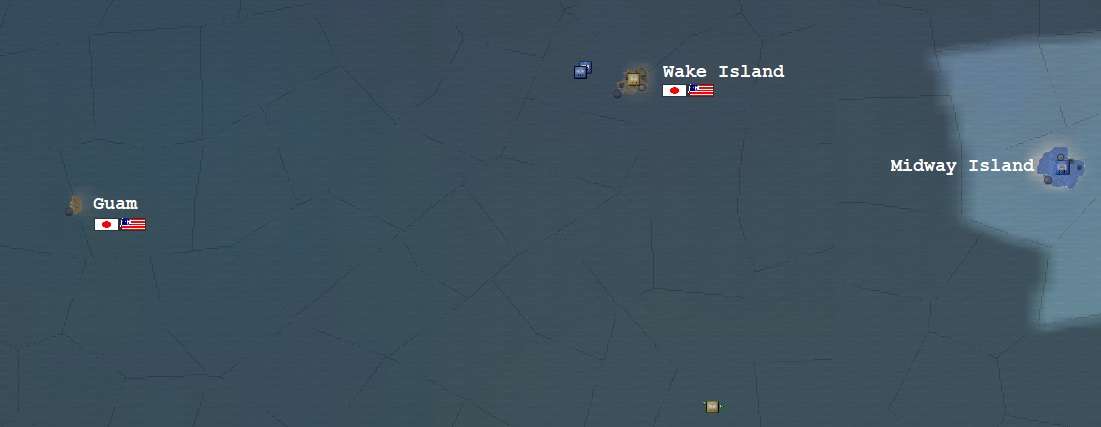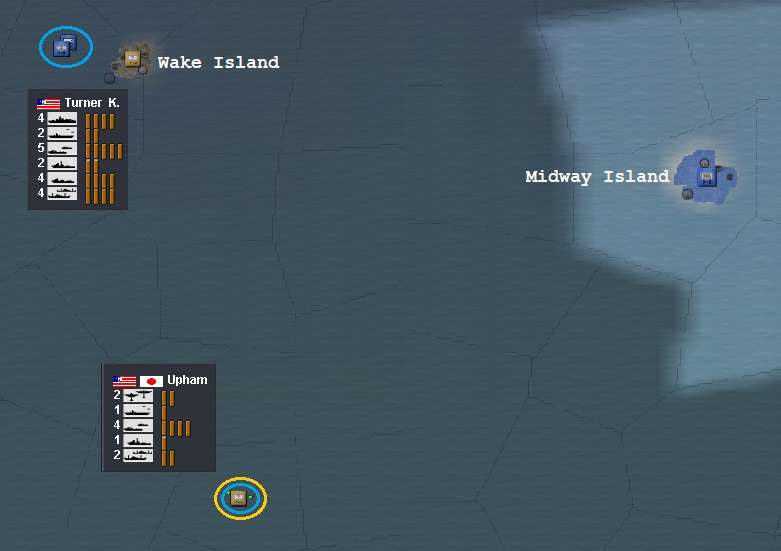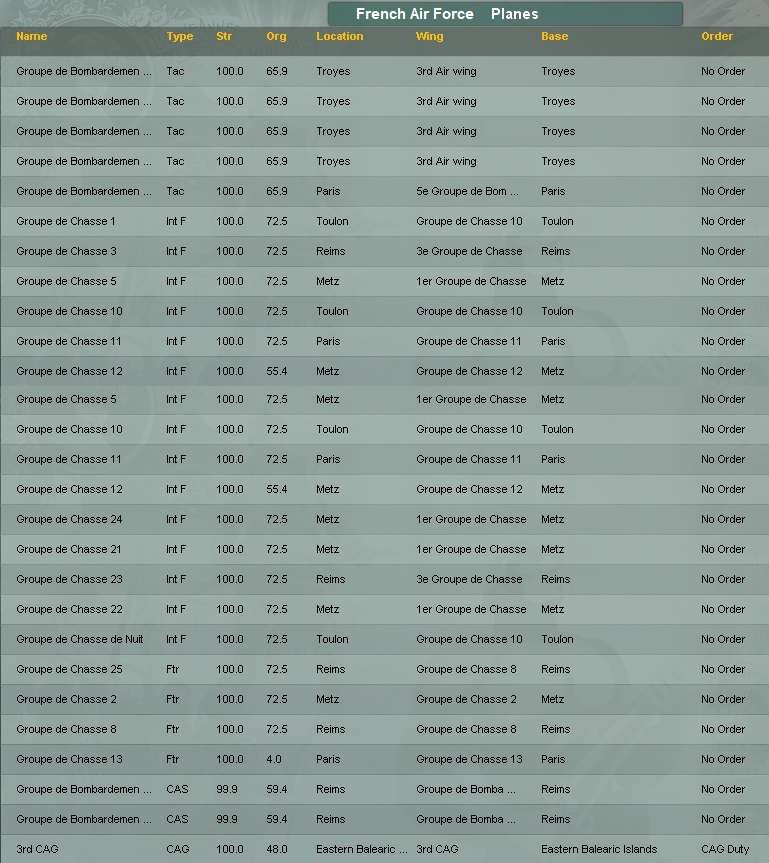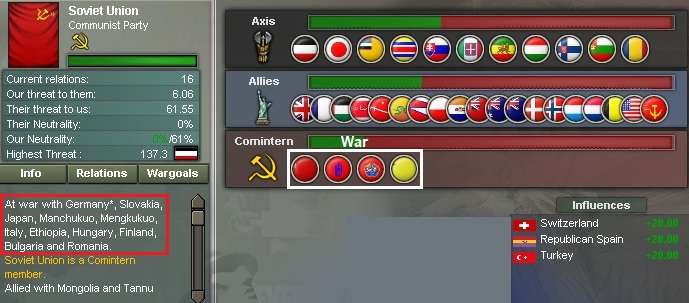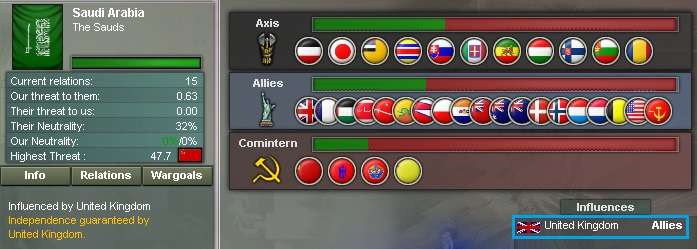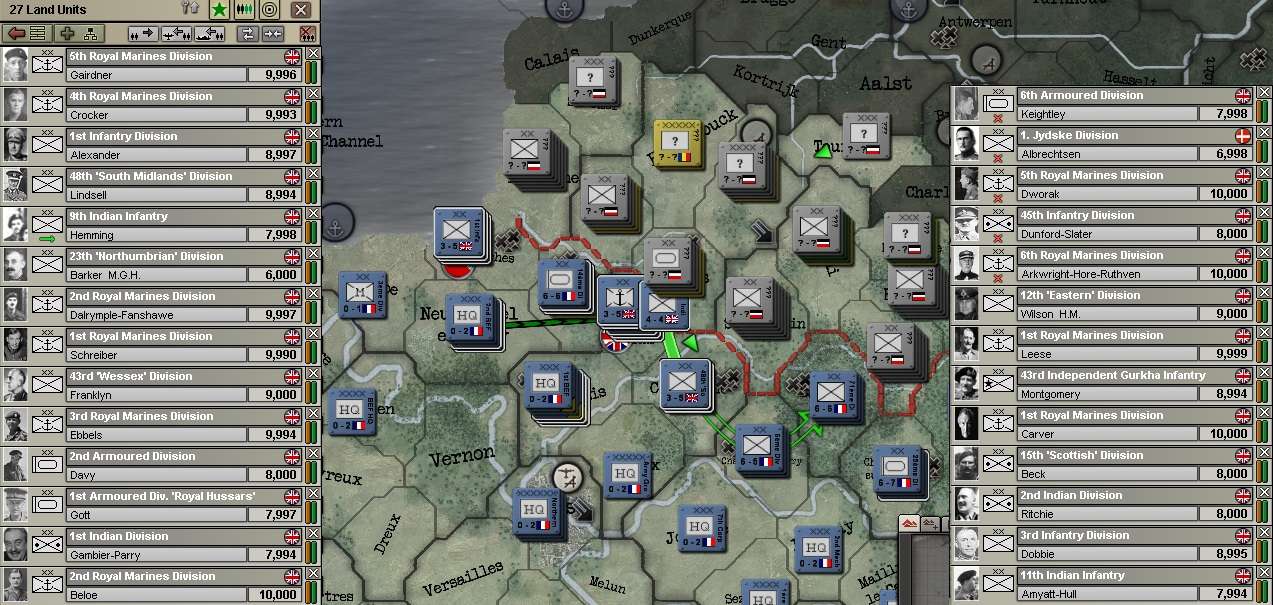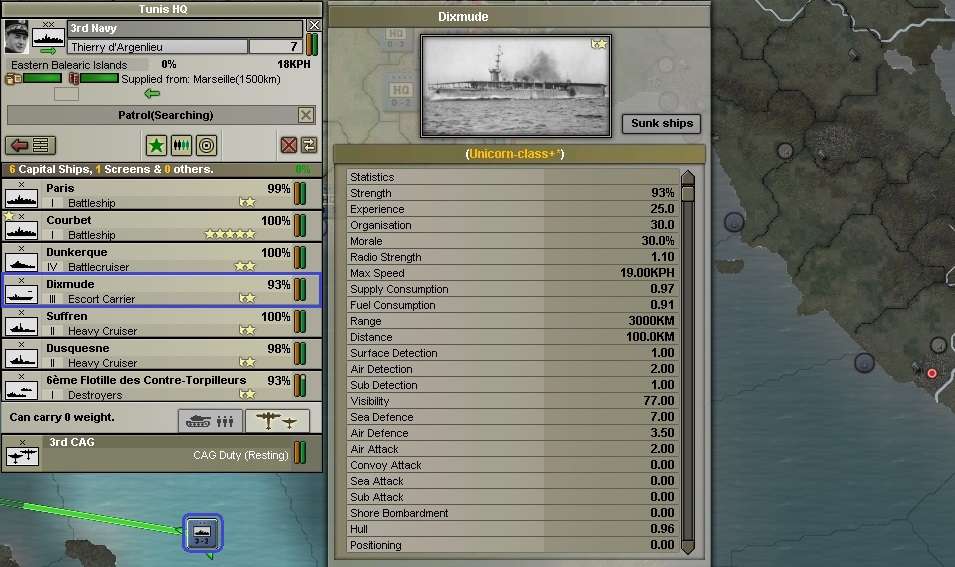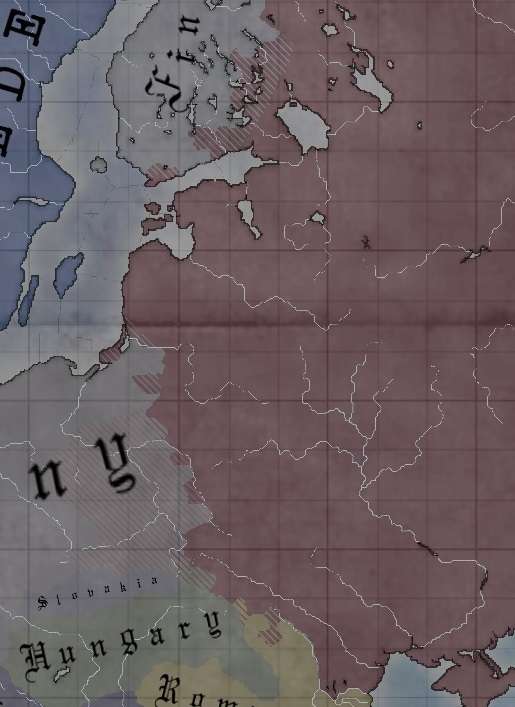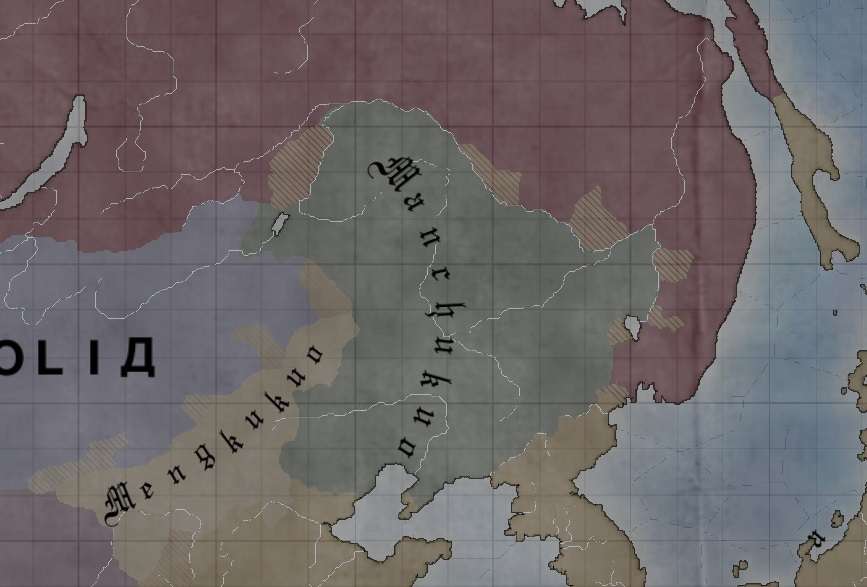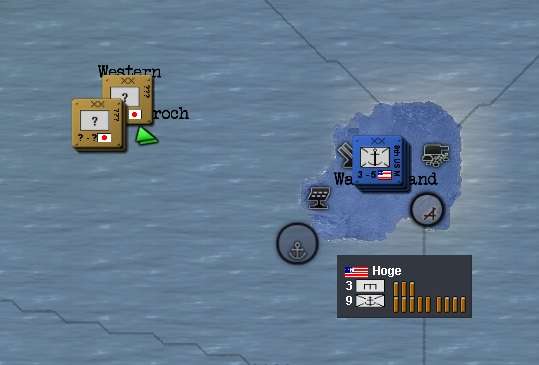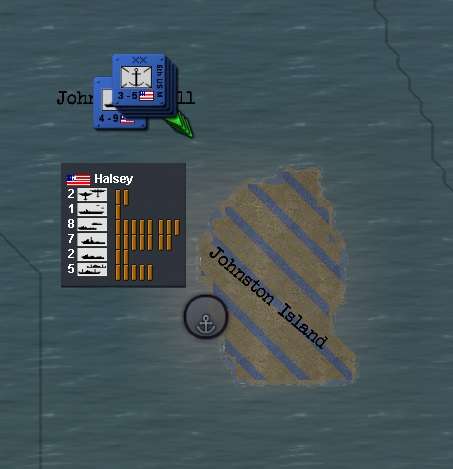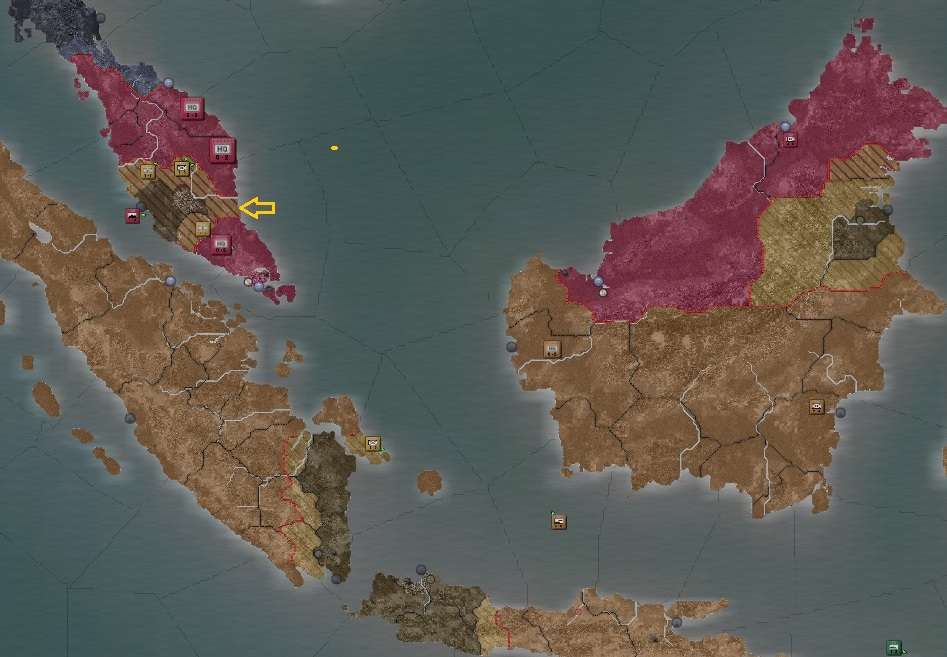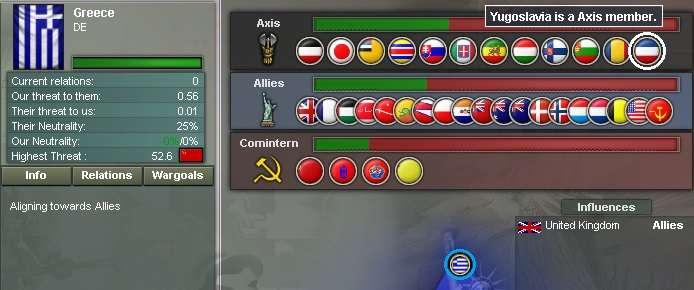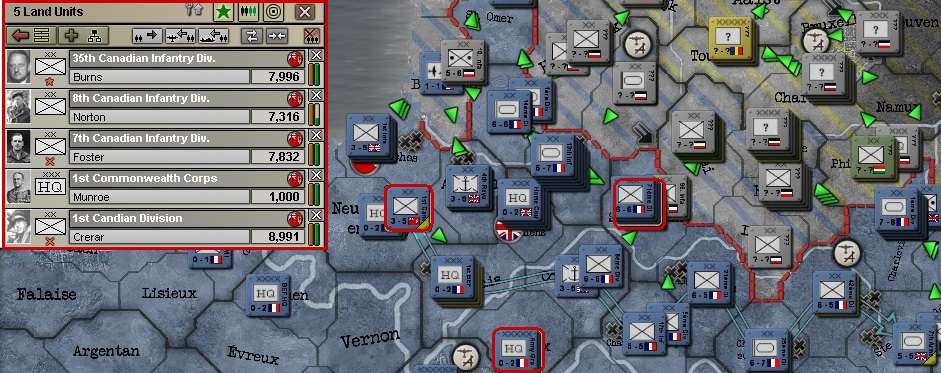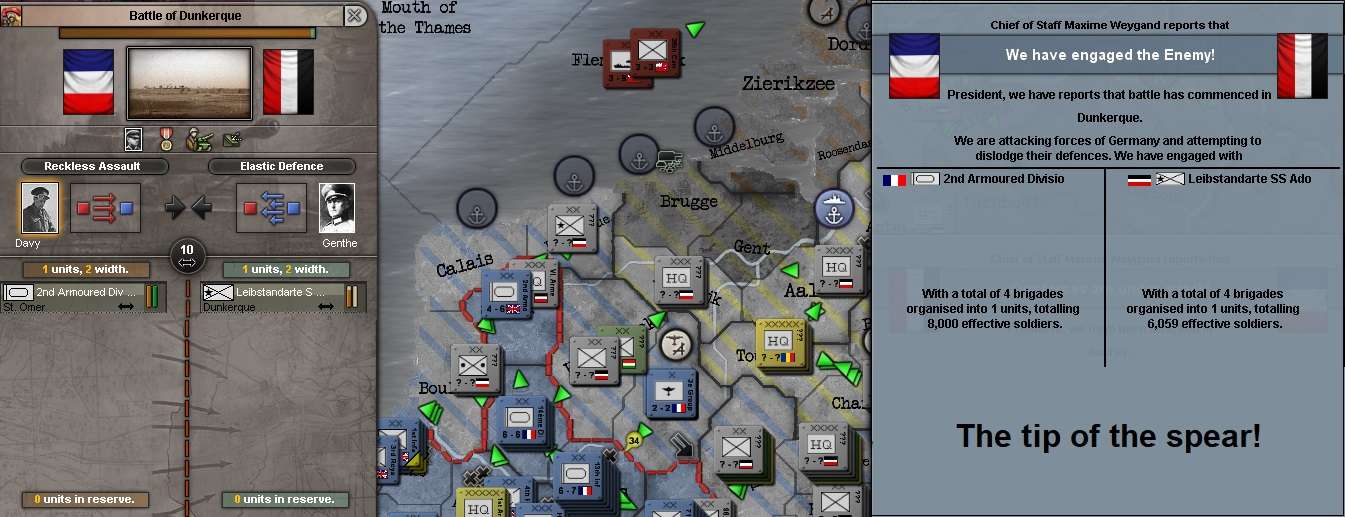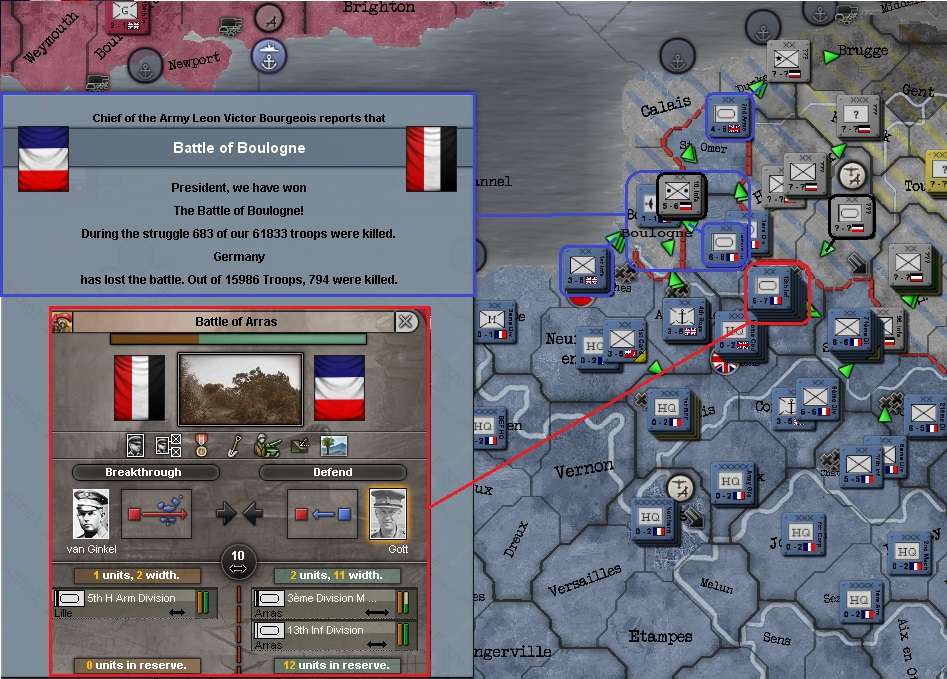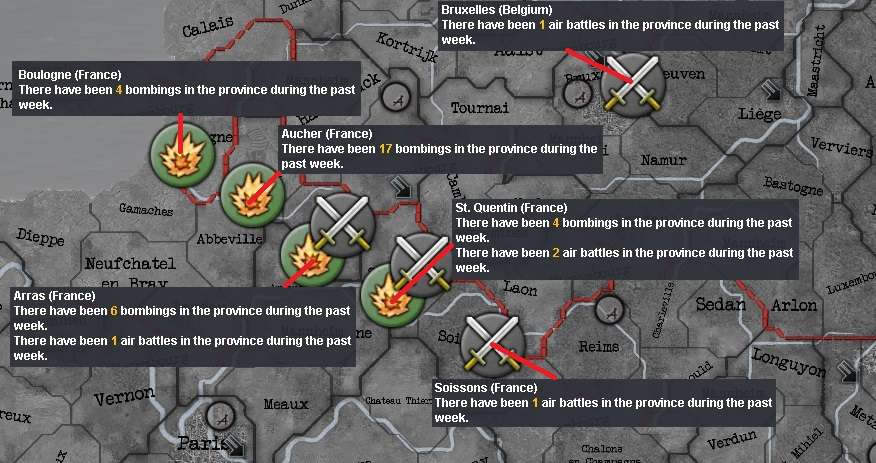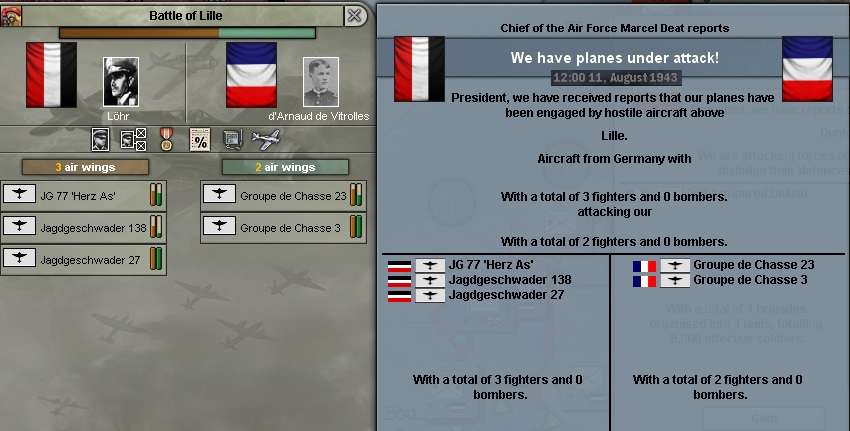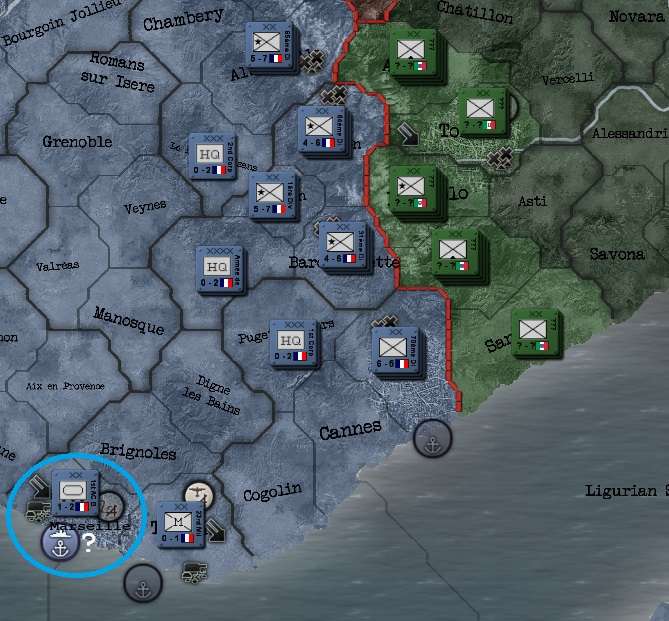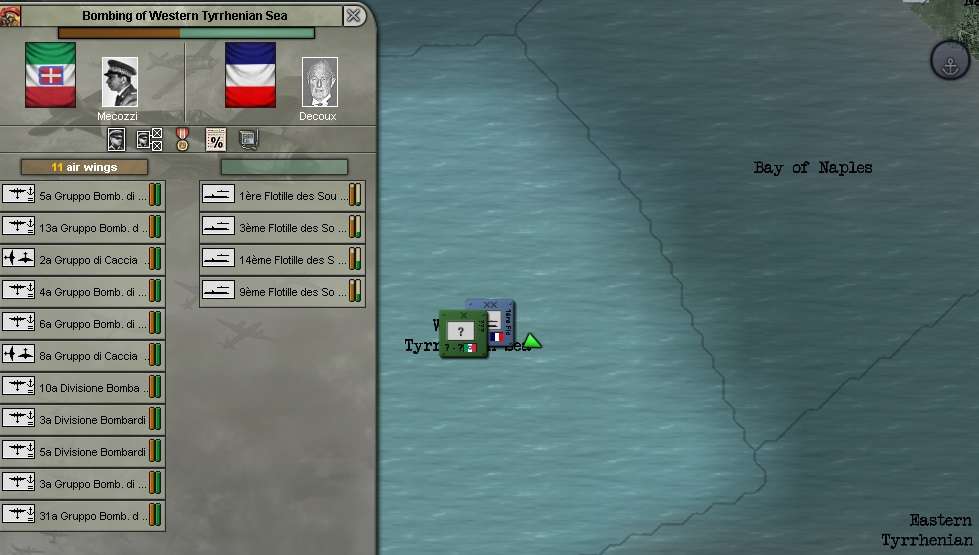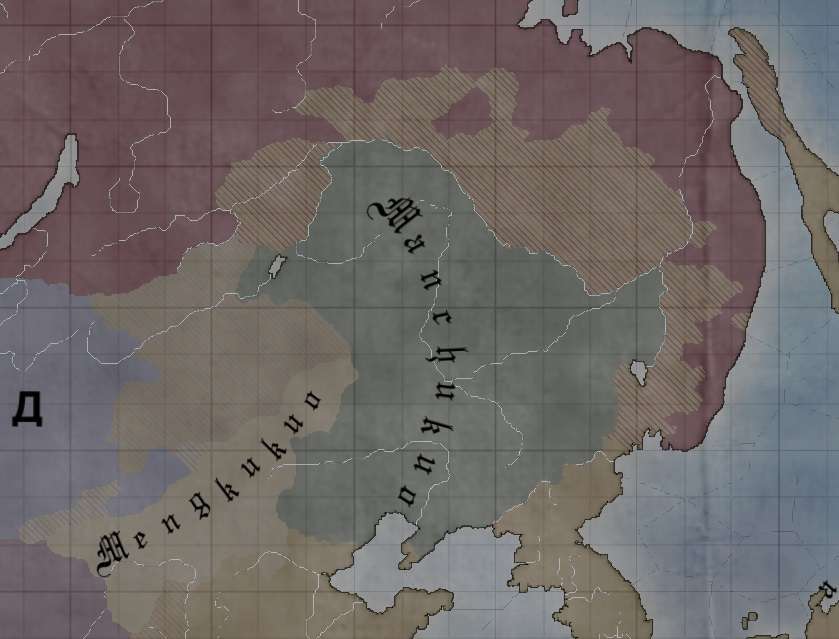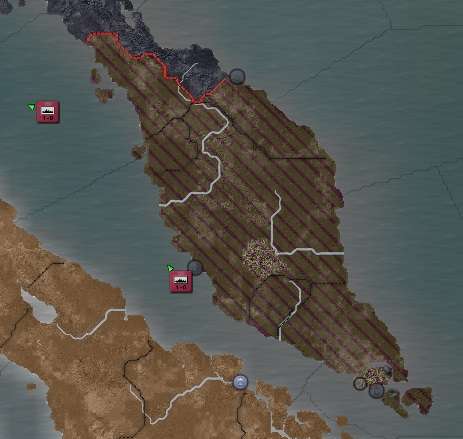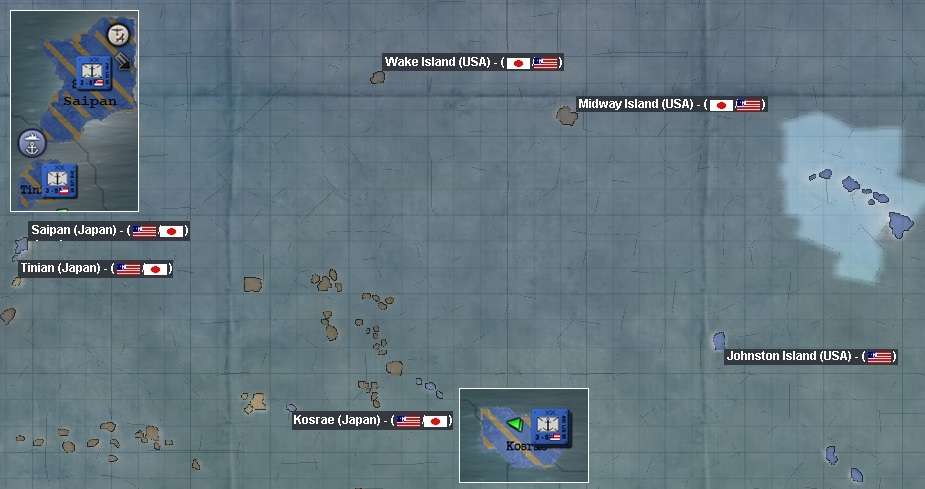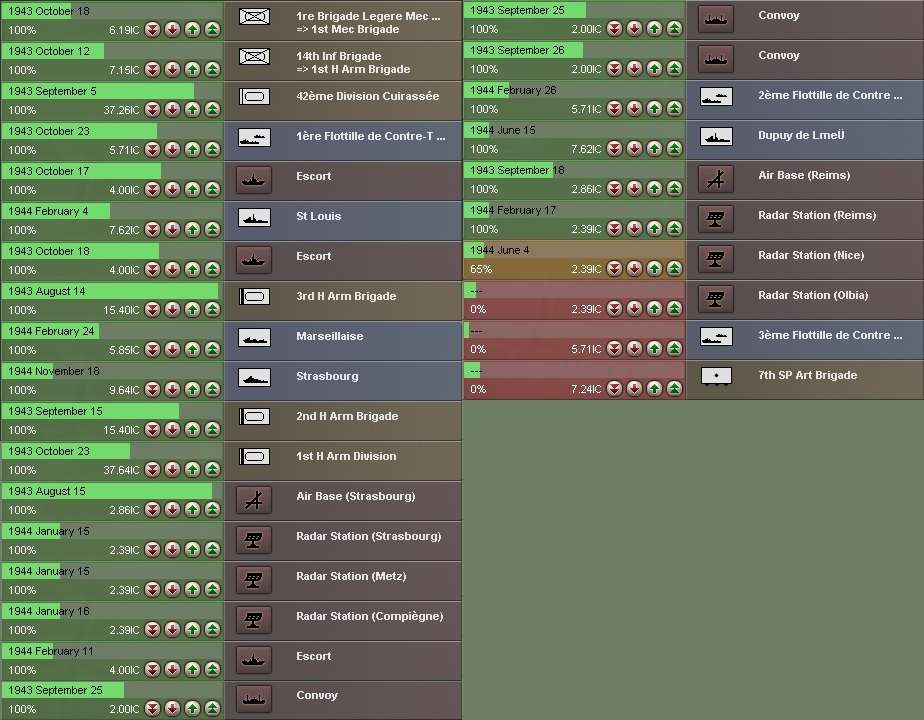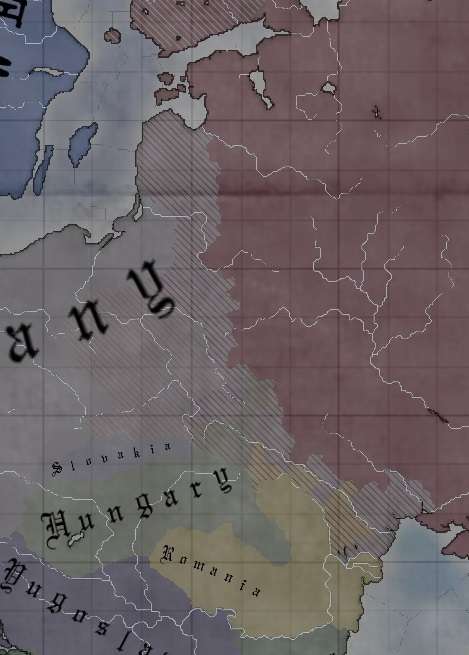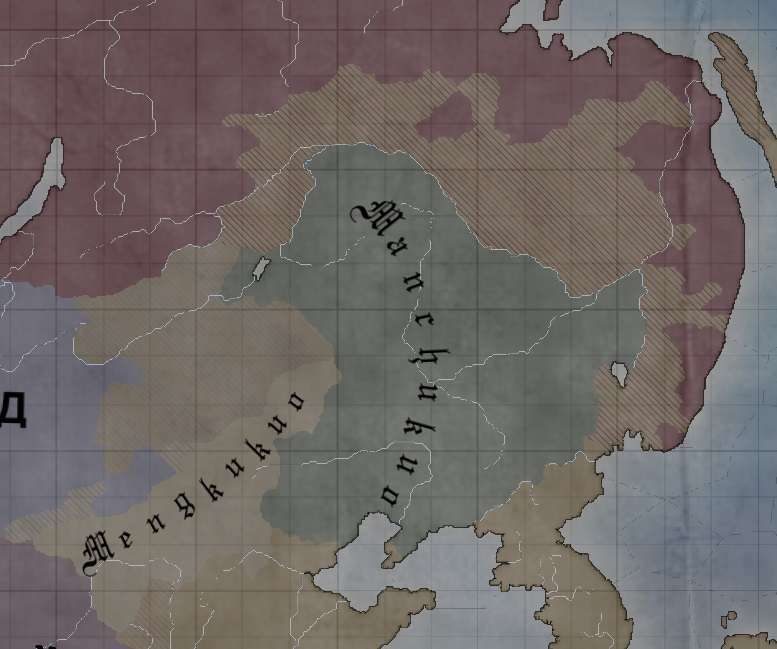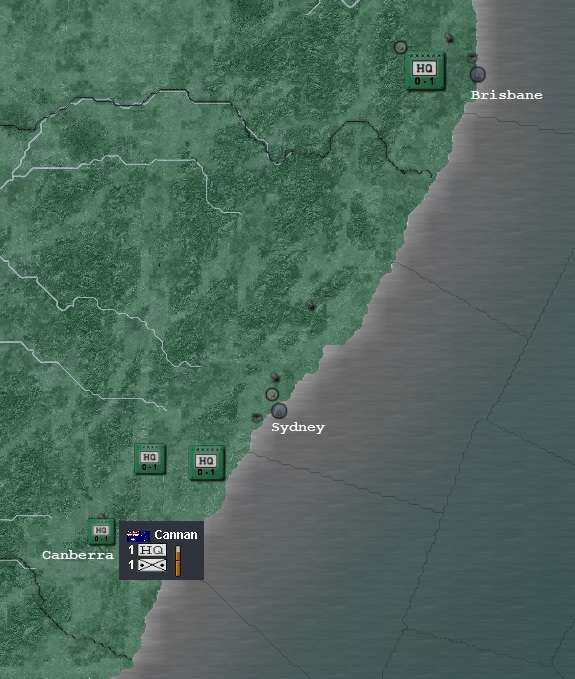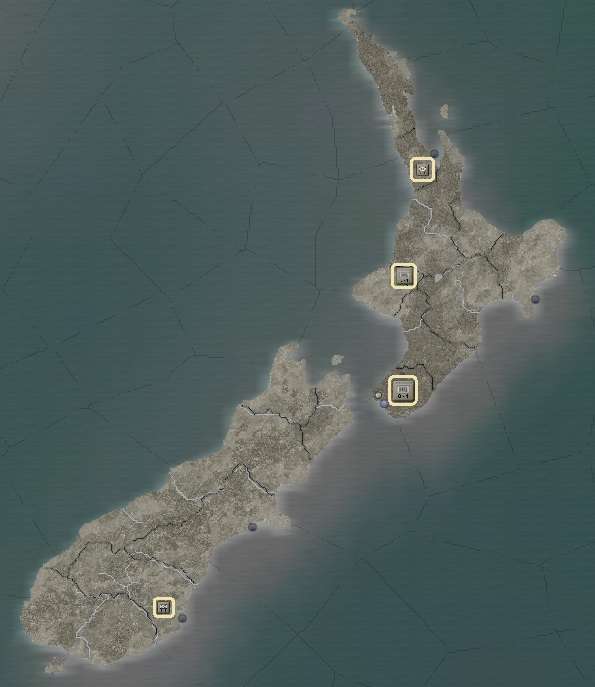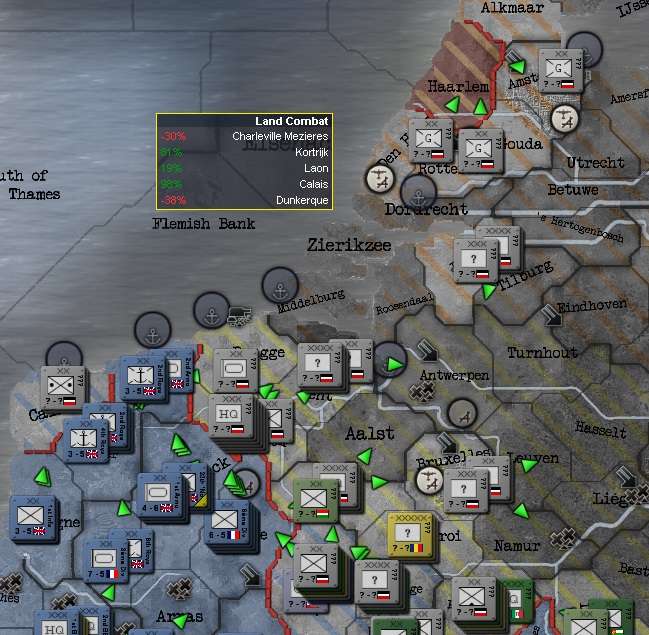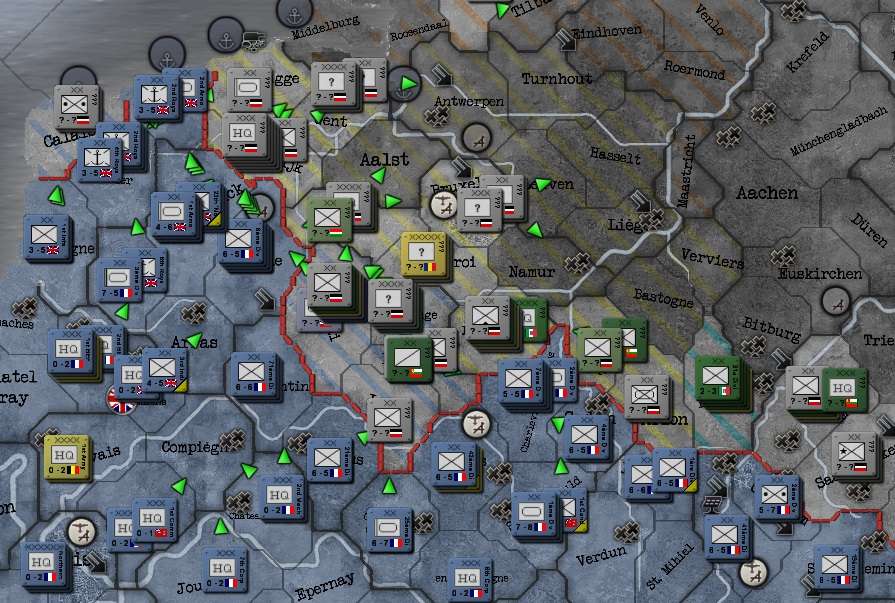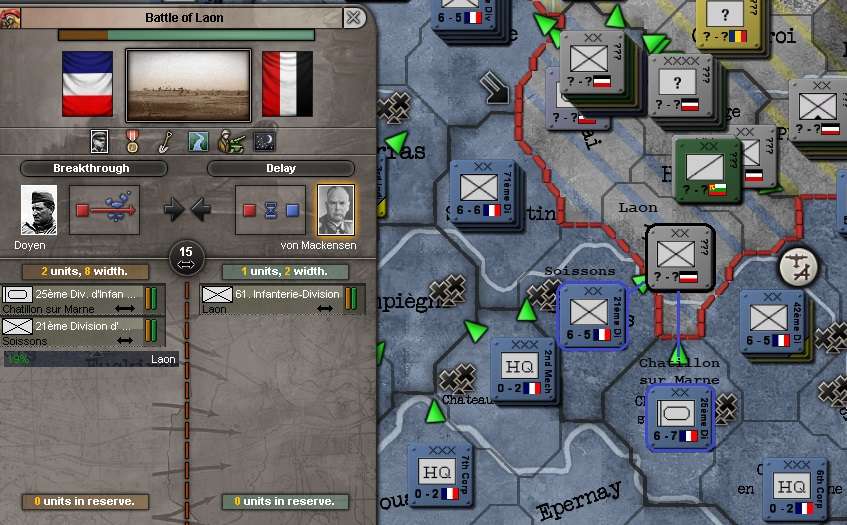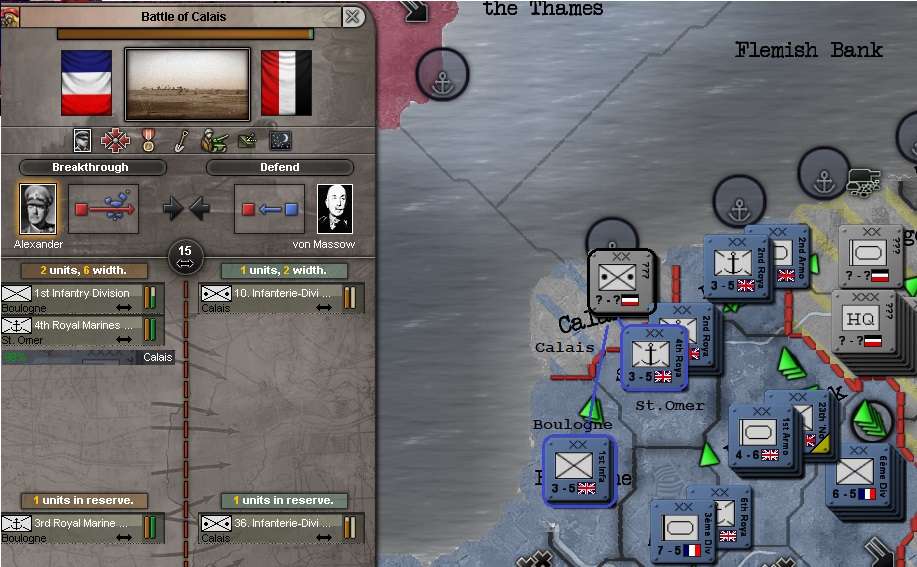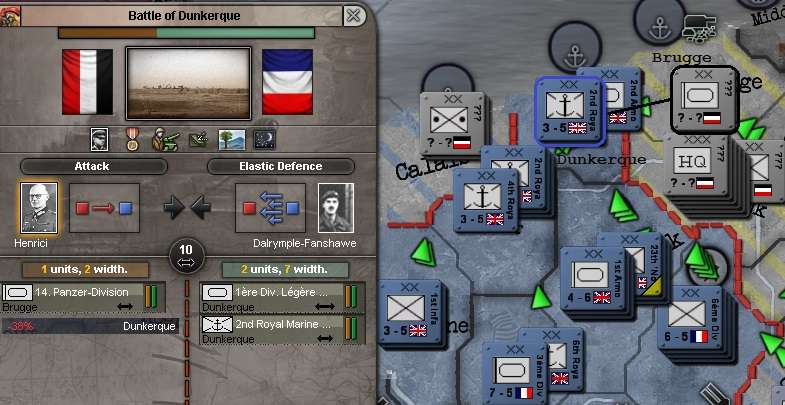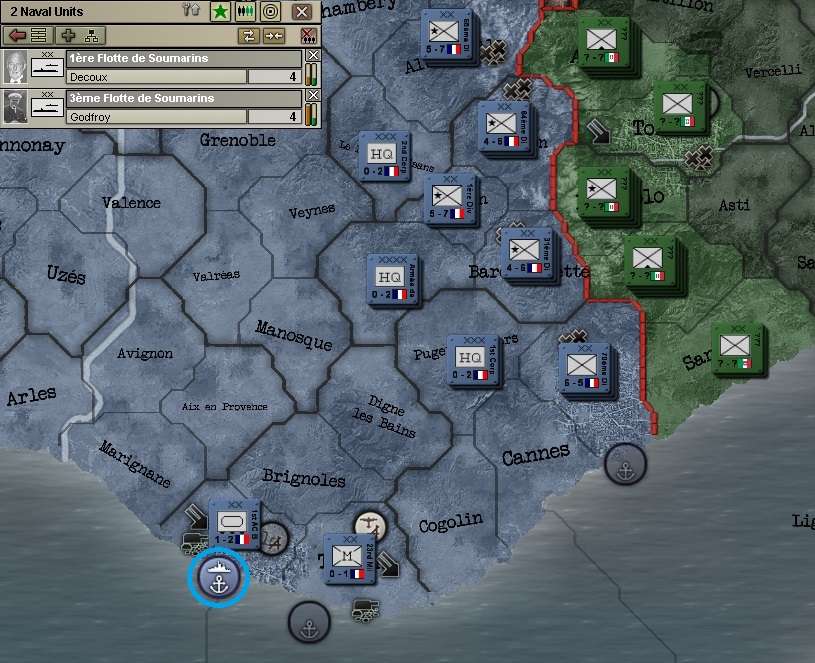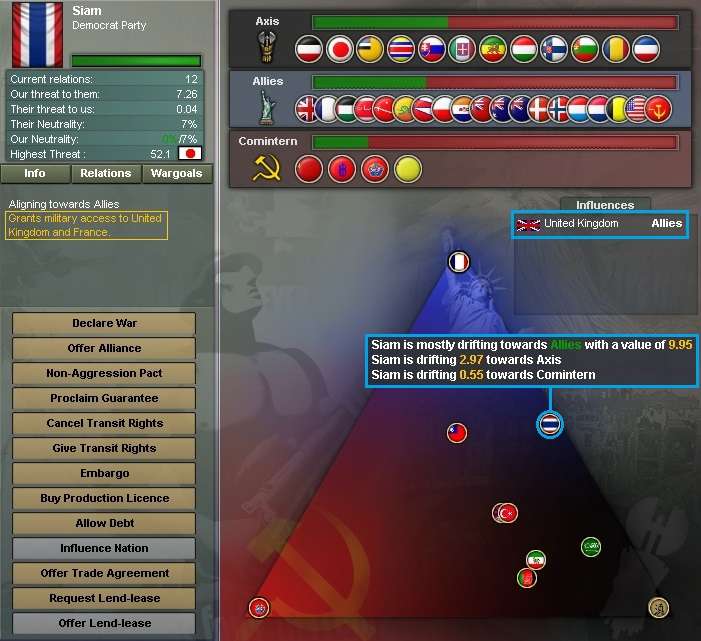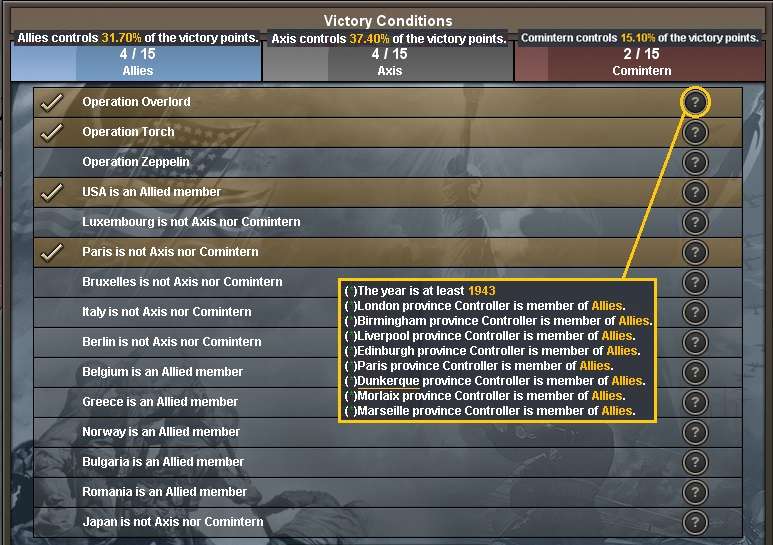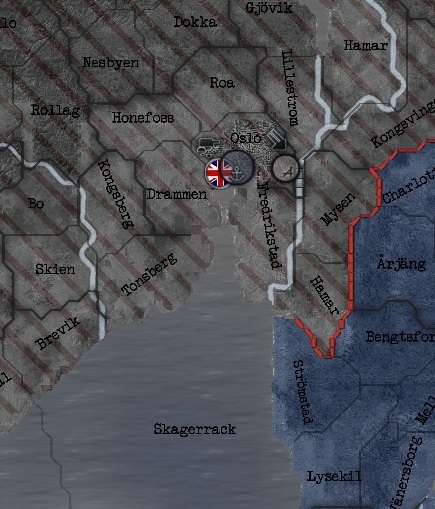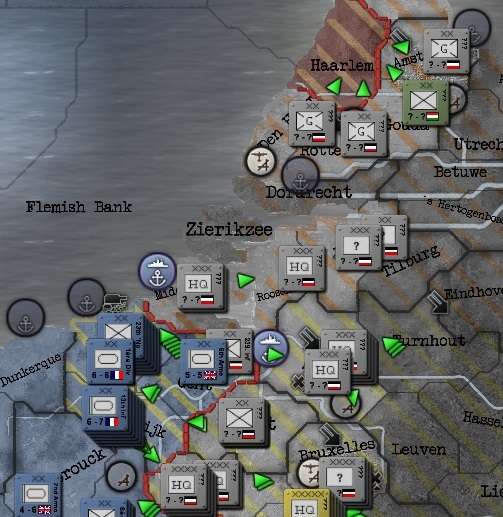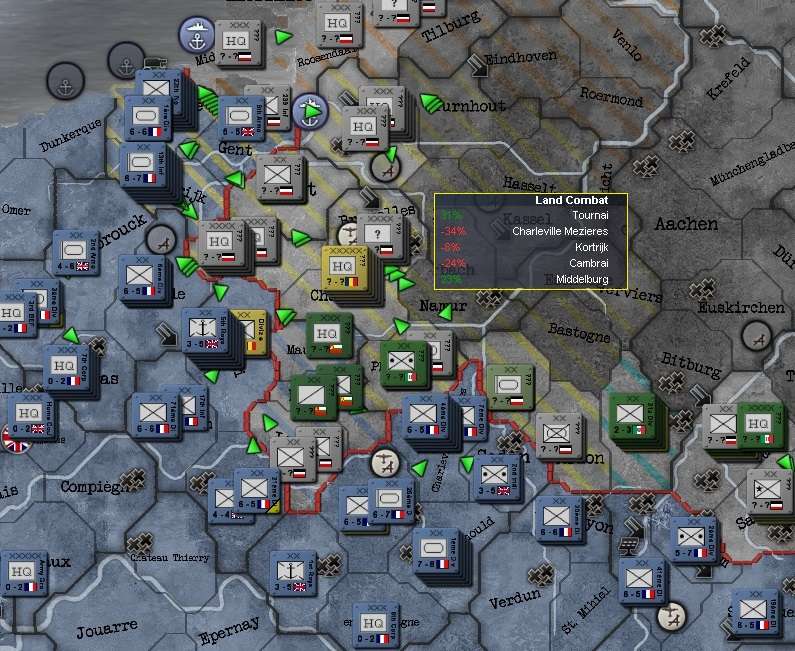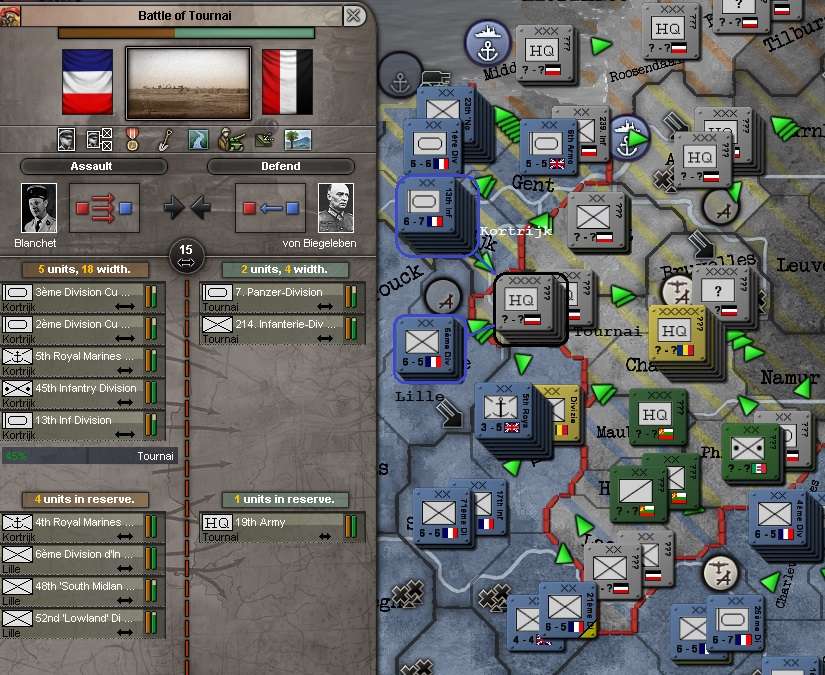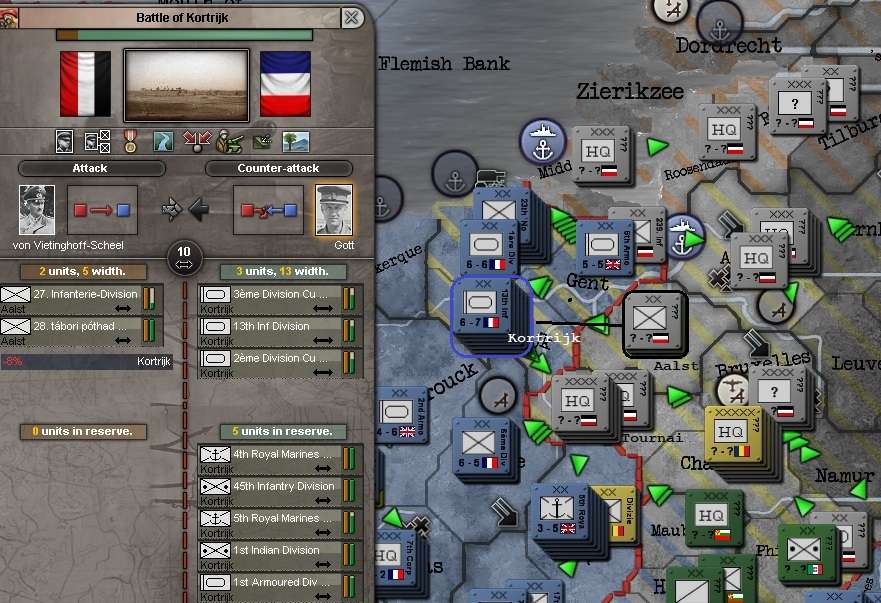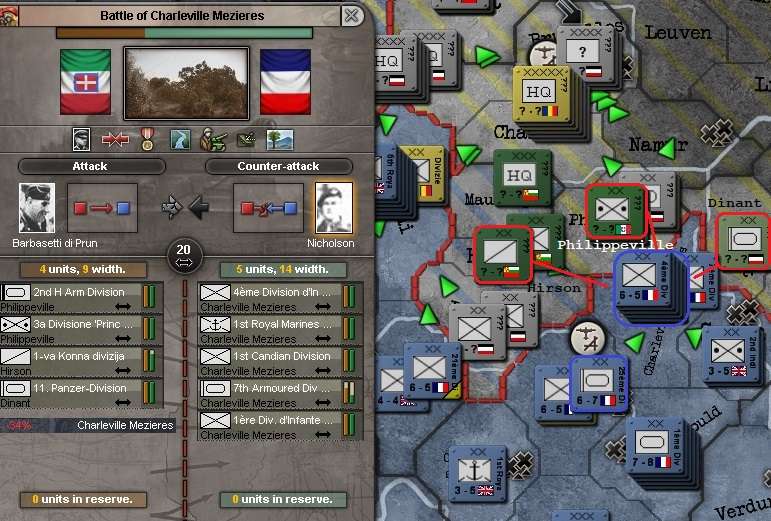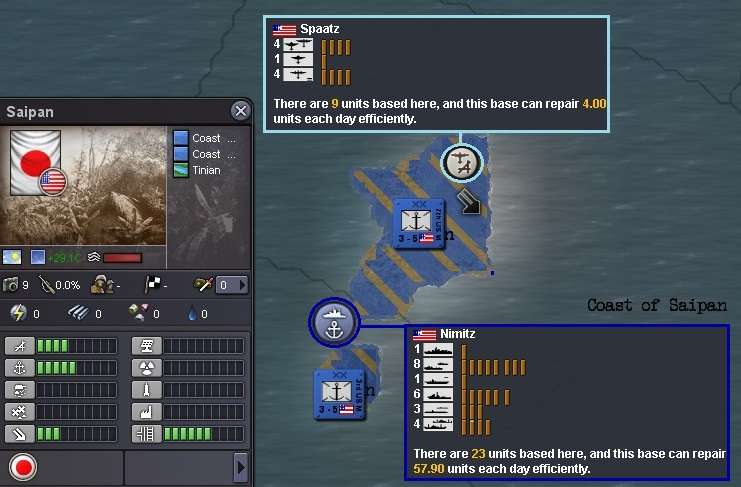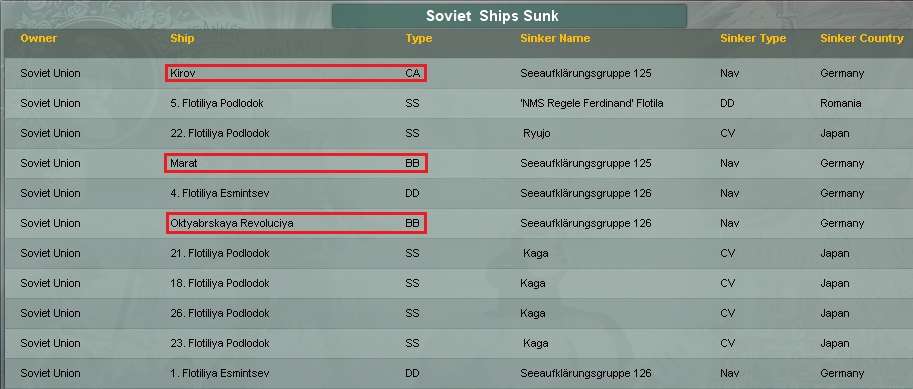Episode 18: 16 to 24 August 1943
OK, a lot to be packed in to finish off August, but will mainly let the pictures do the talking. This was already written, so is going up now so the
"Guns of August 1943" (or
"The Republic Strikes Back" 
) episodes (ie Ch 17 & 18) can be read as a pair.
16 August 1943
Strategic
The Eastern Front sees the Germans with the advantage.
The Far East is worse.
The flame of Resistance still burns in Norway and Denmark.
In the Pacific, the US has taken Rota and retains Saipan, Tinian and Kosrae. But the Japanese have retaken Mili and retain Wake, Midway and Guam.
Because I’ve been asked, our base in New Caledonia is in the vicinity ... and a certain other AAR has NZ invading Australia at the moment (
@markkur's ‘Bitter Fruit’ - on this HOI3 forum, take a look if you haven’t yet!), let’s have a look at their current defences, in case the Japanese do come calling!
A large proportion of their forces are in small garrisons dotted around Northern Australia, Papua & New Guinea and the Melanesian islands.
And there are some sizeable units defending the northern part of Western Australia.
But as usual, there is little near the main population centres of the East Coast. Other than a single MOT brigade in Canberra, there are only HQs between Brisbane and Canberra and nothing further south (off map) in Melbourne. They invite another of those Japanese invasions of Sydney! We hope that doesn’t happen.
So while we're here, we’ll take a quick look at New Zealand as well. Most of their troops are on the North Island.
Nothing new to report in South East Asia: we’re still being left alone in Indochina. A sleeping dog we’ll let lie.
Western Europe
OK, with the preliminaries out of the way, time for the serious business!
First, a broad overview of the main breakout, centred on Belgium. Five land battles are currently in progress.
And here is where things stand on the whole Western Line – the Maginot Line remains quiet for now.
Now we’ll take a quick look at each battle. We are attacking in three and defending in two.
The Battle for Charleville Mezieres continues. The Germans just won’t give up on it. France keeps cycling units through in an effort to hold it. Last time (five days before), two French armoured divisions were defending and the 10th and 52nd Inf Divs were trying to reinforce and the 7th Inf Div was approaching from St. Menehould. Now the armour has withdrawn and
they are defending and themselves beginning to tire, while yet more reinforcements (including fresh Canadian troops)are brought forward. It is a bit like Stalingrad!
A major Allied attack is going in against Kortrijk from Lille and Hazebrouck – it looks like it should succeed.
A smaller attack is being made on the Germans in Laon, but it is over a river against an entrenched defender. So despite superior French numbers and an attack from two different directions, the Germans look ready to defend for a while yet.
The Germans have been cut off in Calais, where they have almost been broken. Thatshouldput two MOT divisions in the bag!
The Germans are trying to relieve them with an attack on Dunkerque by the full strength 14th Pz Div, before the Allies can fully reinforce the gain, but it looks like the British should be able to hold until reinforced.
Aha! So now we know where that amphibious force was being prepared for. Led by a couple of Royal Marine divisions, an Anglo-French assault force is making an opposed landing on the beaches of Messina. They hope to cut off any Italian forces left in Sicily and then begin to work their way up the toe of Italy, opening a second Italian front and diverting forces from the border with Italy – and both the Western and Eastern Fronts.
The 3rd Navy is ordered to provide further support for the invasion fleet.
The southern border remains stable. The French submarines operat8ing around Italy have taken a pounding from Italian maritime air forces and are trying to recuperate in Marseille.
Just a general representation of the air war over the last week on the Western Front and an idea of the intensity. NB: Flemish Bank was where the ill-fated Canadian invasion fleet was stationed until recently. Of particular note, Aucher saw 34 bombings, Arras 41 engagements of all types, St. Quentin 23. The German’s main air base is in Brussels - it has been busy! This intensity continues - the Allies tend to lose far more troops killed by ground attack missions than in actual combat. But the French Air Force is also busy supporting the attack with ground attack missions.
24 August 1943
Our next view of events is eight days later.
Strategic
We’ll take a quick look at who is being influenced by the major factional players. A few points: the Axis (Germany) and Allies (the US) are having a tug-o-war over Nationalist China, and also over Turkey (via Japan and the UK). The UK is very busy in the influencing game at the moment: Republican Spain (a key victory objective country for the USSR) is being influenced by both the UK and the Soviets. A very importantly for our (French) position in Indo-China, the UK are counteracting earlier Japanese influence on Siam, which is granting the UK and France military access – not that there’s any (French, anyway) intention of using it! We’ll take a closer view of that too.
Now that Dunkerque has been secured, the Allies have a fourth victory objective secured (Overlord). The four Axis ones are all in the Japanese sector. Belgium, Brussels and Luxembourg are all in relatively easy reach. Italy and Norway will take more work. That would give nine – another three required on top of that for victory. Berlin is the big goal, of course. Then maybe two of Greece (getting them to join the Allies), Bulgaria, Romania (which could easily fall to the Soviets if the war goes well) or Operation Zeppelin. Taking Japan down would be more difficult and take longer – to be avoided if possible (unless of course they collapse and the US conquers them). The aim is a 12 objective victory, not necessarily taking down every Axis power.
The Canadians and Americans have been given more desirable landing objectives should they want to do something like that (except useful this time). That would really give the Hun some grief – but it is probably highly unlikely they will take any notice of these requests.
And the UK has been asked to retake Oslo.
Western Europe
We can see in Haarlem, to the north of the main breakout, the remnants of another doomed Canadian sortie. It may have diverted some Axis troops in that direction, for a while, but it’s not really a cost-effective approach. The main advance has reached the Dutch border on the coast, Gent has just been taken by the British 6th Armd Div, which is awaiting the rest of the slower moving units to catch up. Calais was mopped up and we’re trying to keep the momentum going, to outflank the Germans through the Low Countries, as they tried to do to us in 1940.
Here is a wider view of the active Western Front, from the coast to Metz and the north of the Maginot Line, with a summary of the battles in progress at that time. Attacking in two, defending in three.
A major attack is trying to take Tournai. Despite a heavy advantage in numbers, the enemy is dug in, behind a river. A hard slog maybe, but with plenty of Allied reinforcements available.
The Germans are doing their best to spoil the attack on Tournai from Kortrijk, but it is making little headway and should be brushed off easily.
A similar story in Cambrai. They’re just being pests, though with more substance here.
And unless reinforced, this attempted Allied end run along the coast via Middelburg won’t bemaking much headway.
And Charleville Mezieres? Yes,
still at it, with yet another rotation of units feeding the hungry beast! The Germans keep finding fresh panzer divisions to throw in, and their Axis partners are also coming to the party. Allied counter-attacking tactics are currently blunting the German attack.
In Messina, the beachhead has been won and two Allied corps (French XIX and the 4th BEF Corps) with seven divisions are ashore, under the command of the 2nd Army.
There have been no changes of territory in the Pacific (or an attack on Australia!

). But the US have established a significant presence on Saipan. Still much work to do in the Asia-Pacific, with Japan still largely ascendant.
And finally, a quick survey of Soviet naval losses to date in the war. All bar one is attributable to either German NAV or Japanese carrier-based air power. Of note, they have lost three capital ships (two BBs and a CA) to German NAV bombers.
No more French losses or victories at sea in the last period. The Japanese have not lost any BB or CV yet, and the US none since losing the USS Mississippi early in the war.
***
There, after a long ‘Sitzkrieg’, it is now getting pretty interesting.



